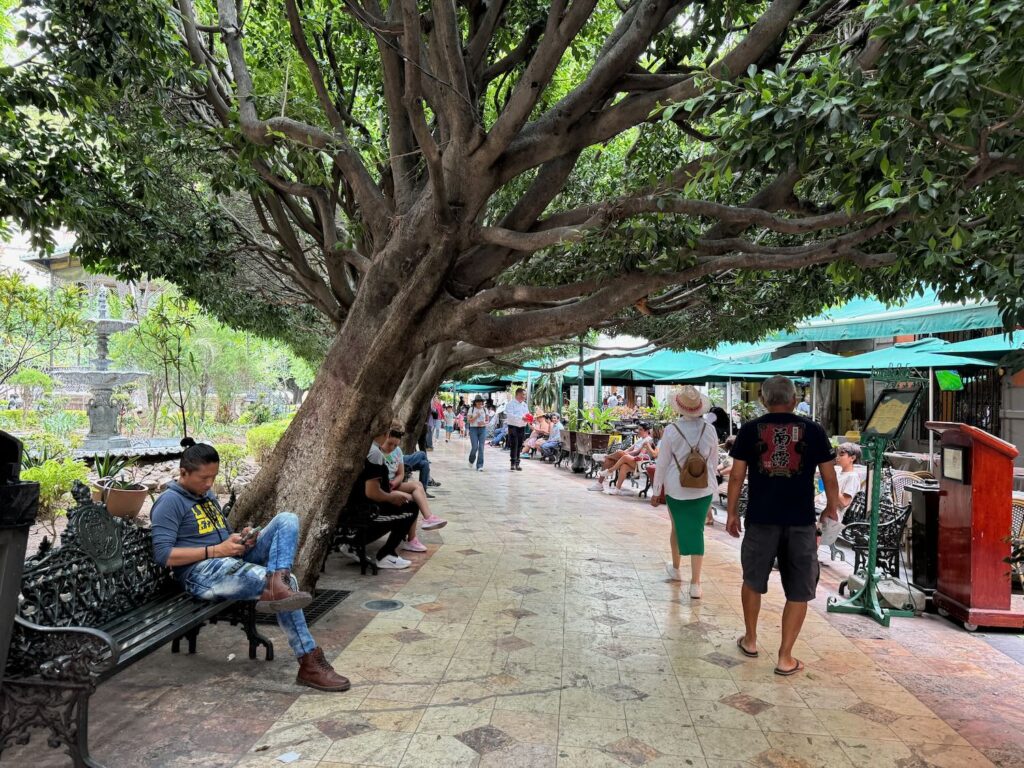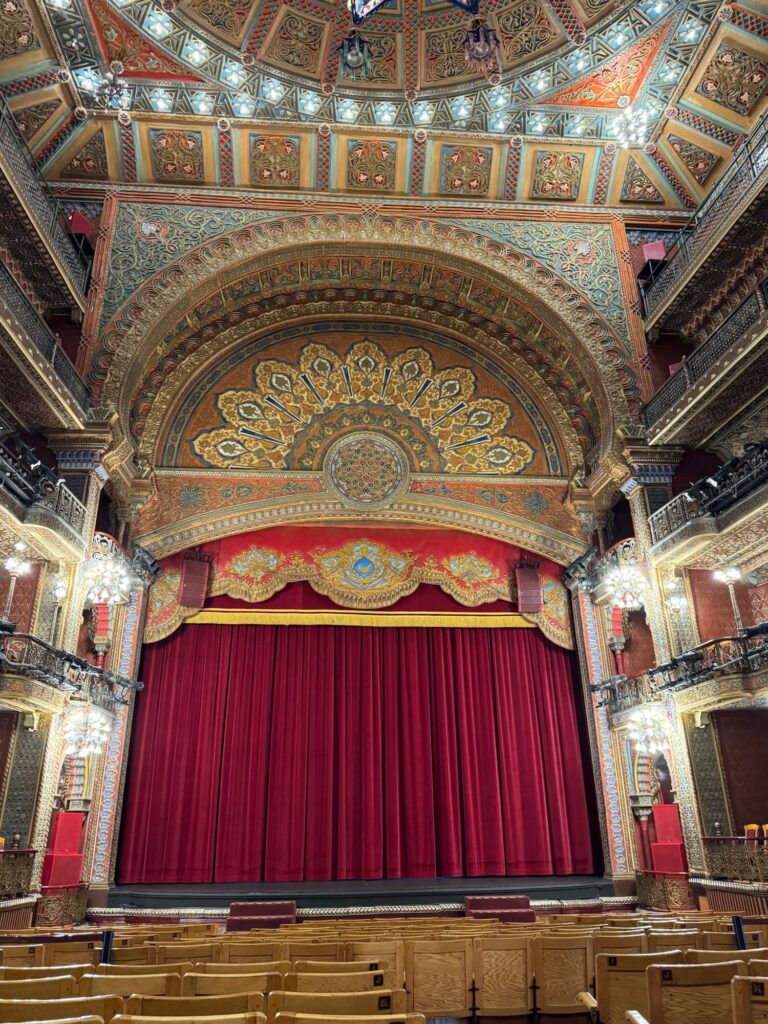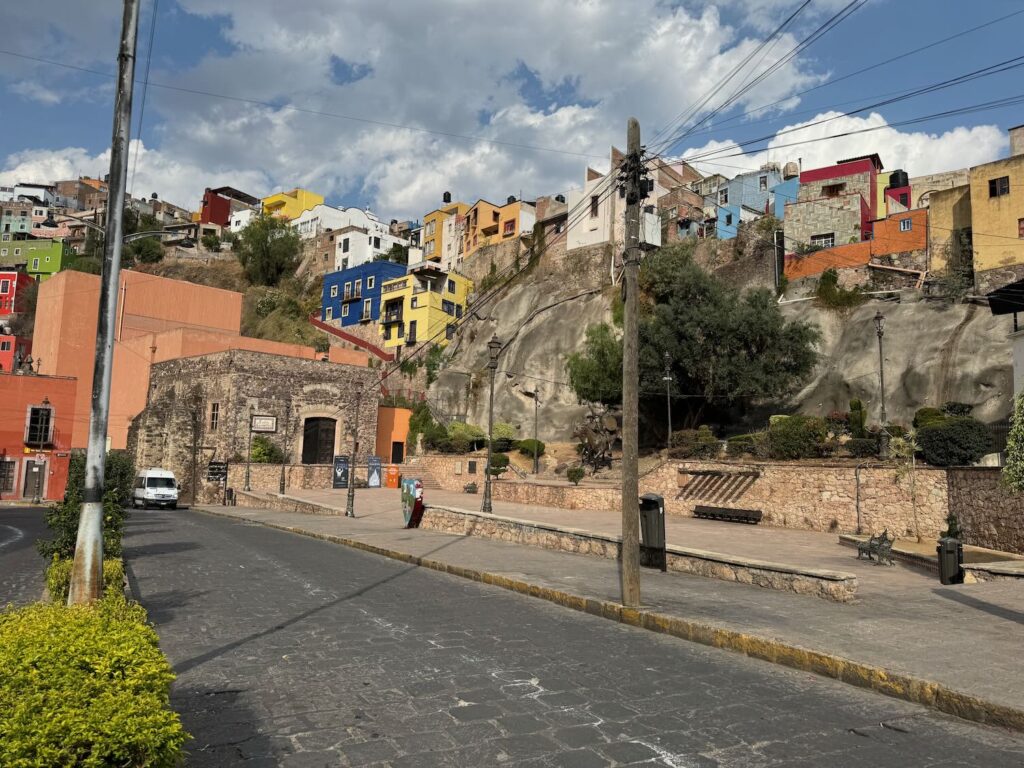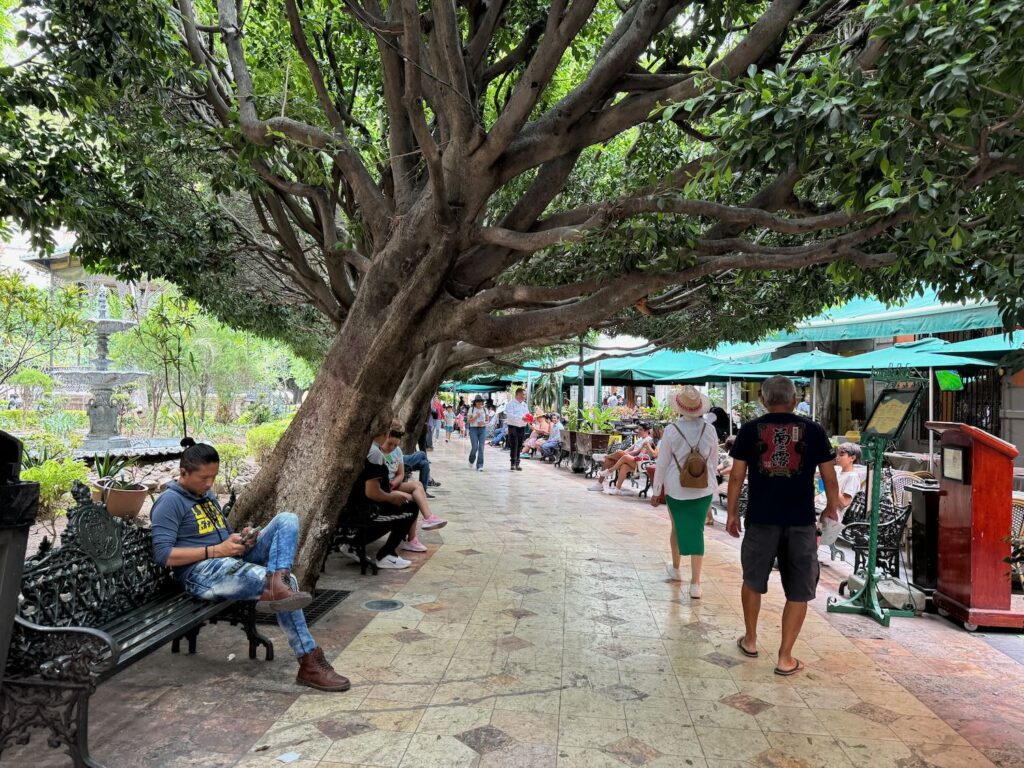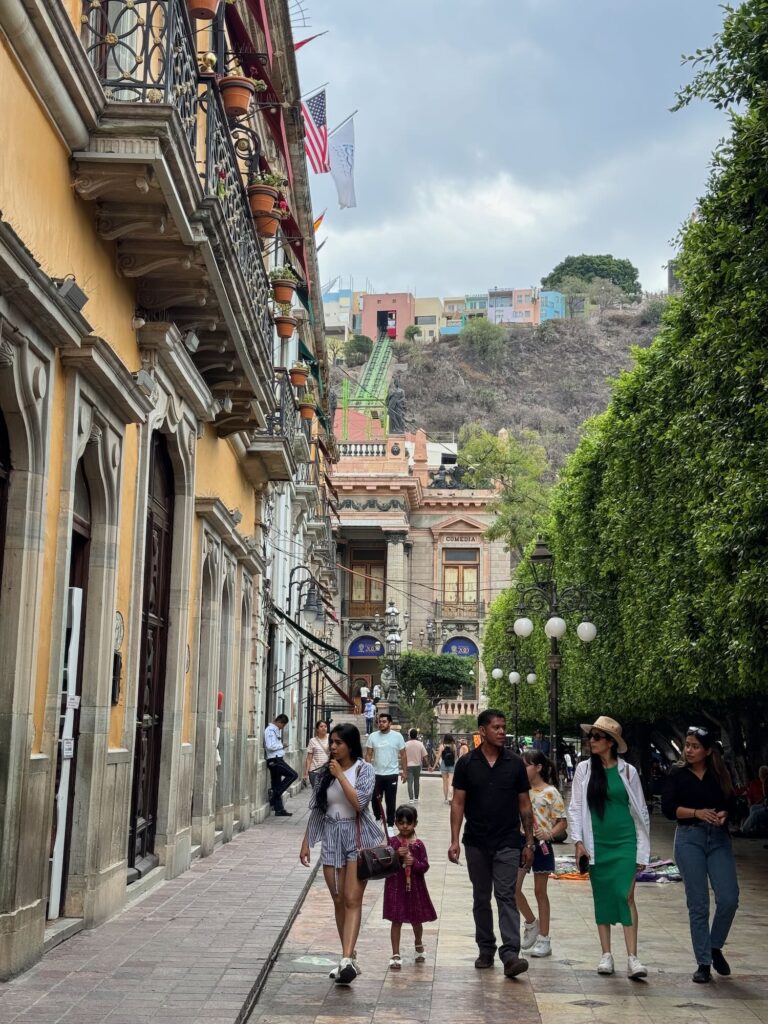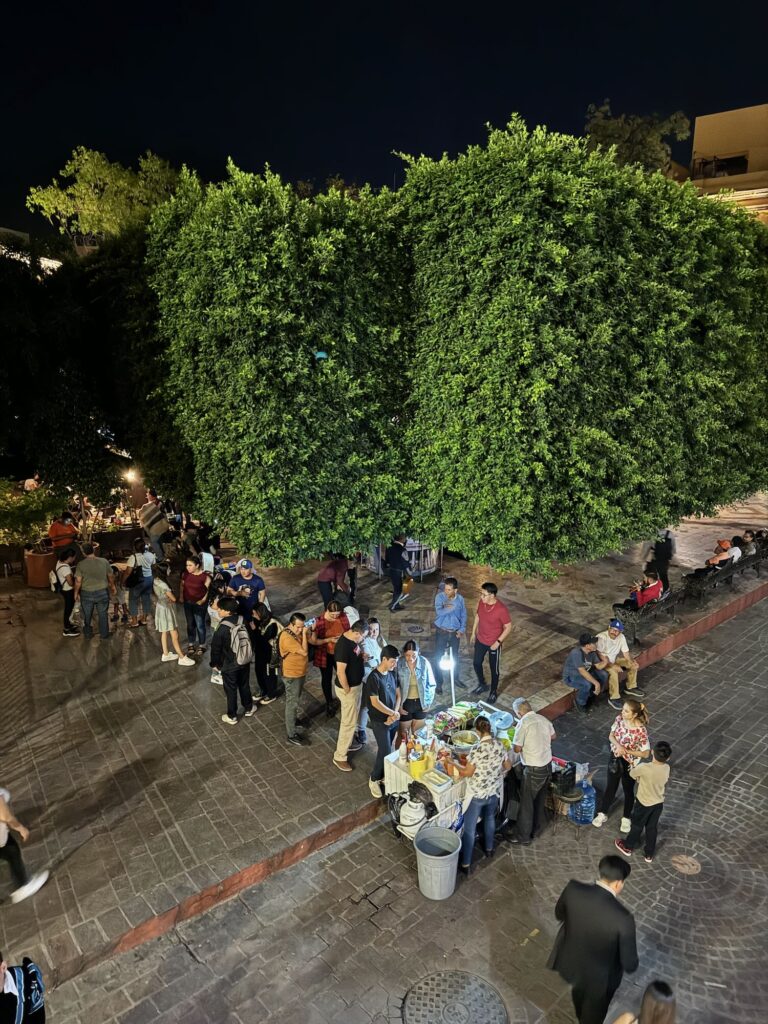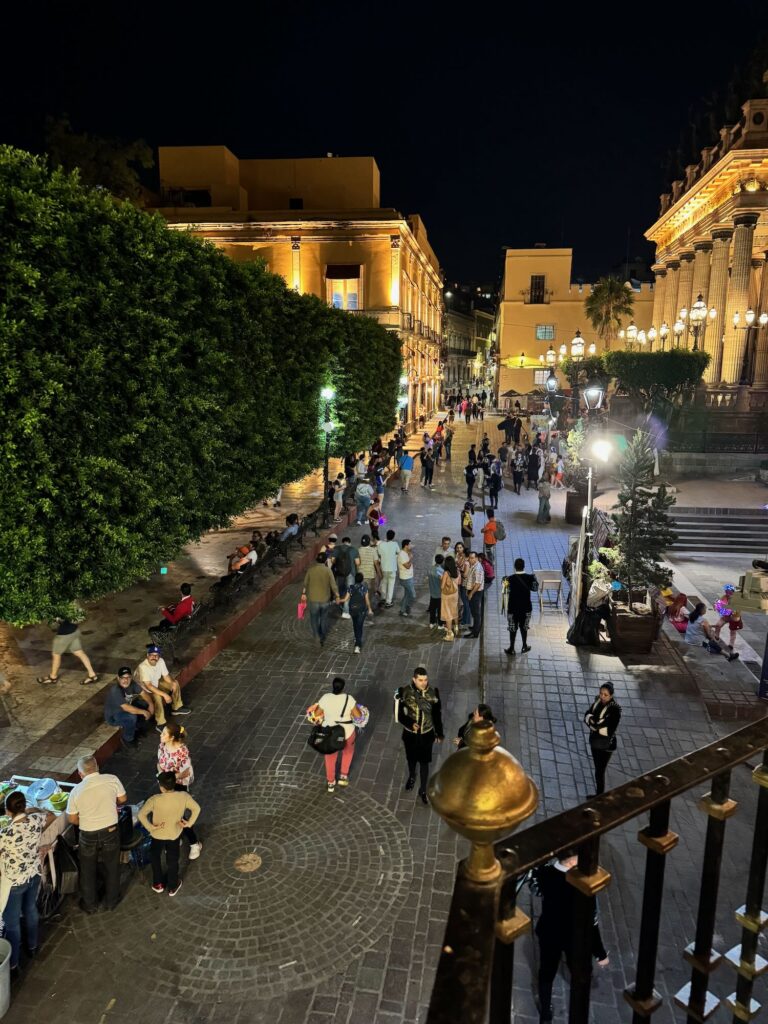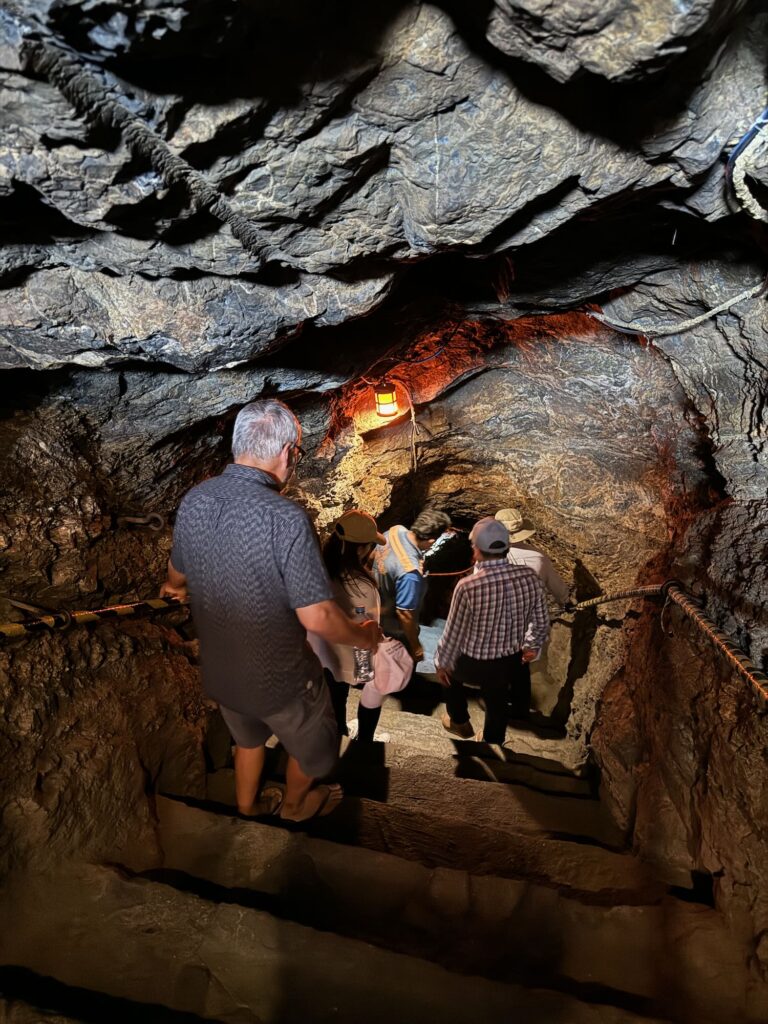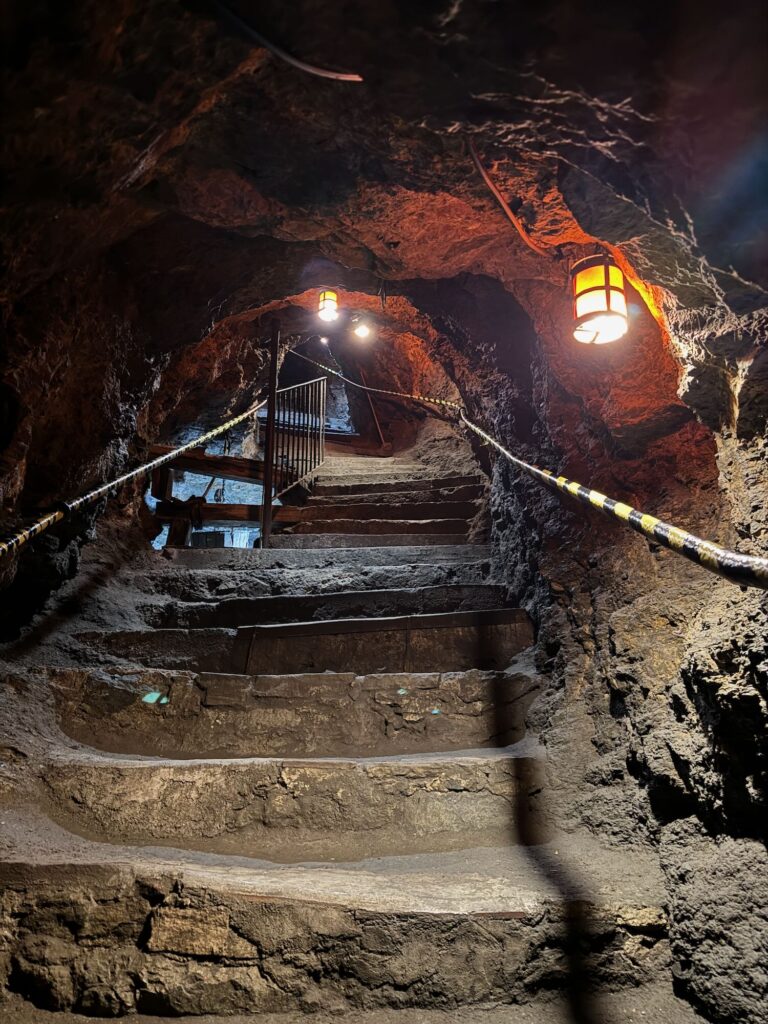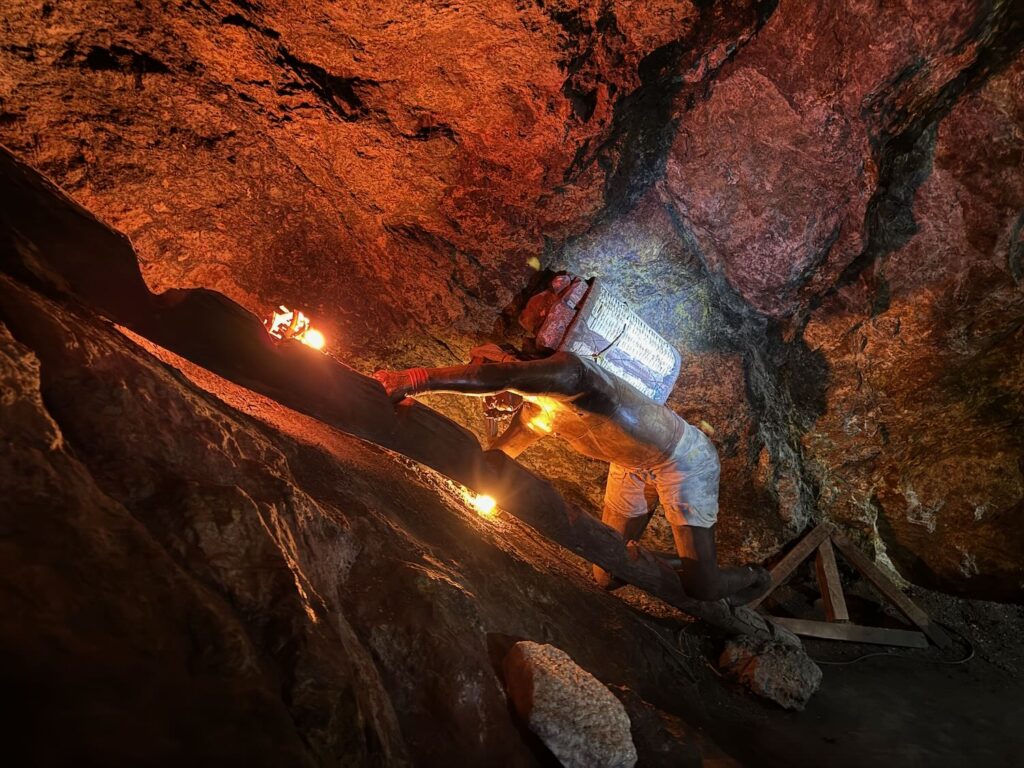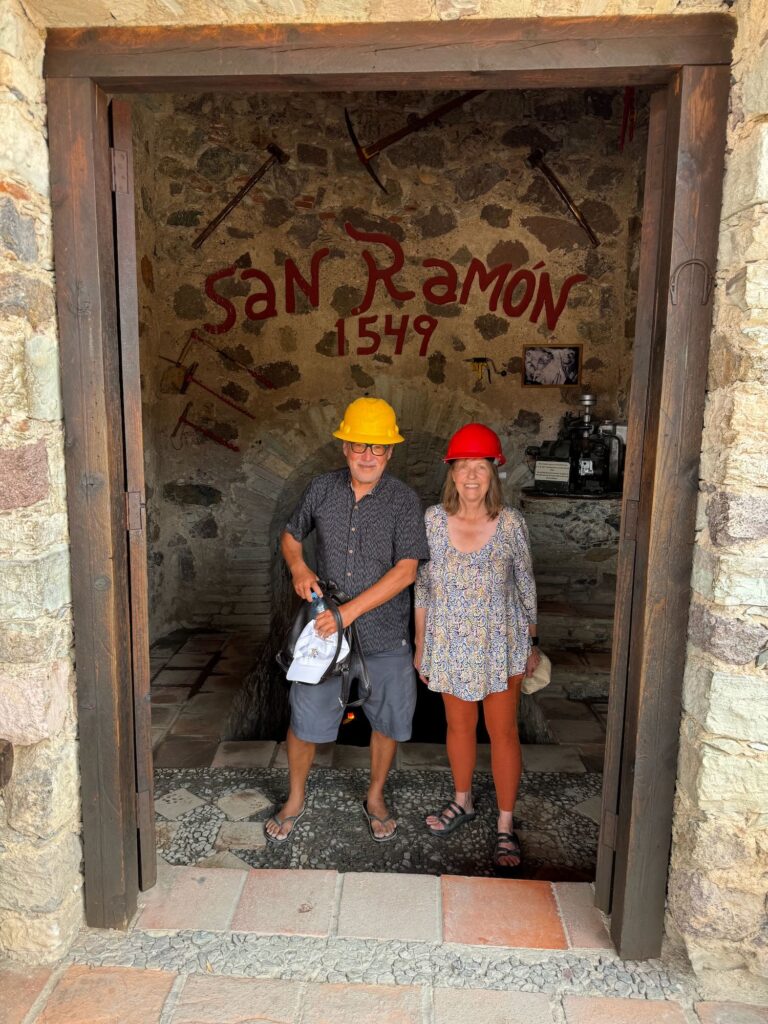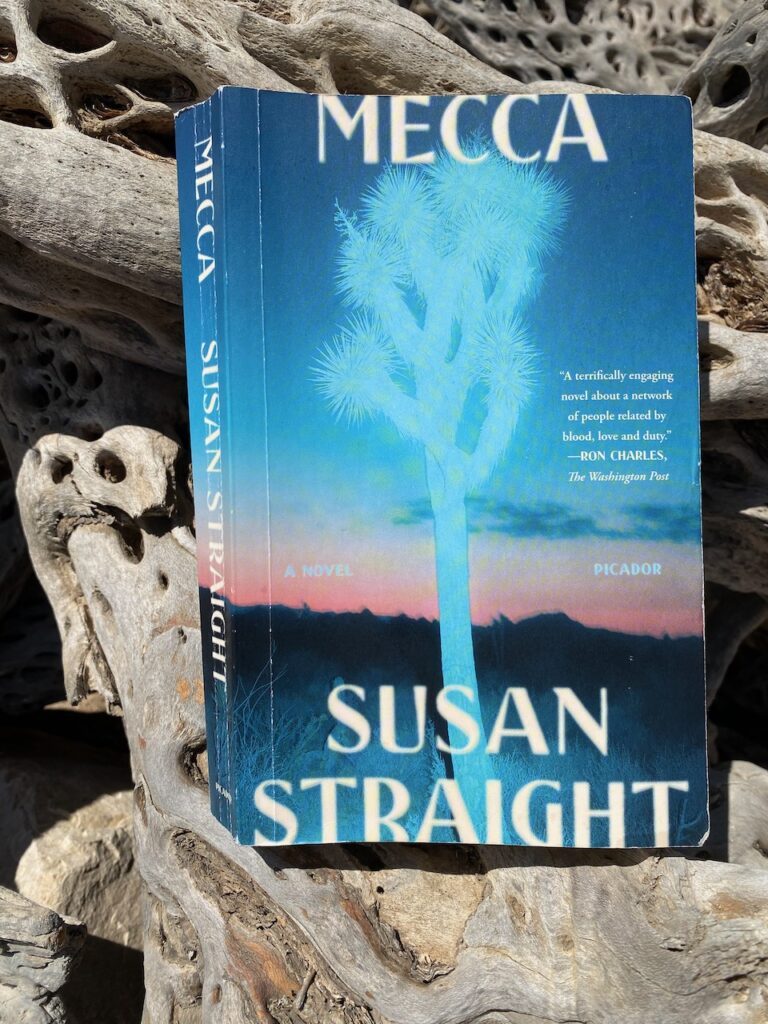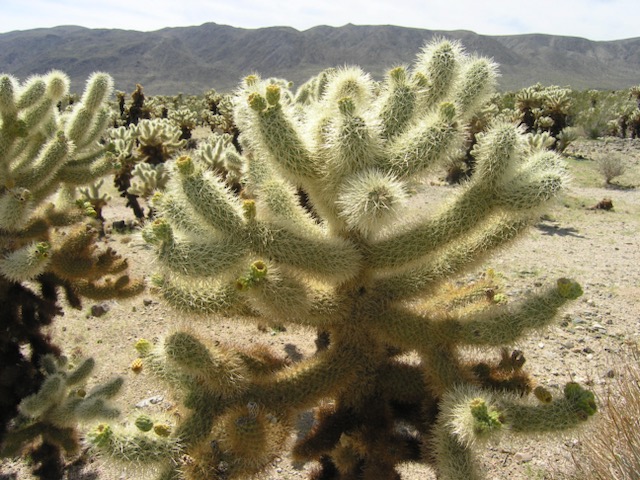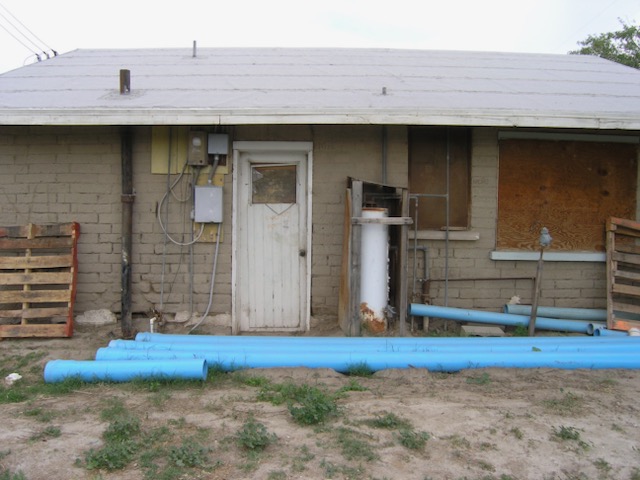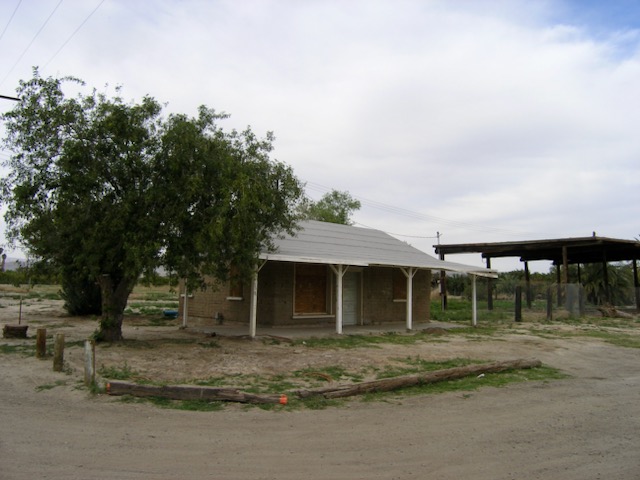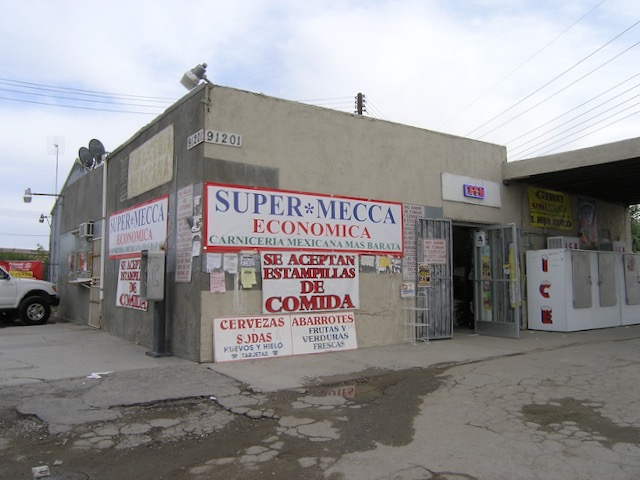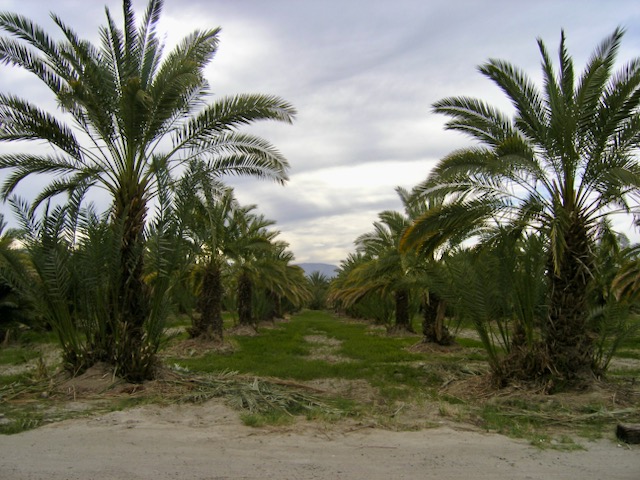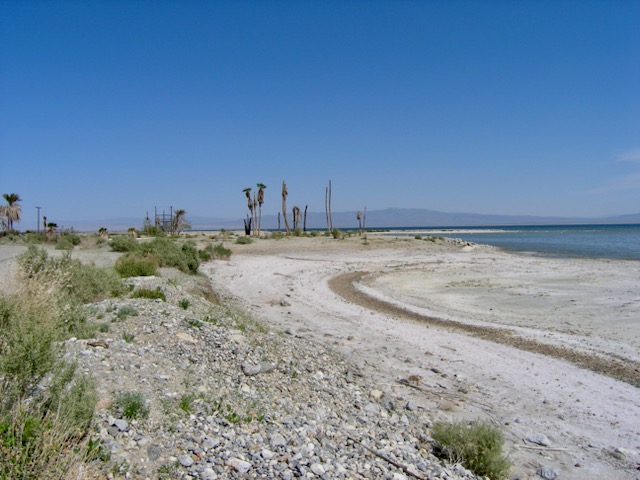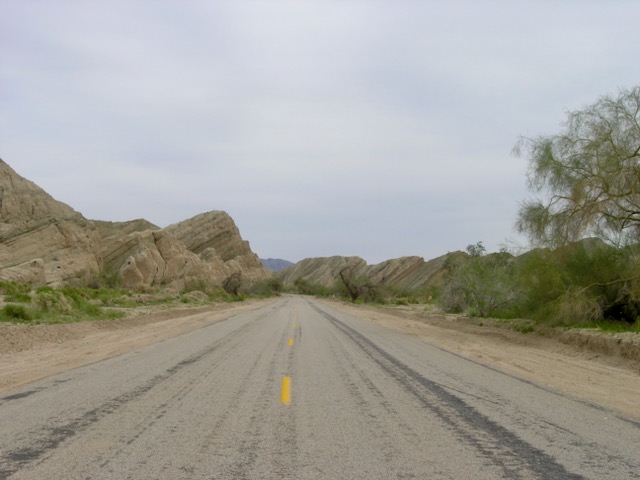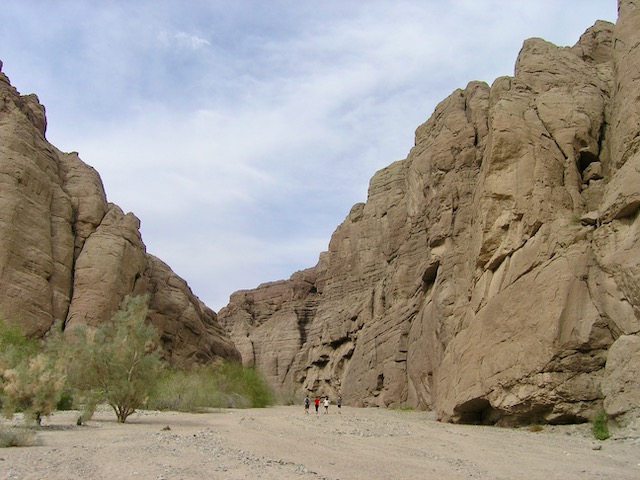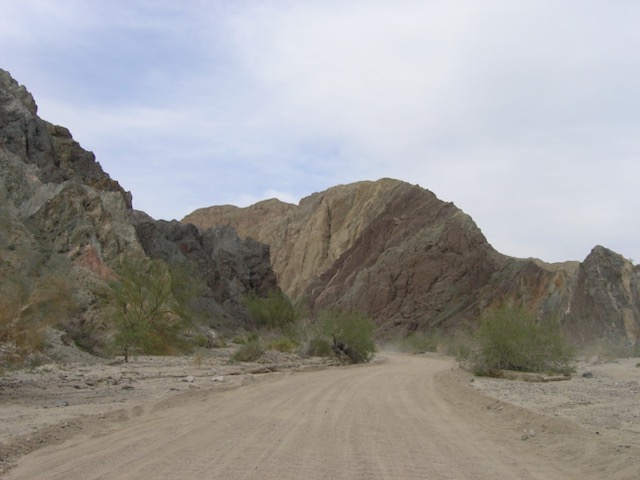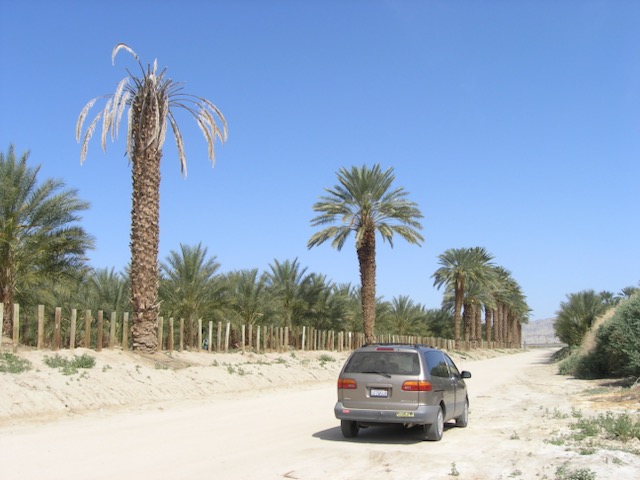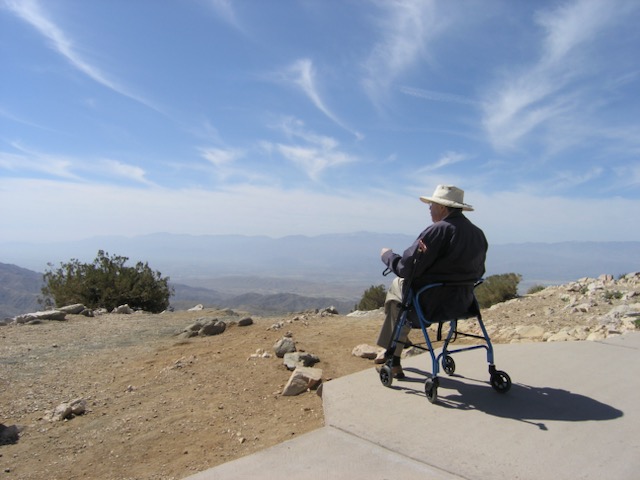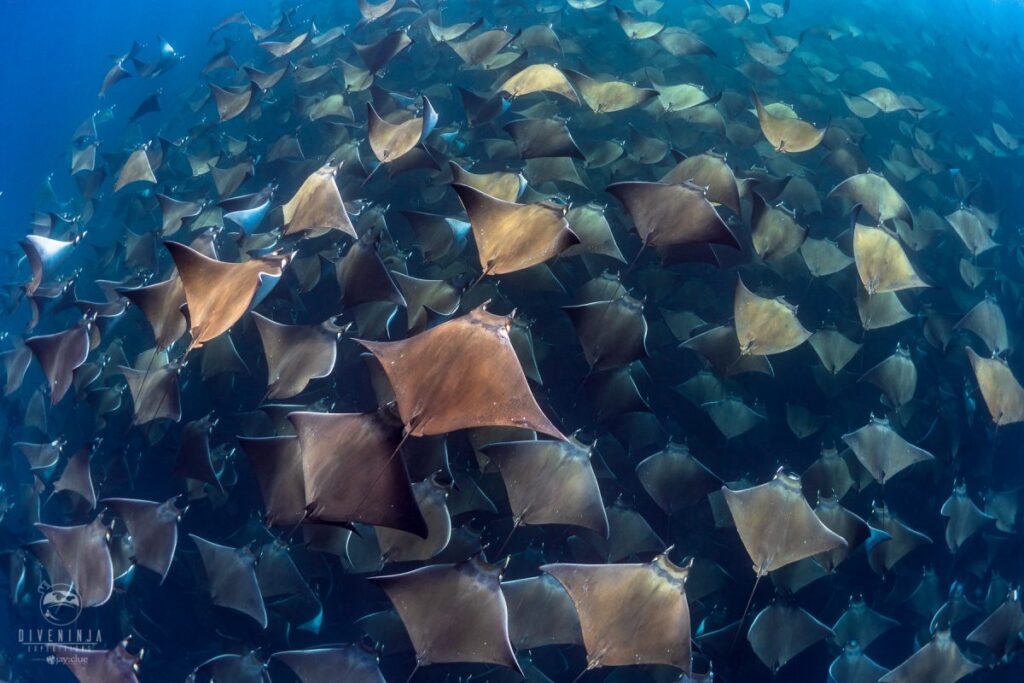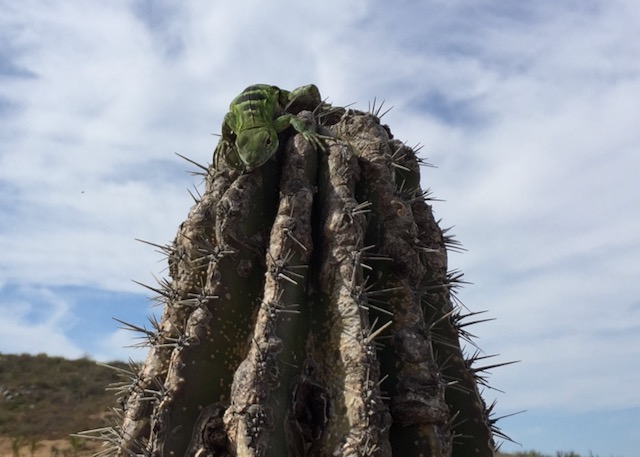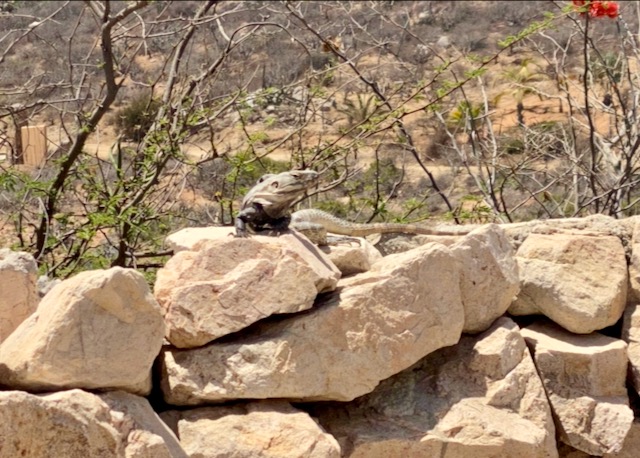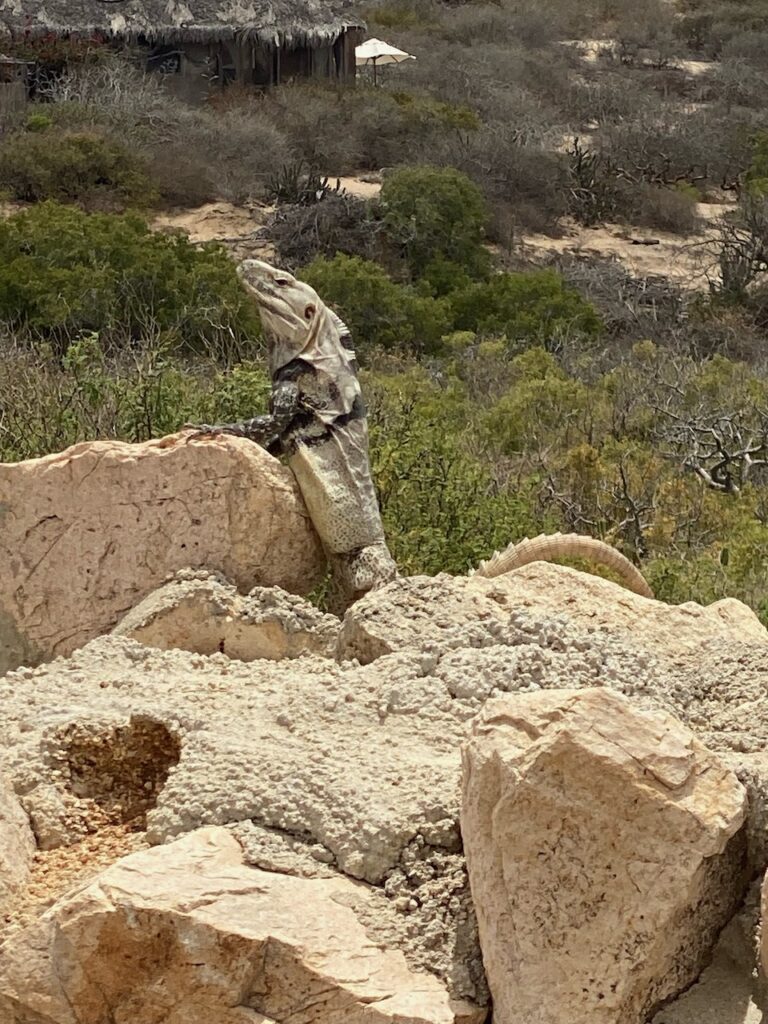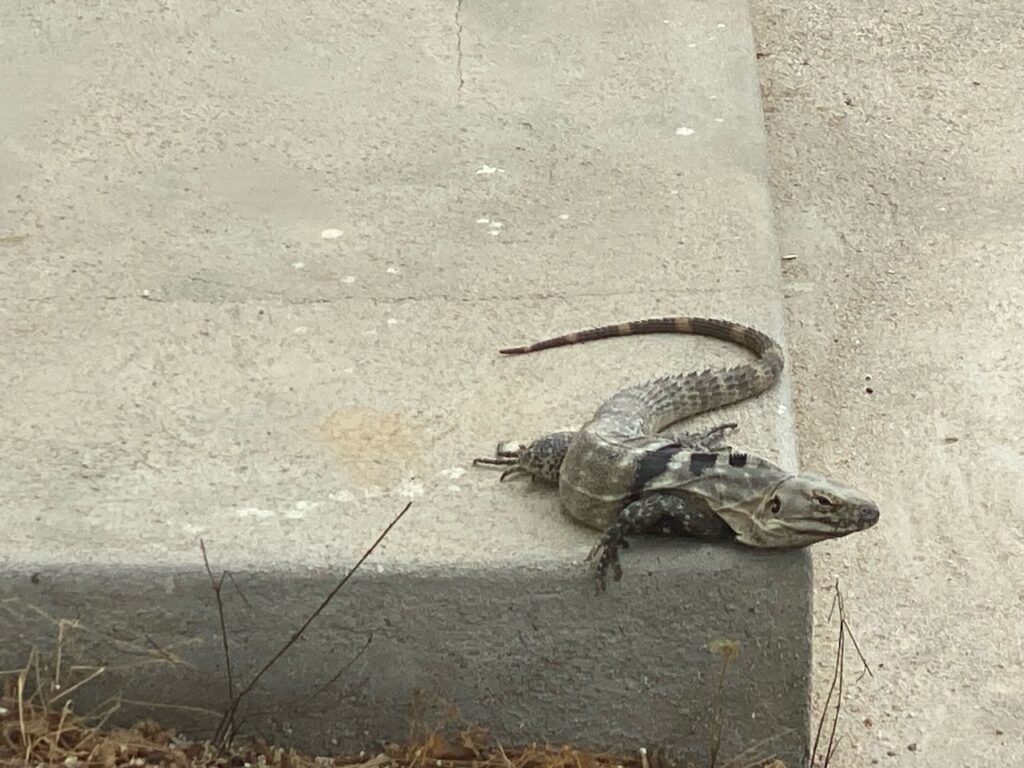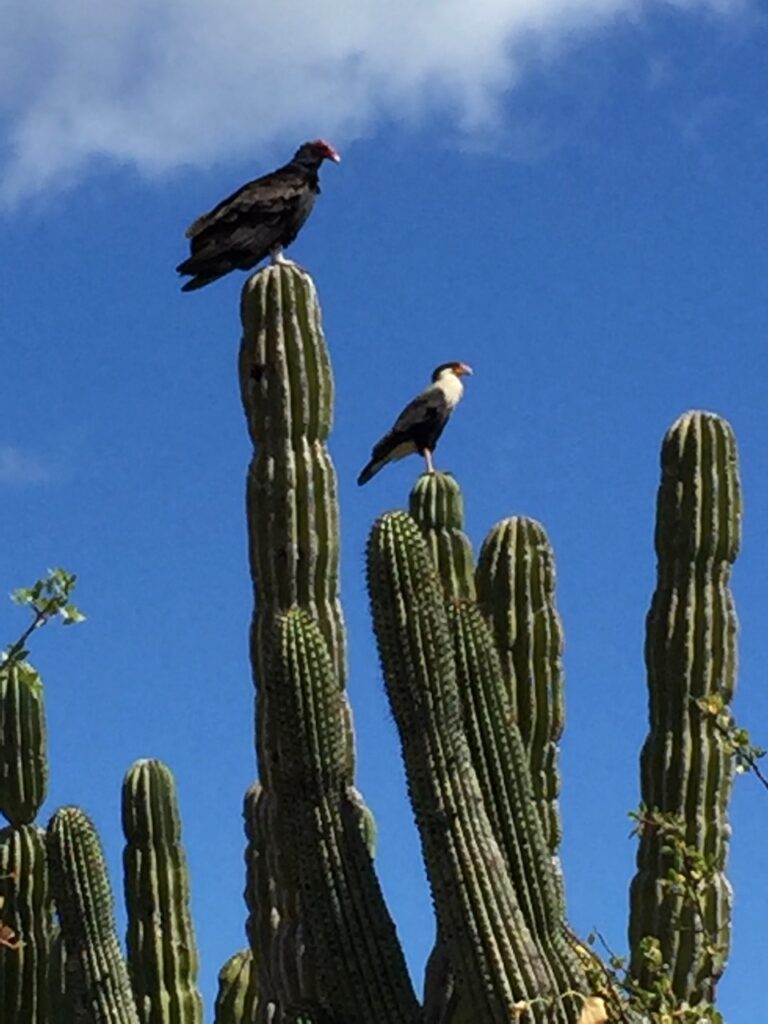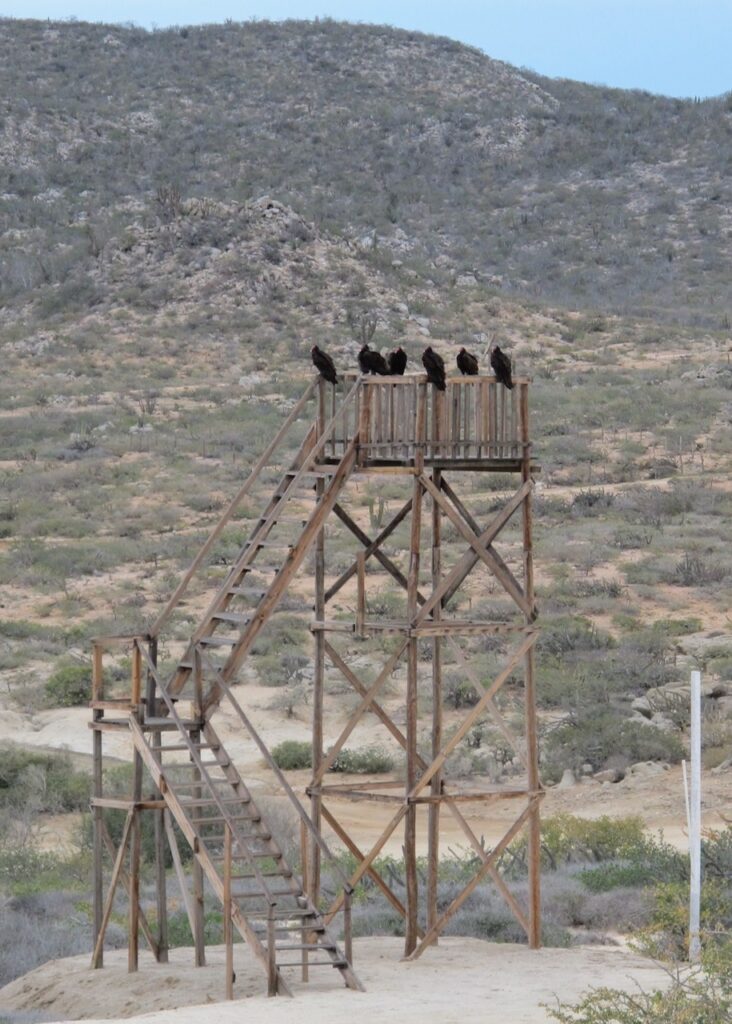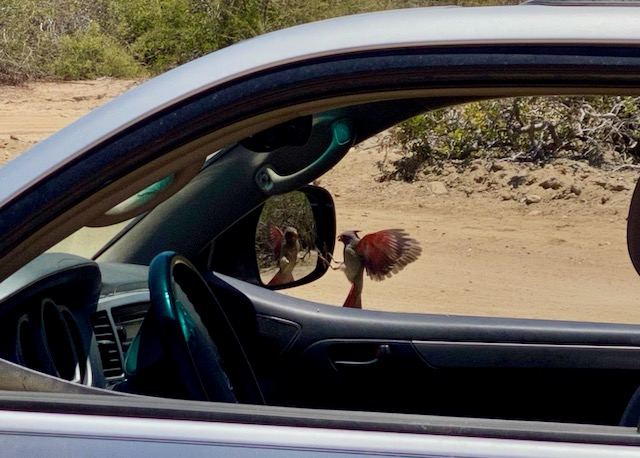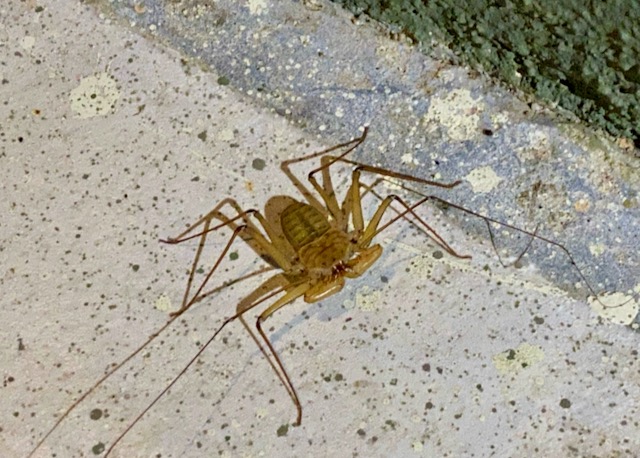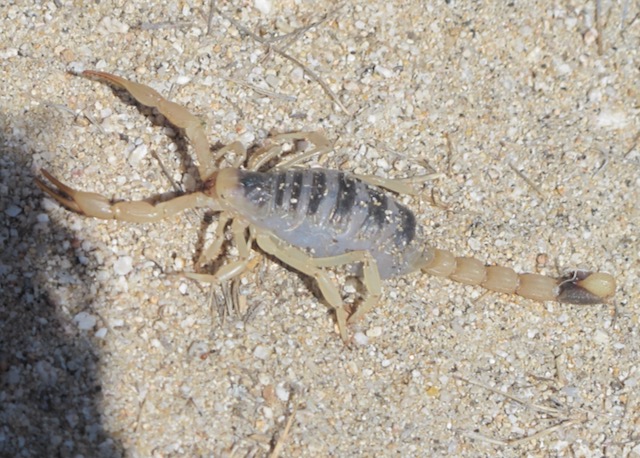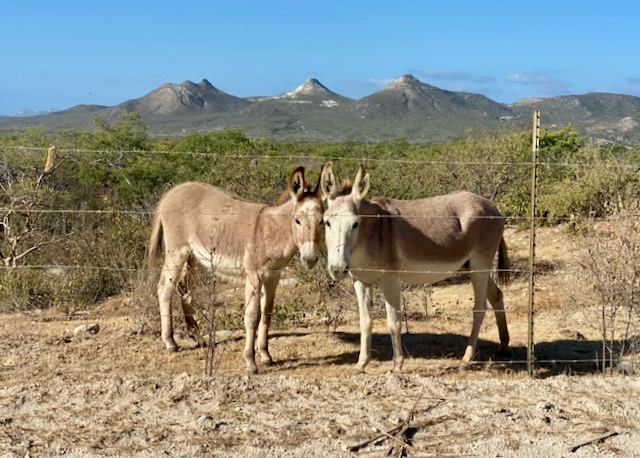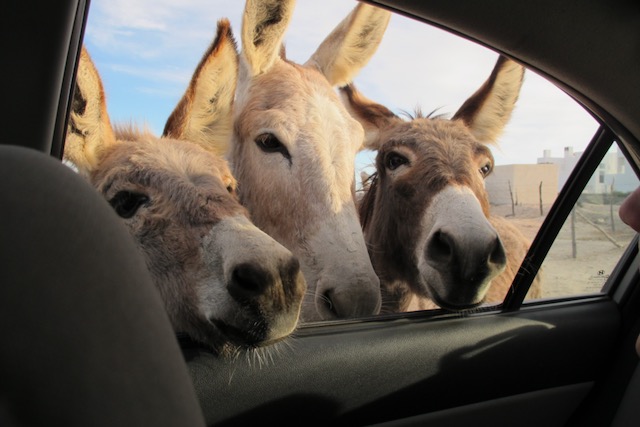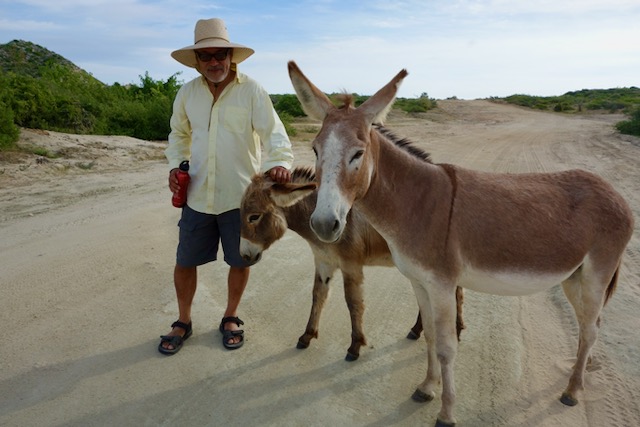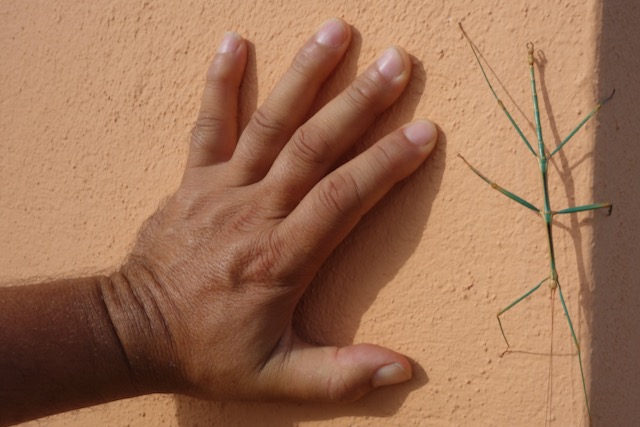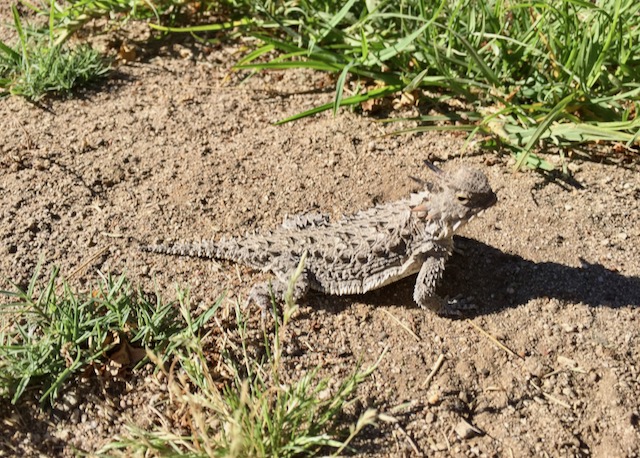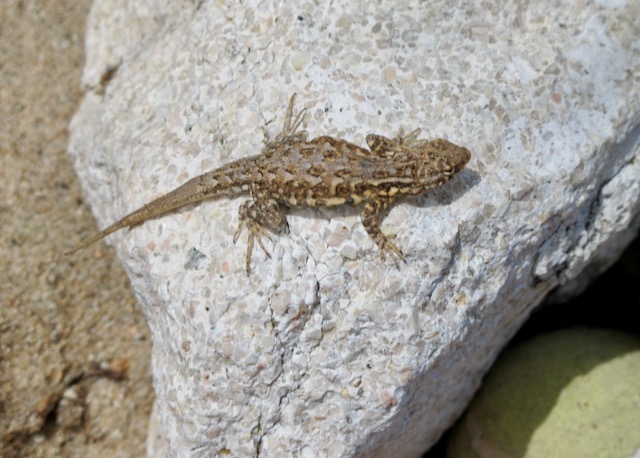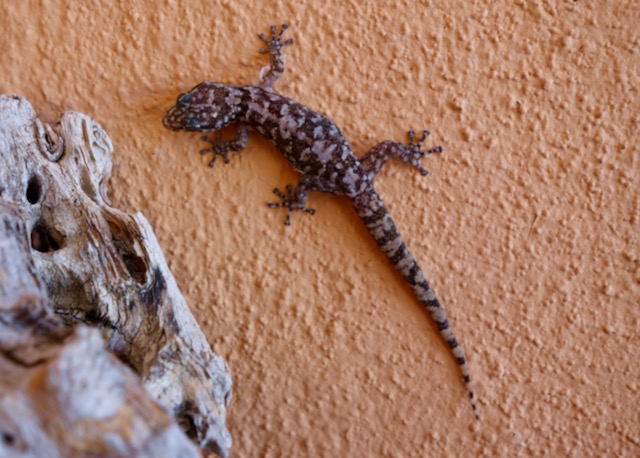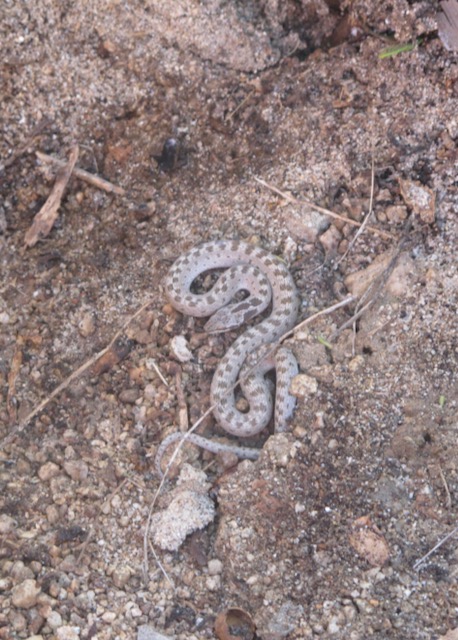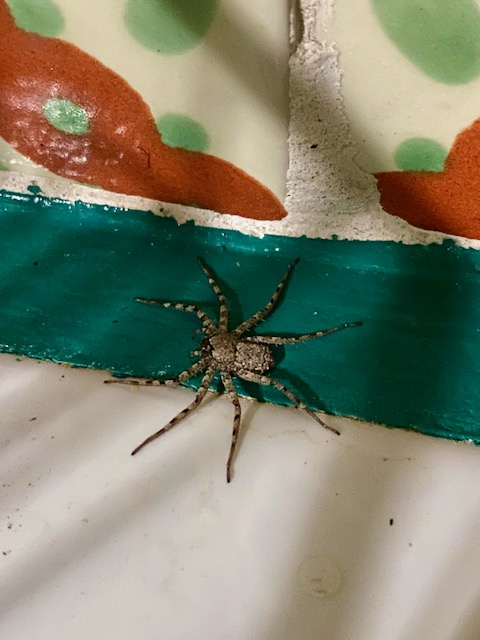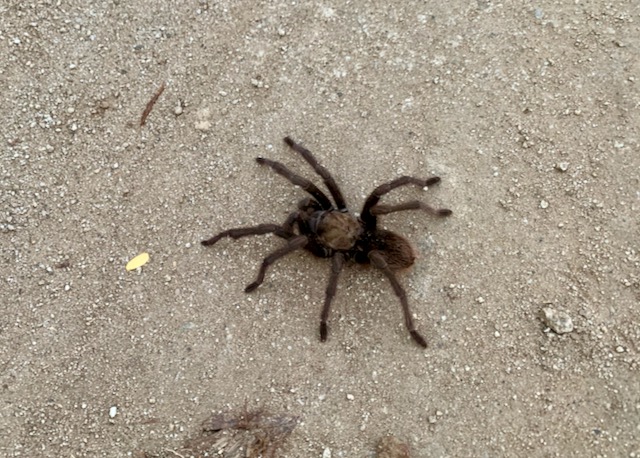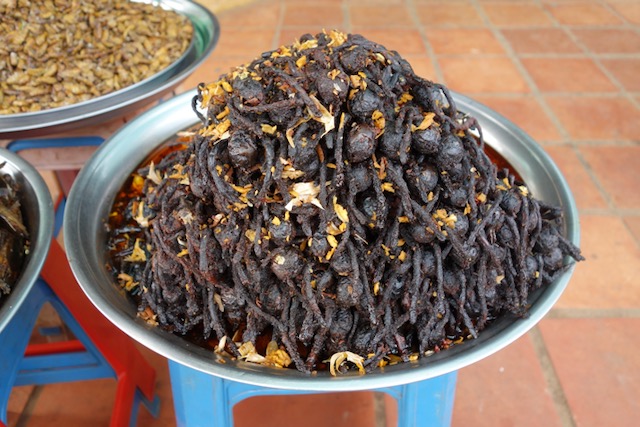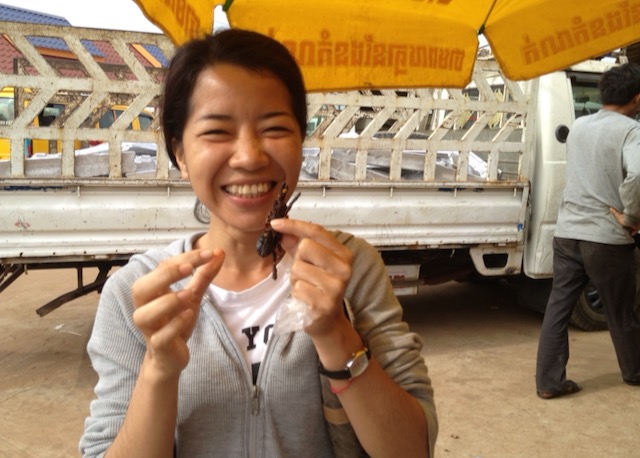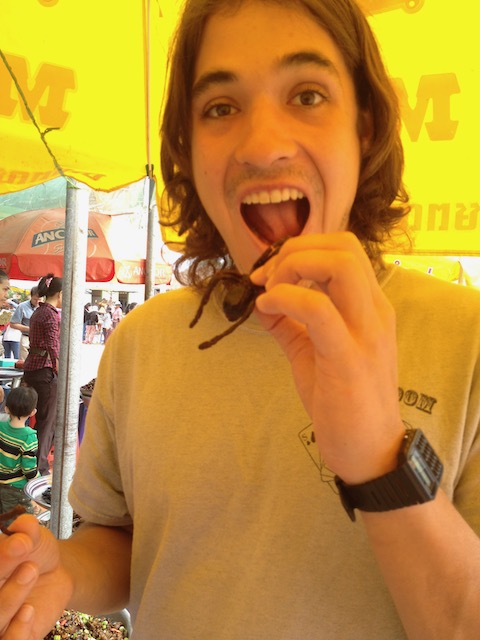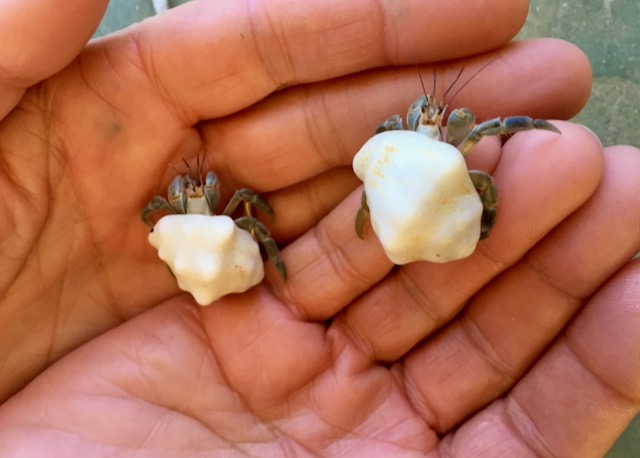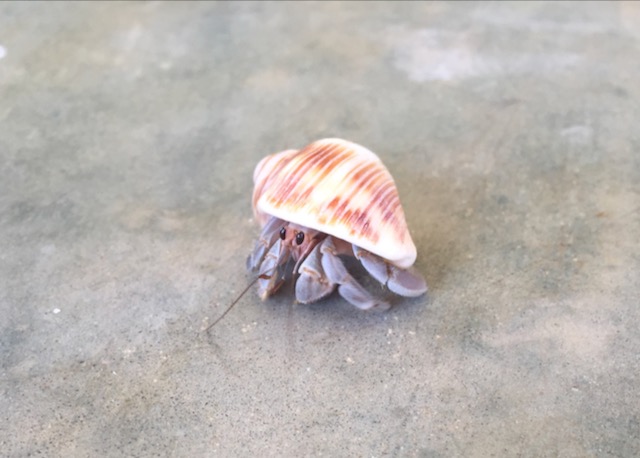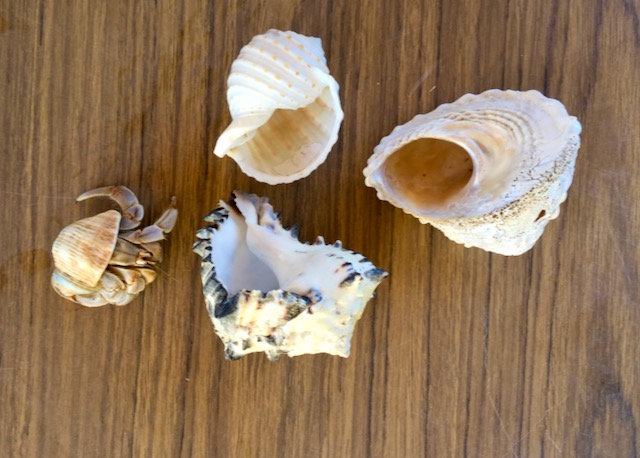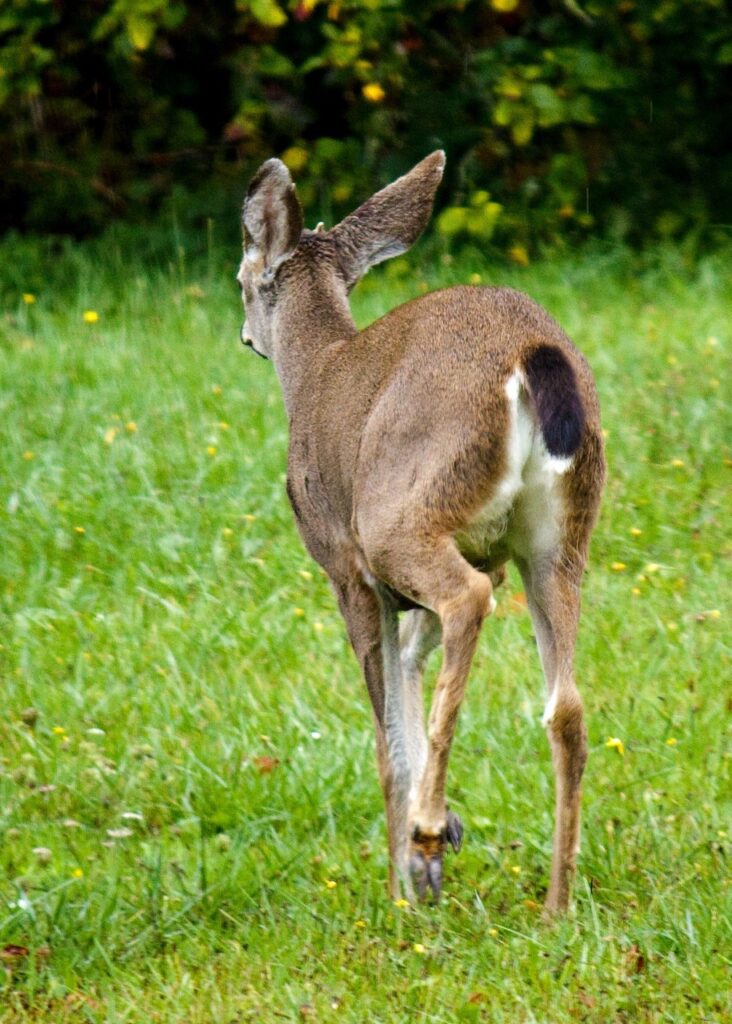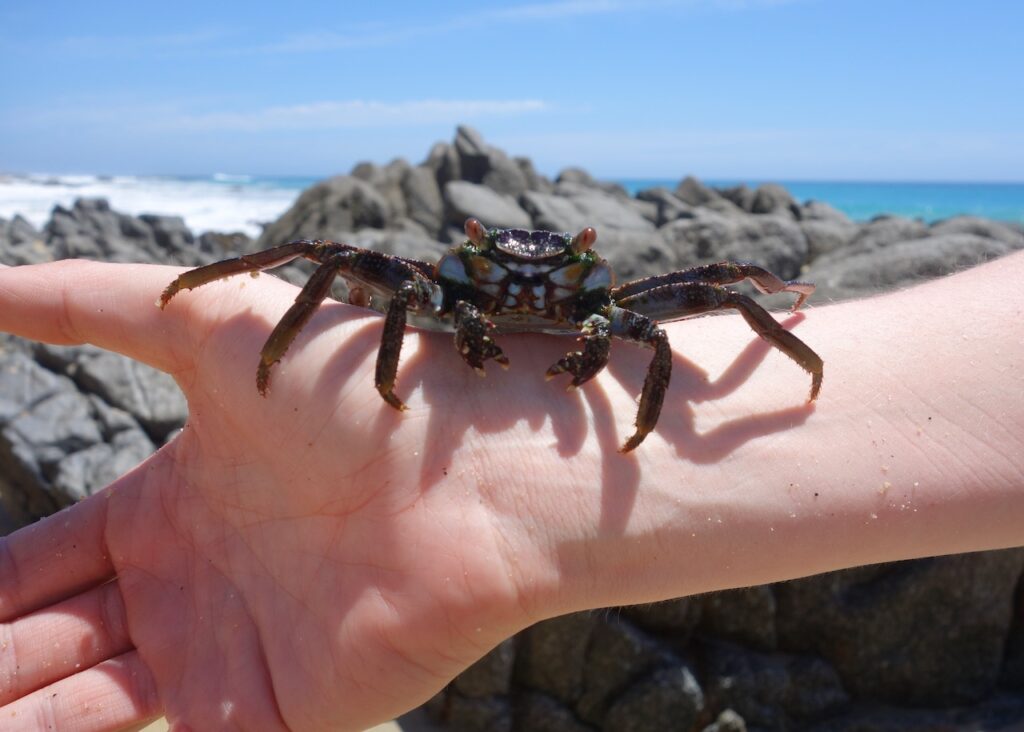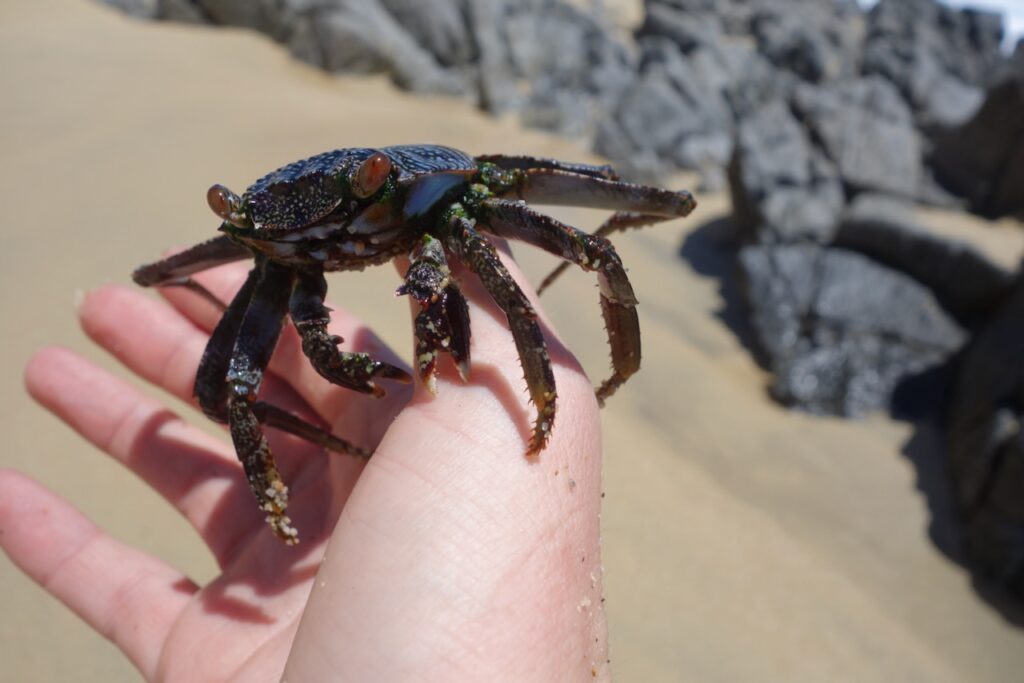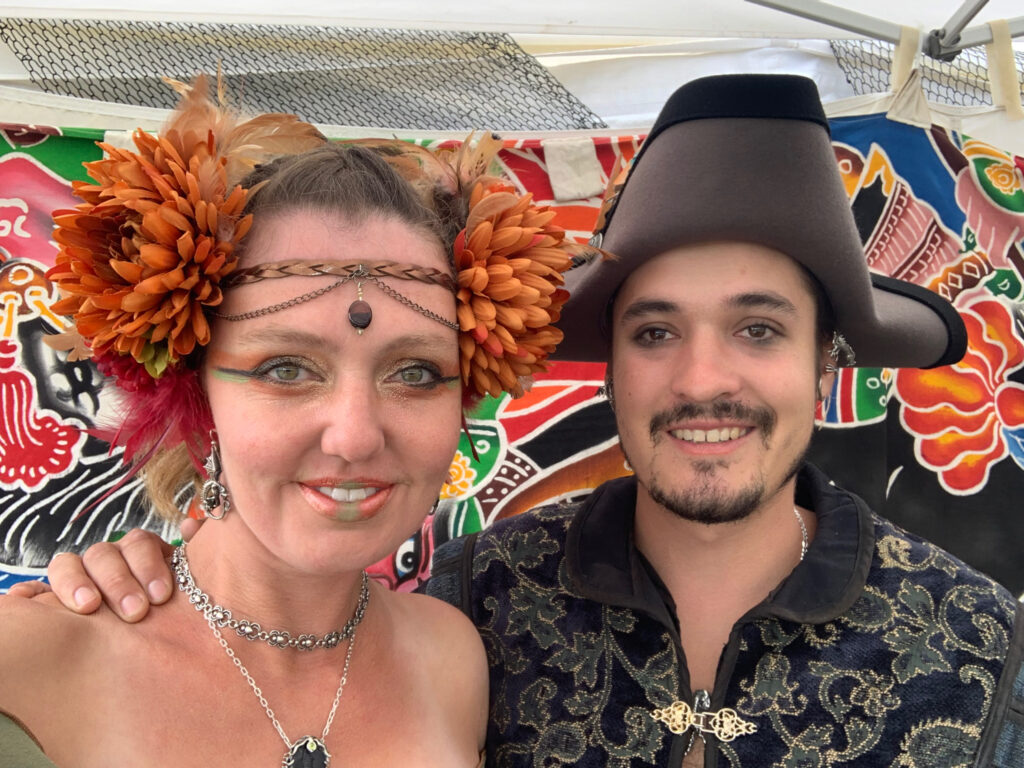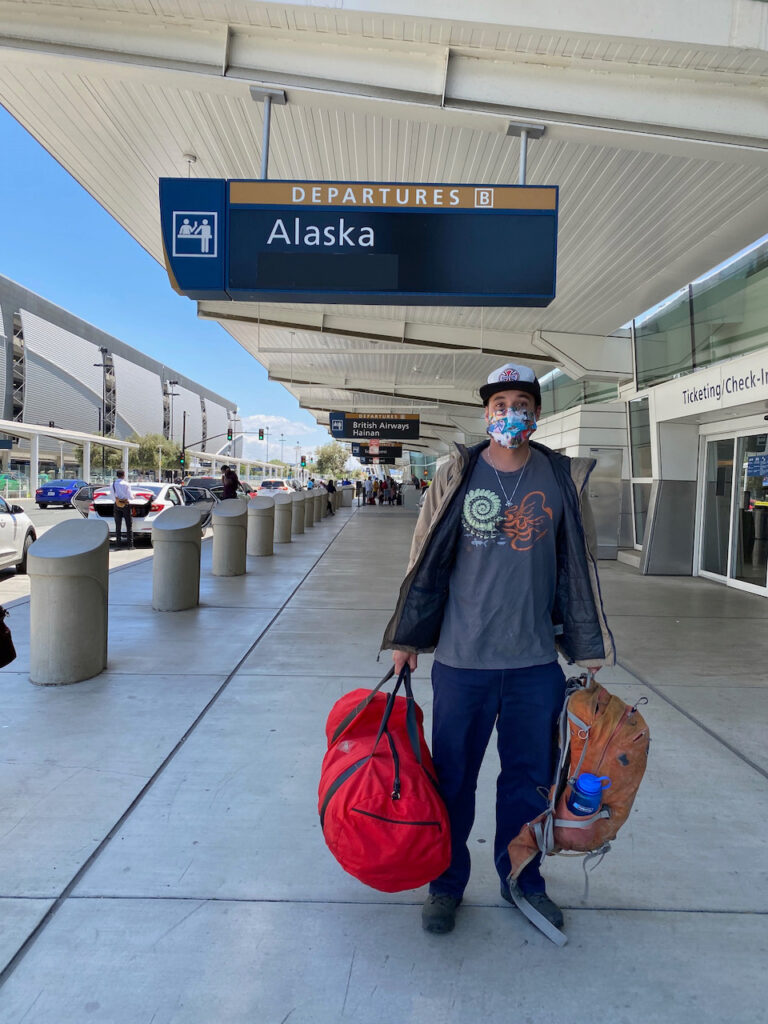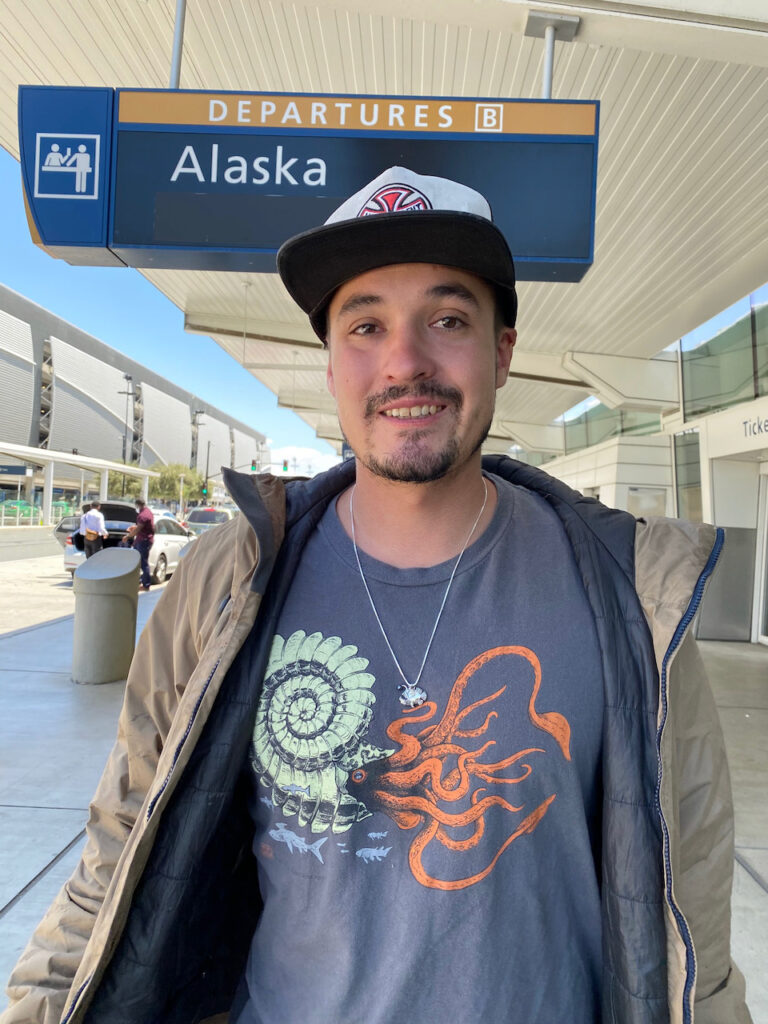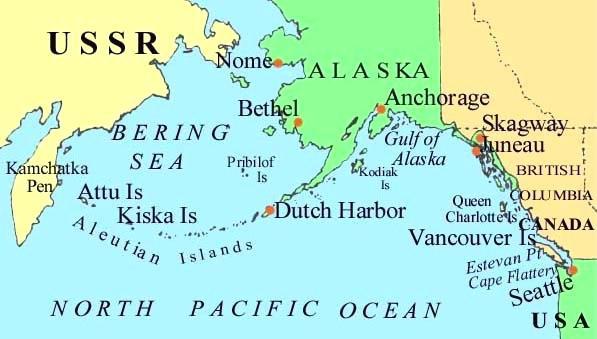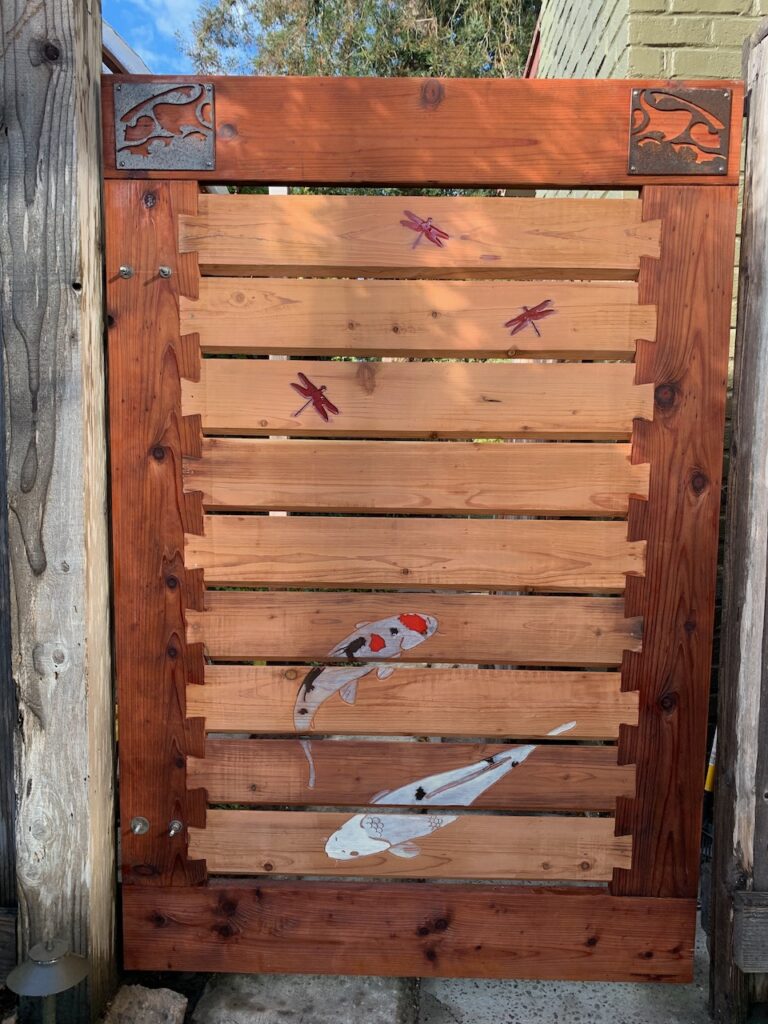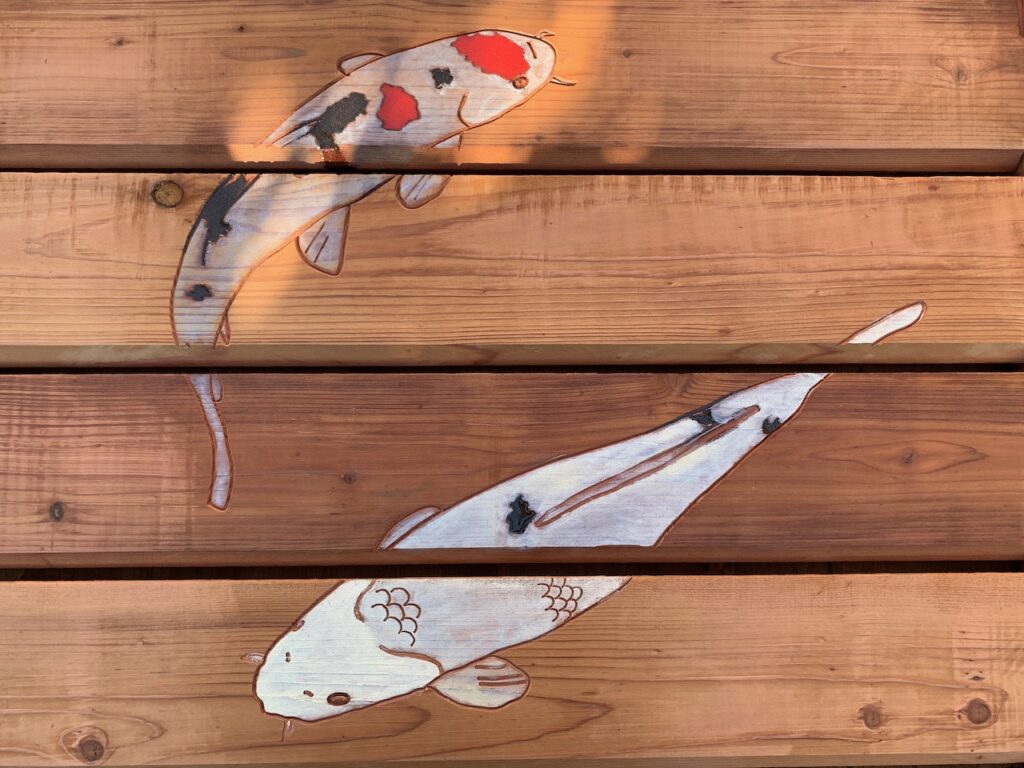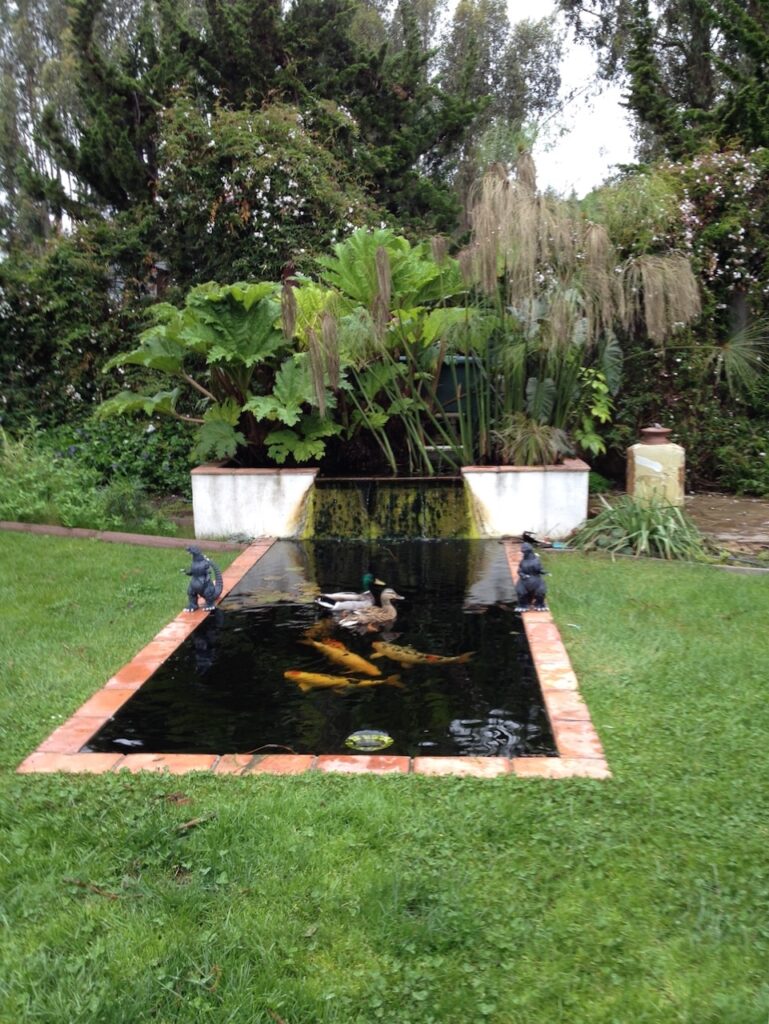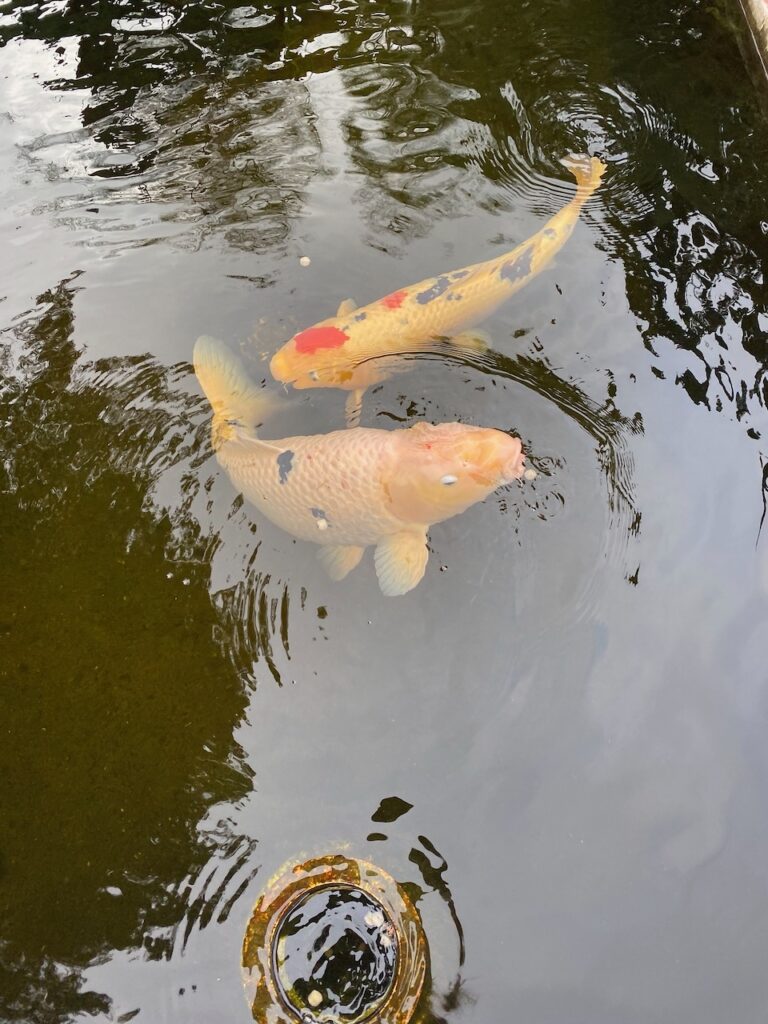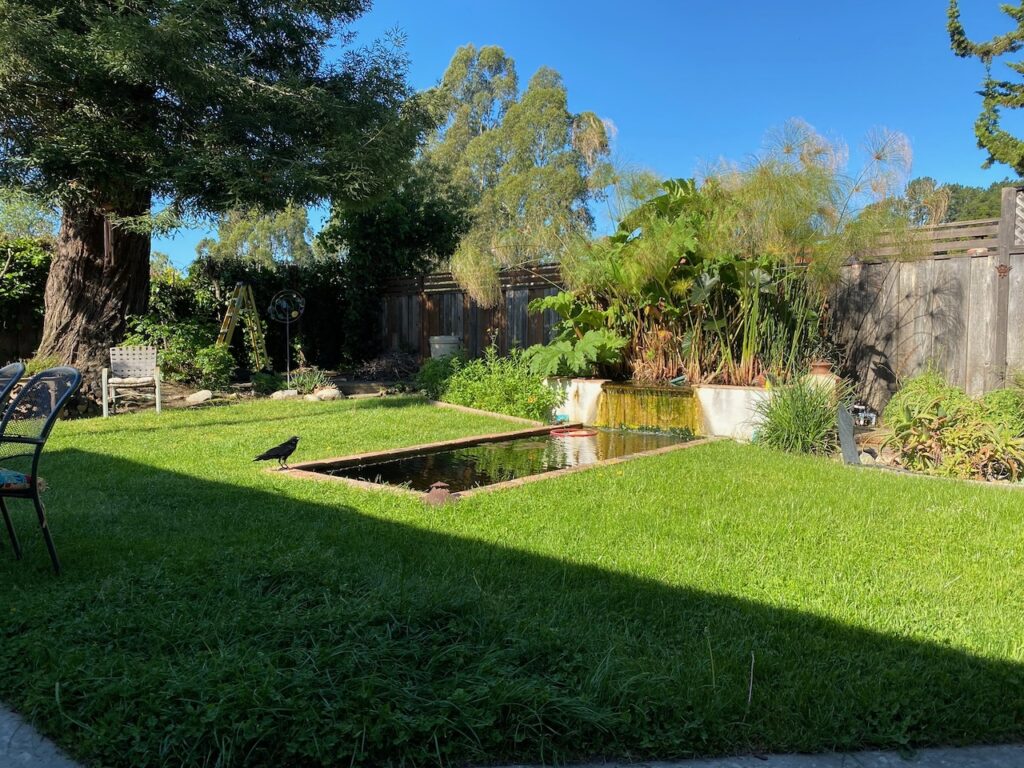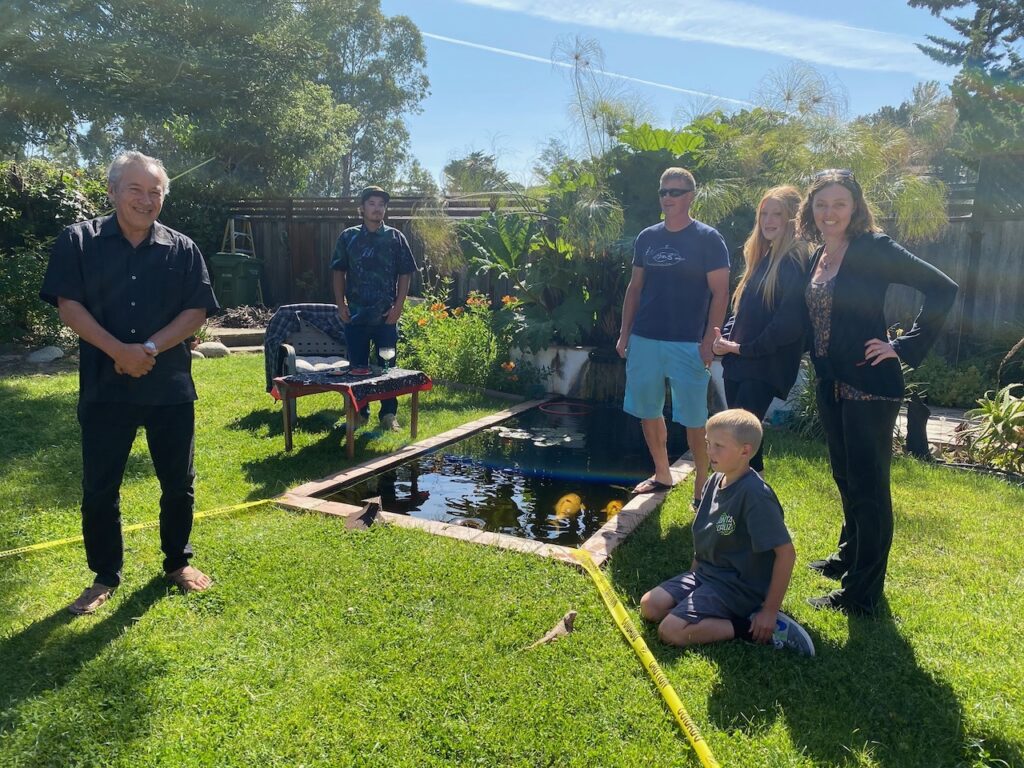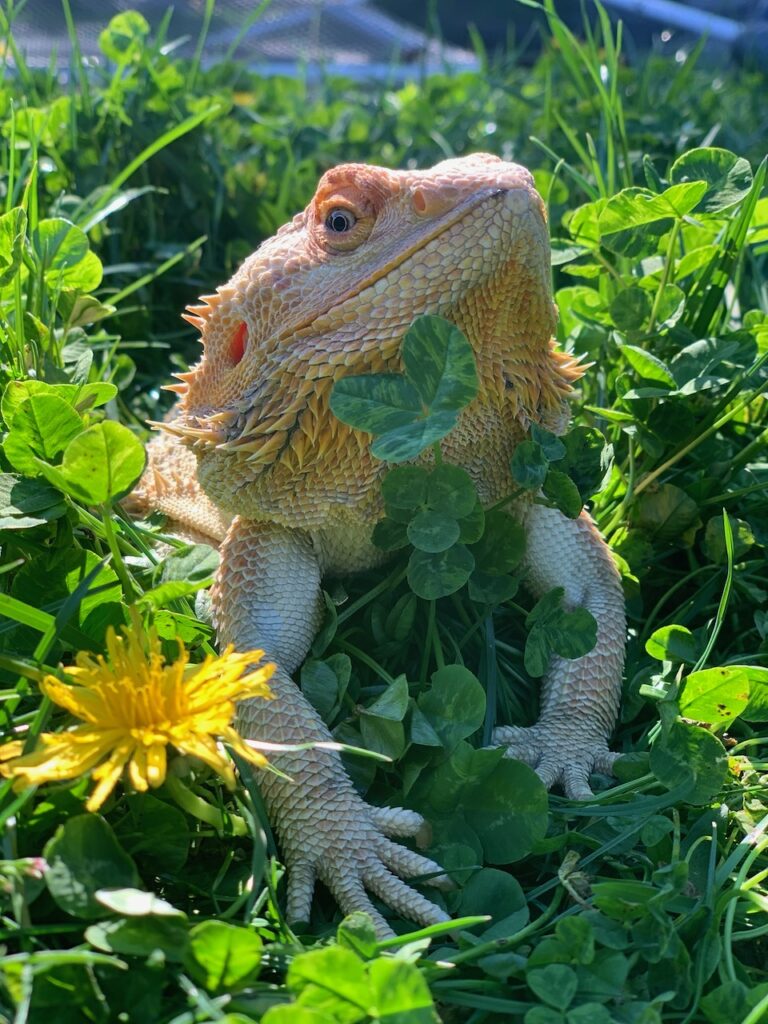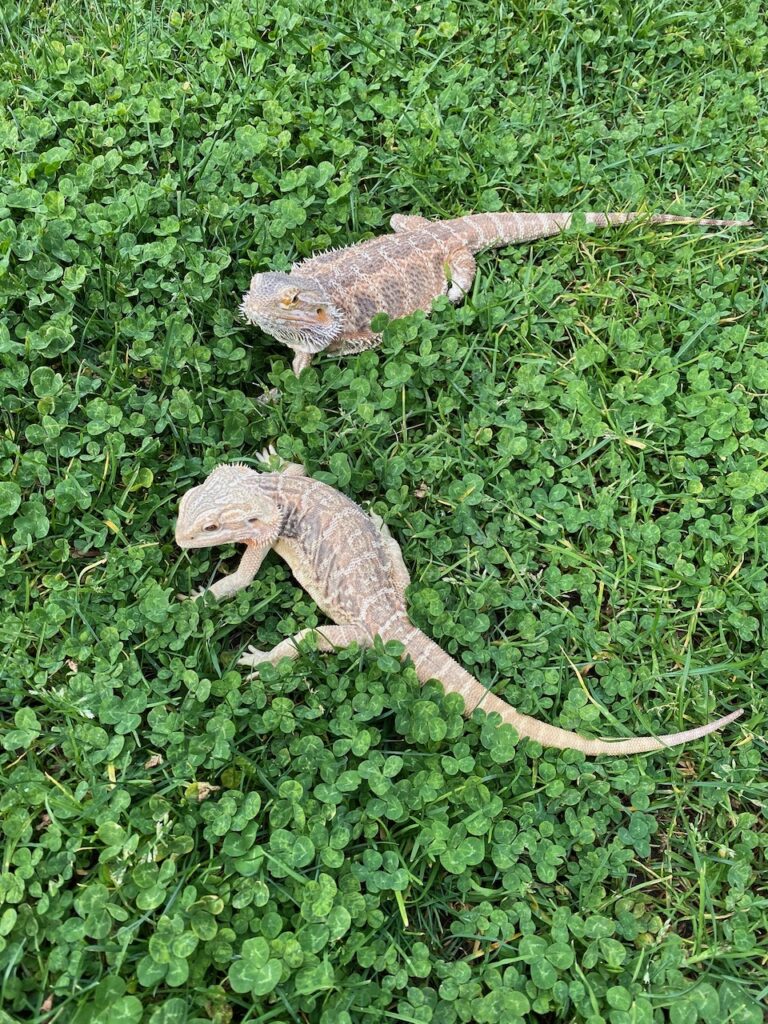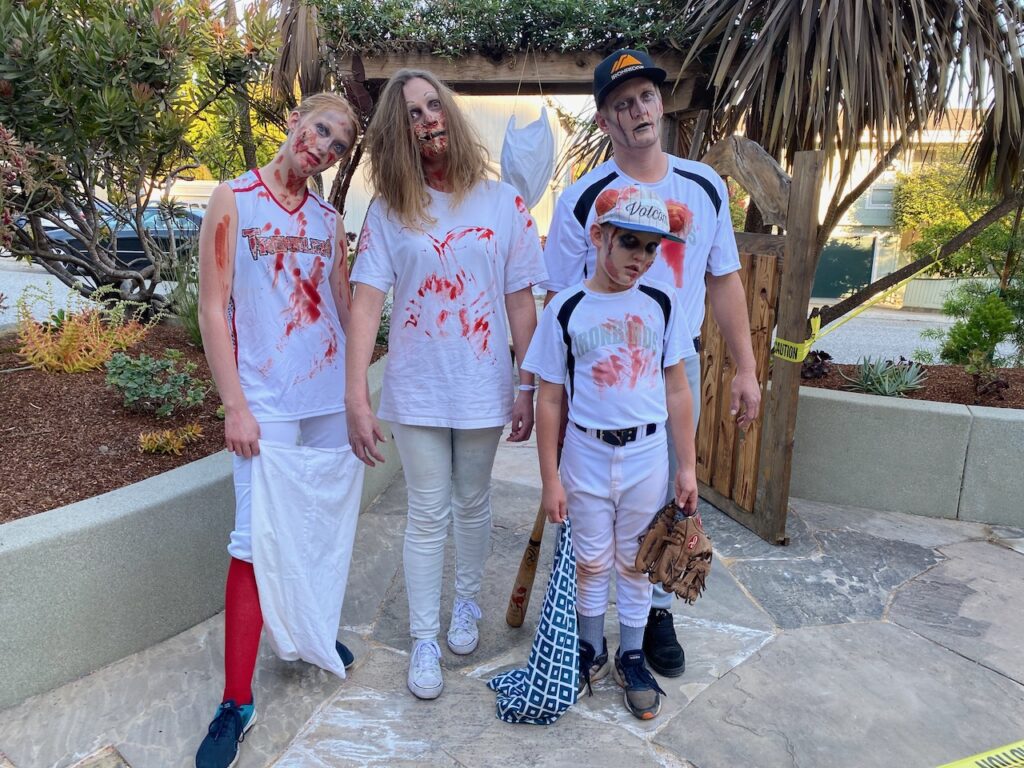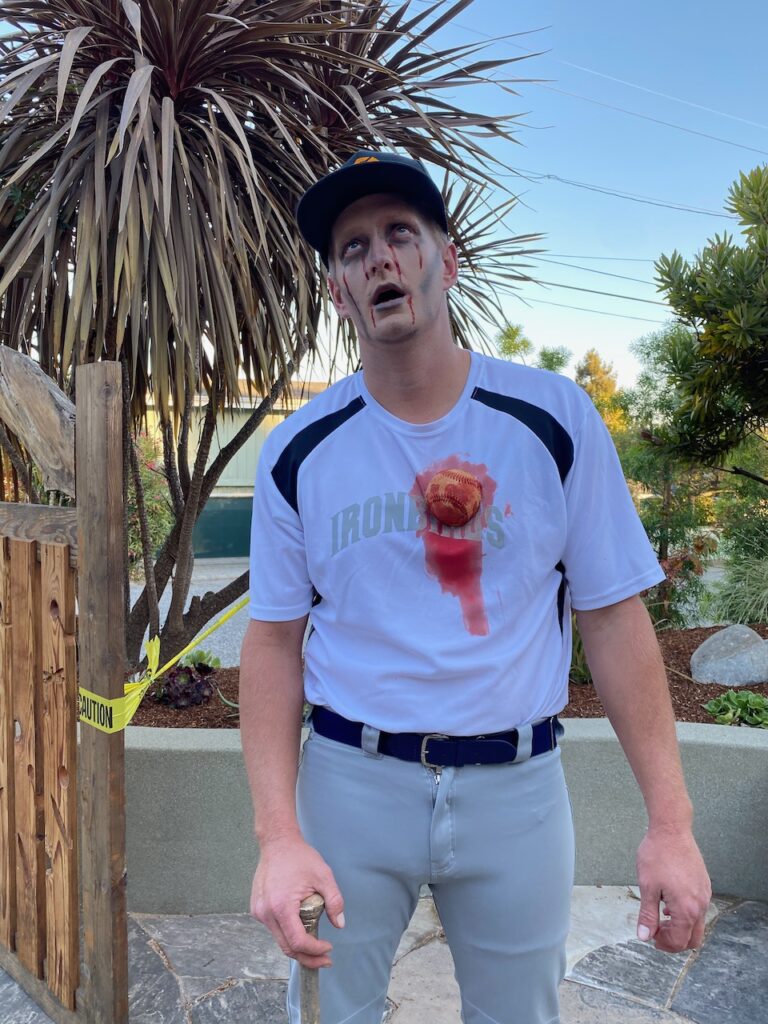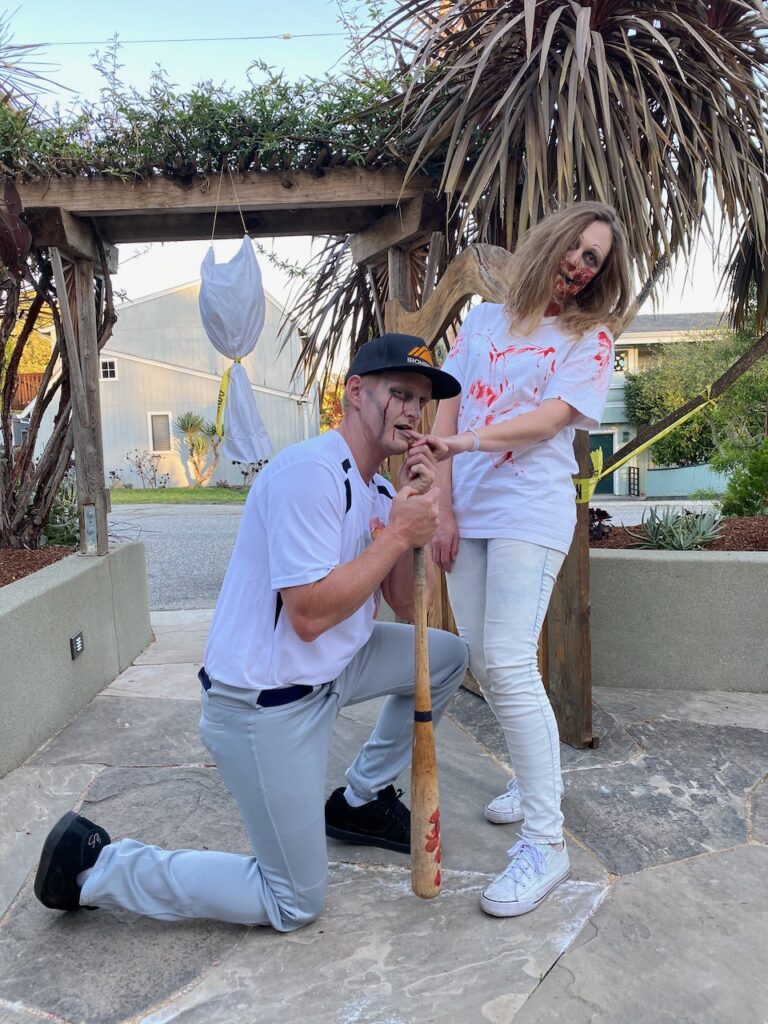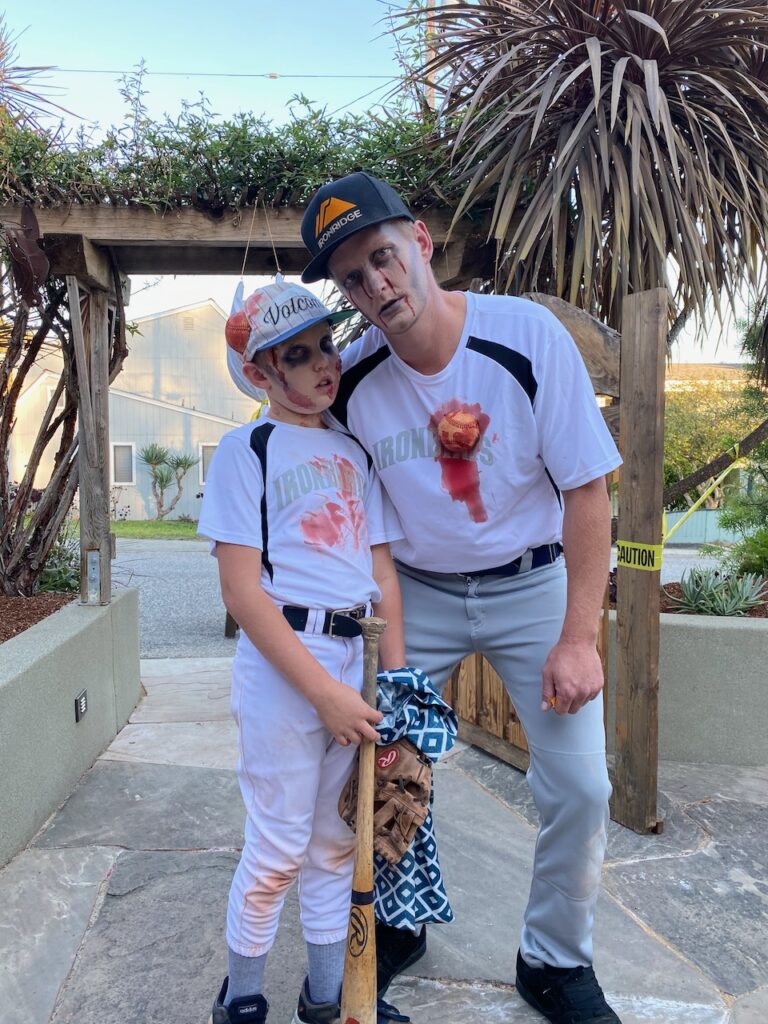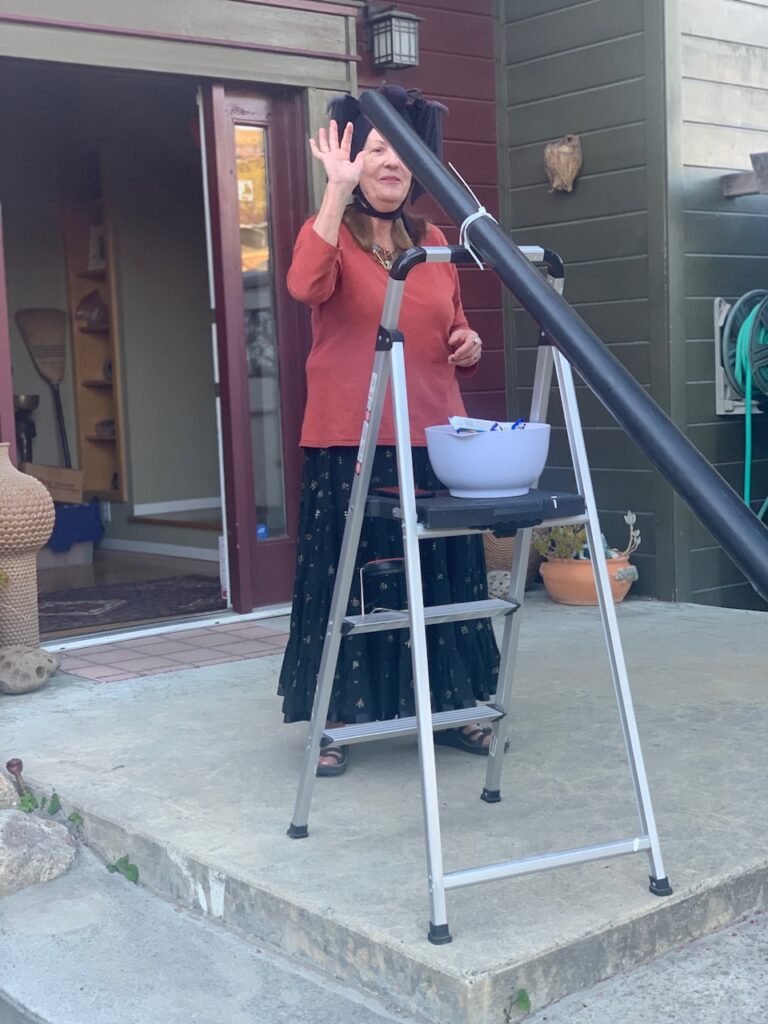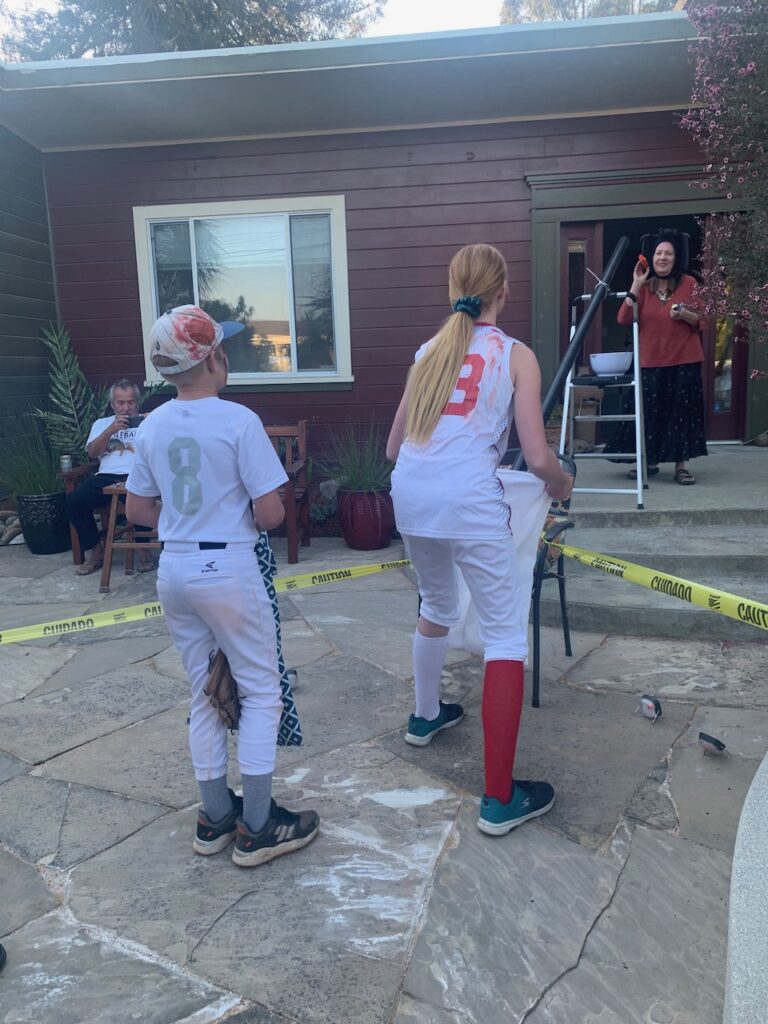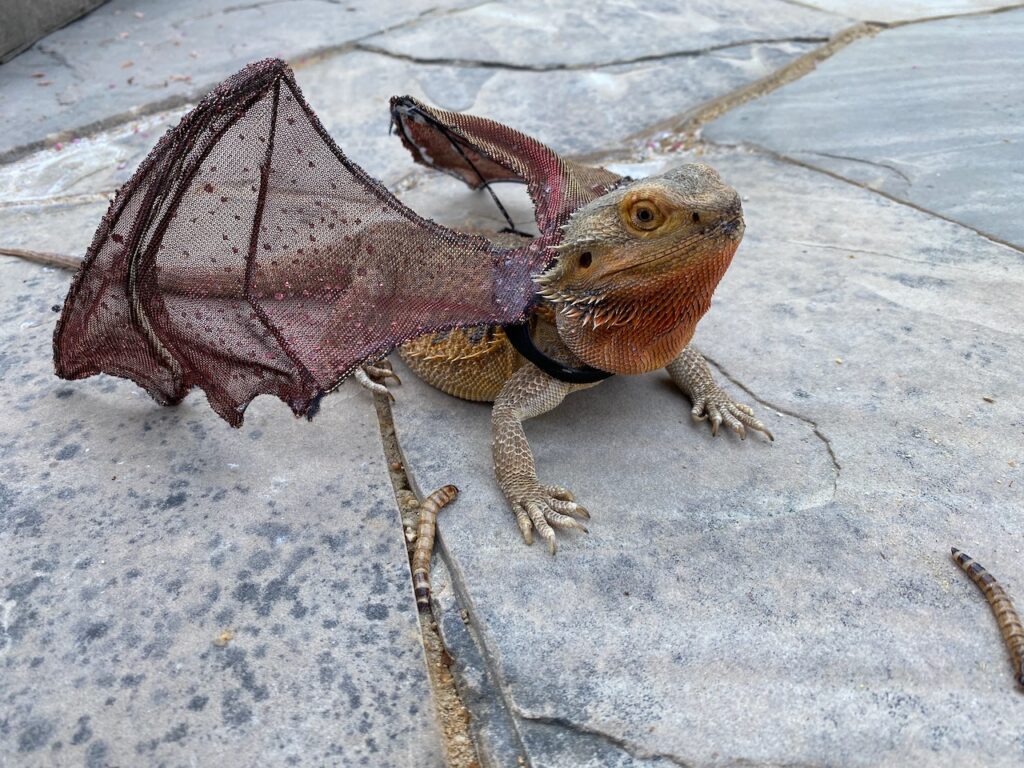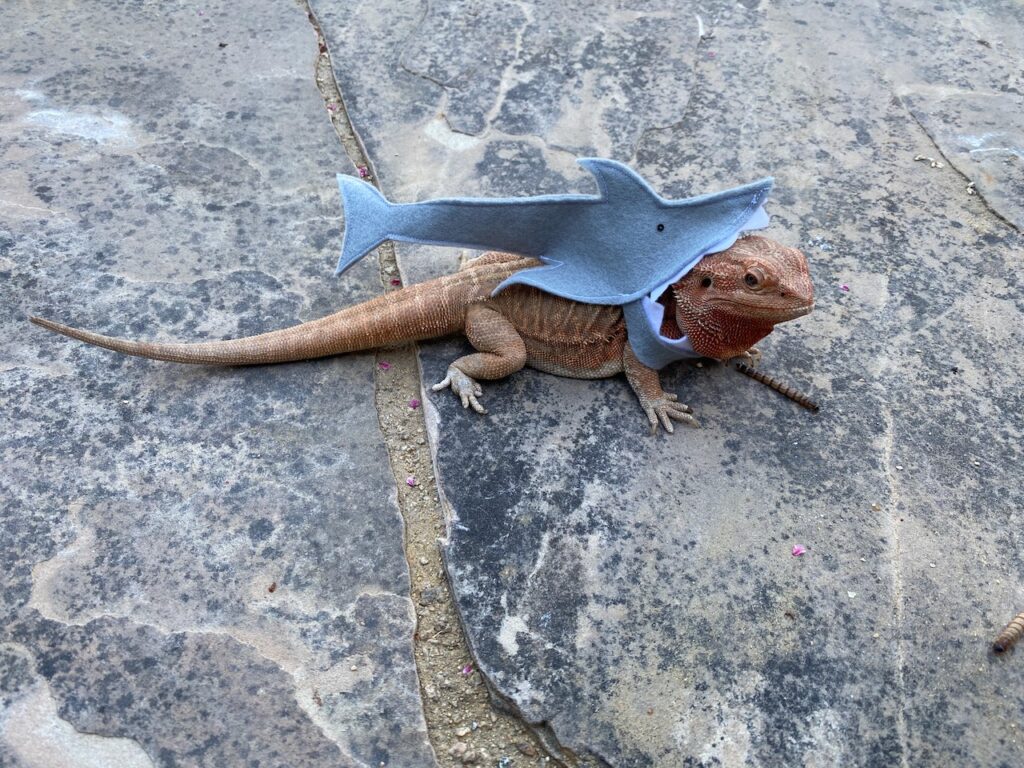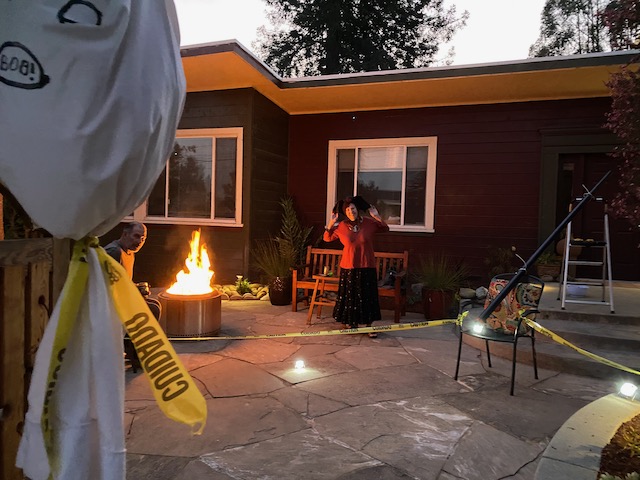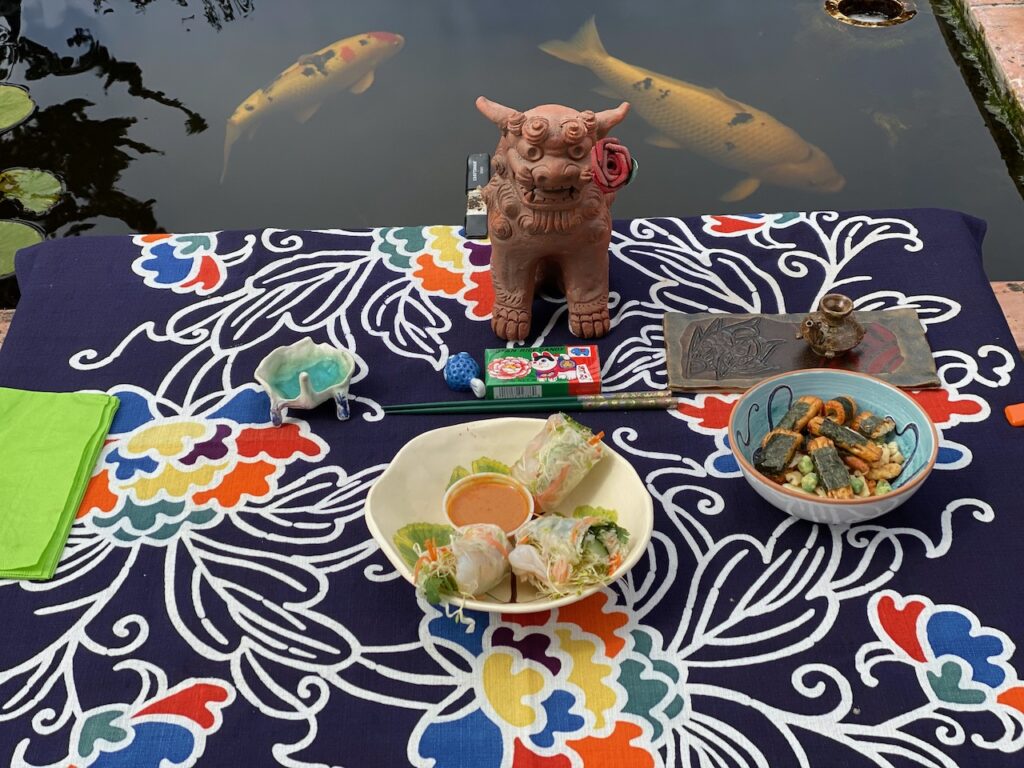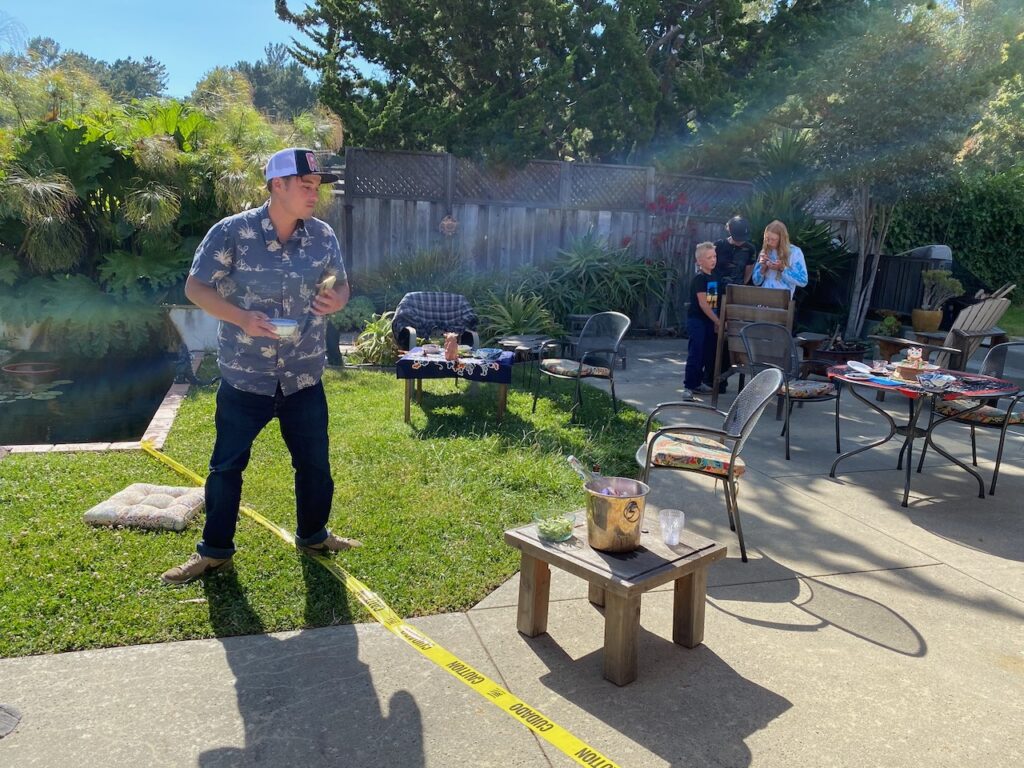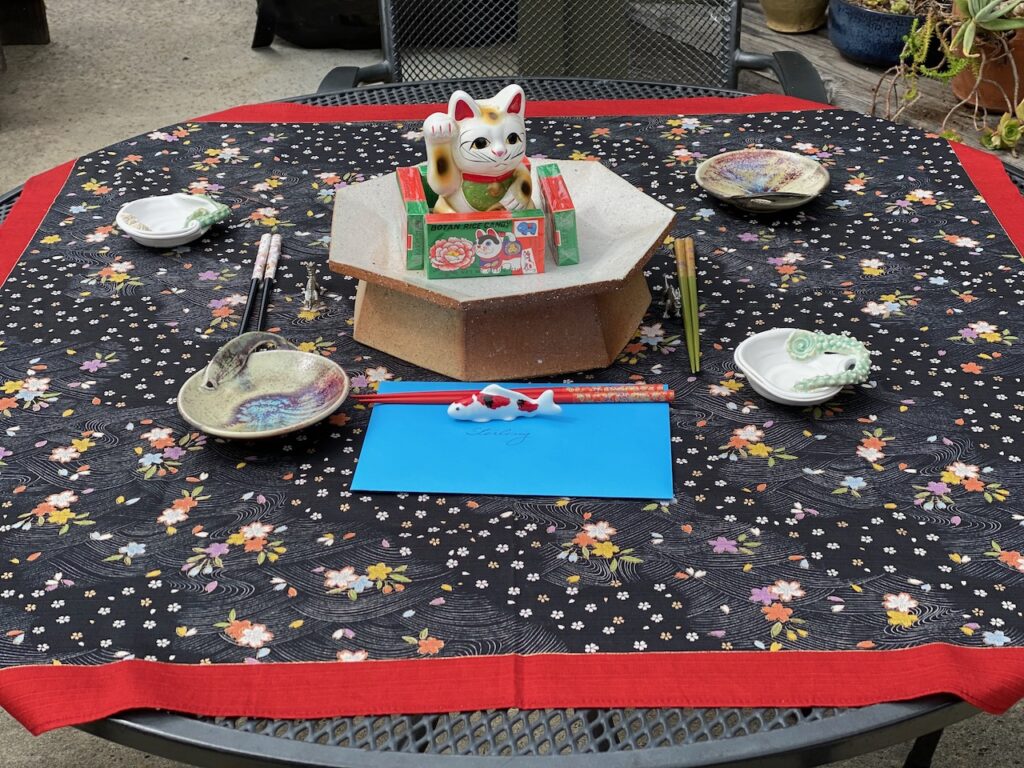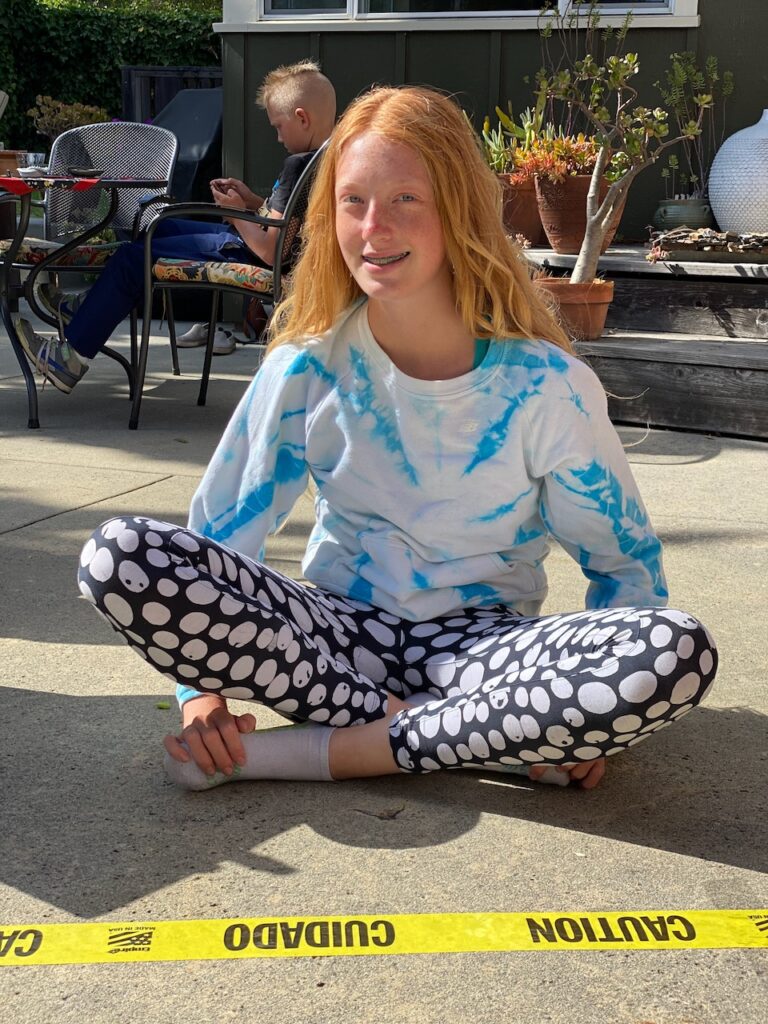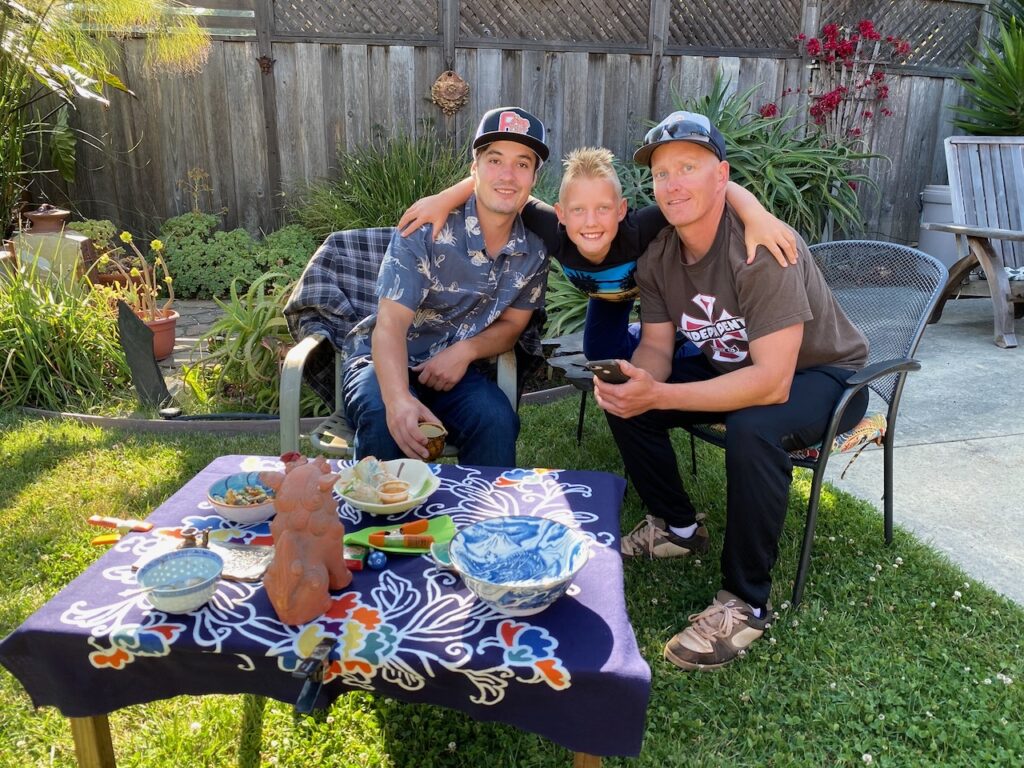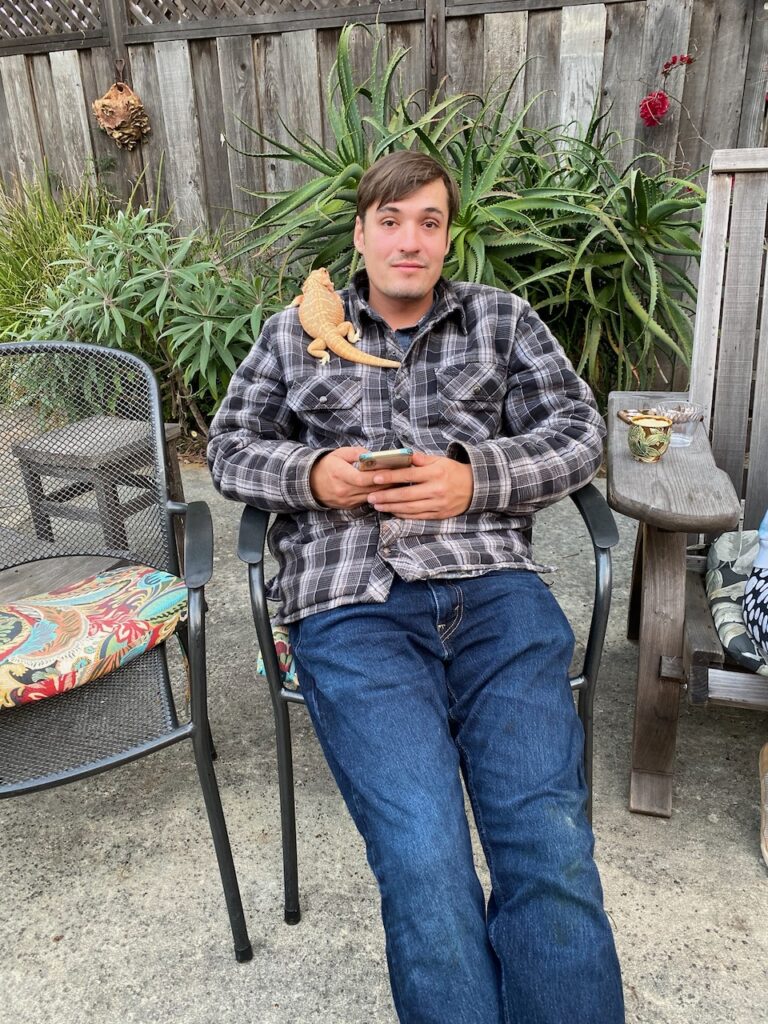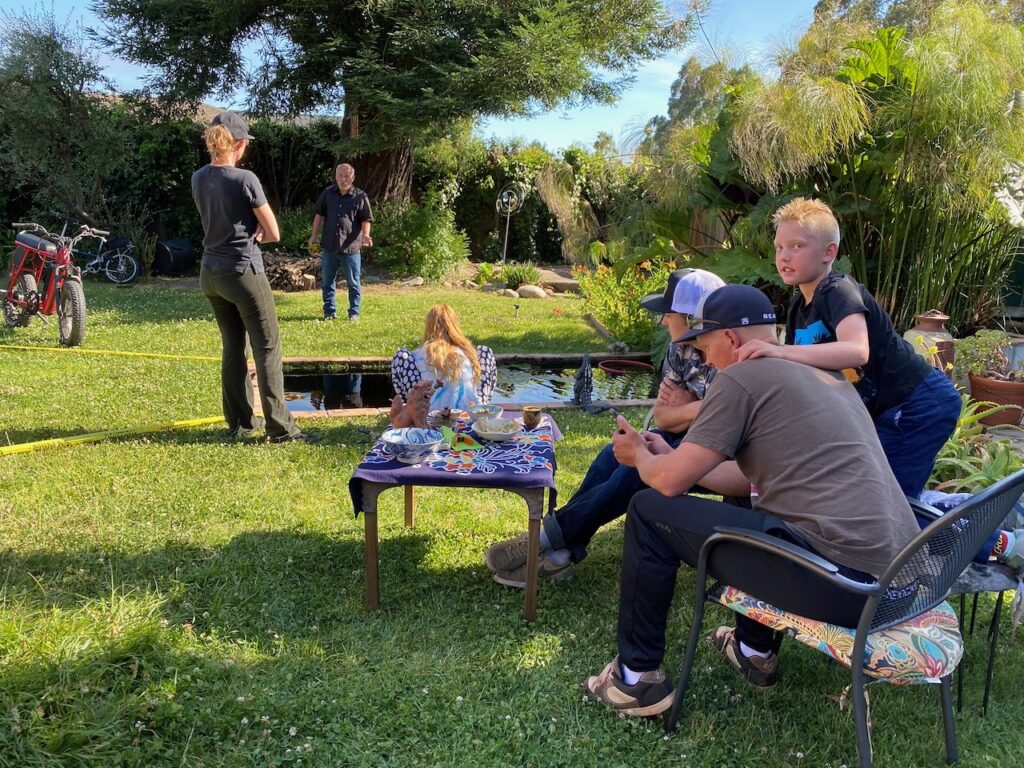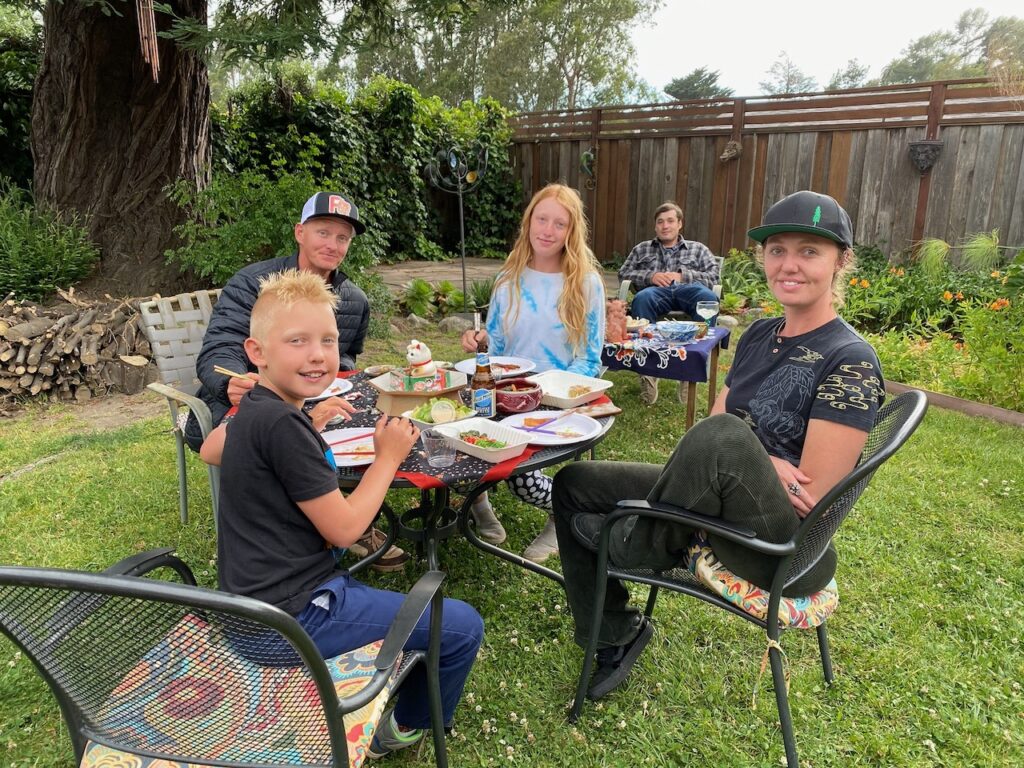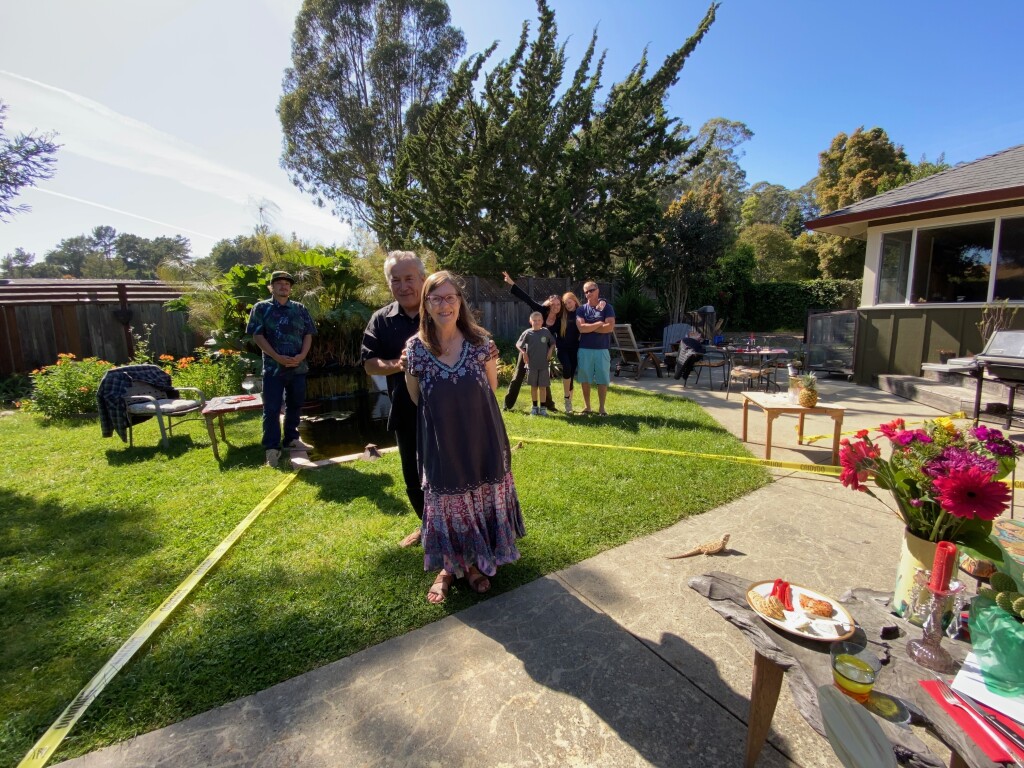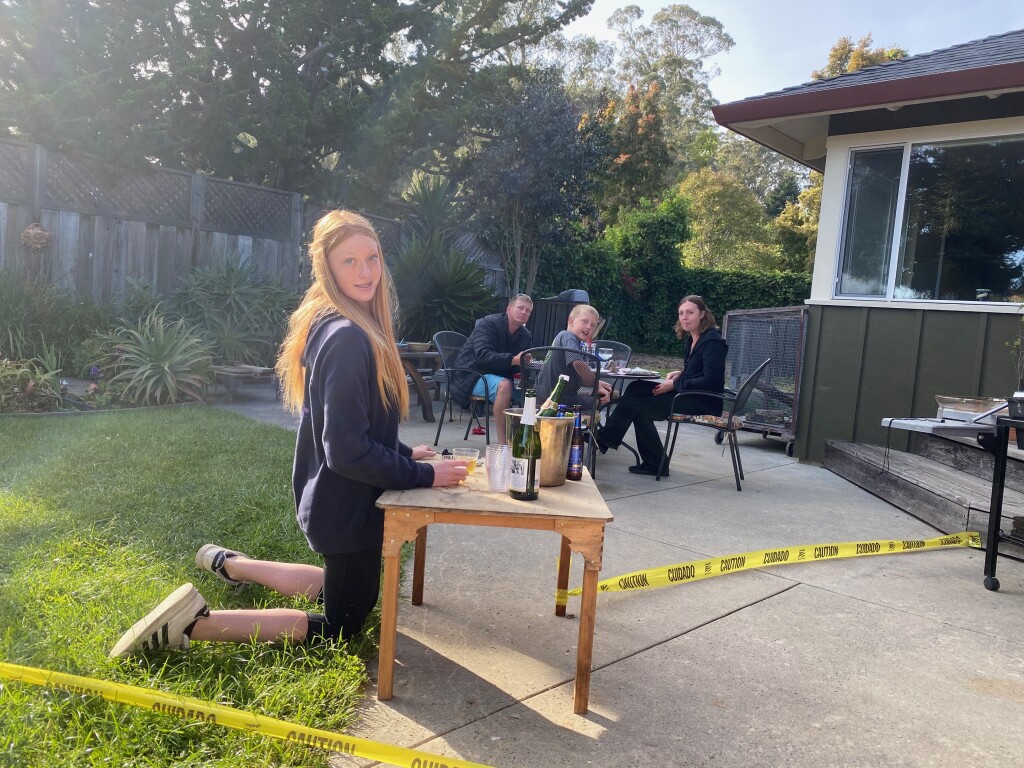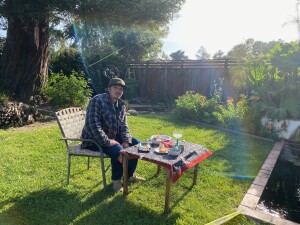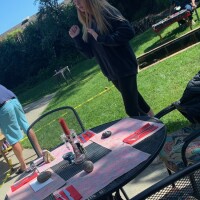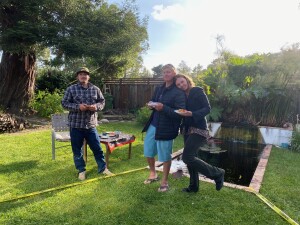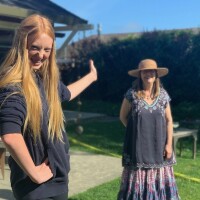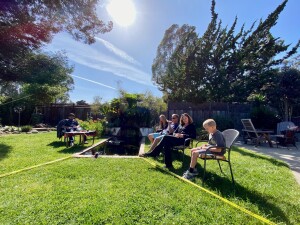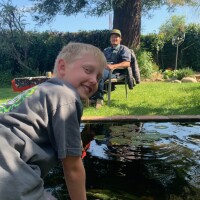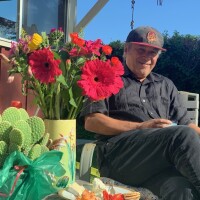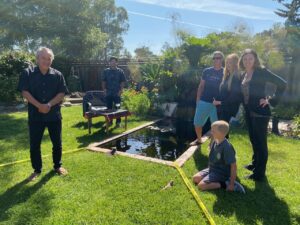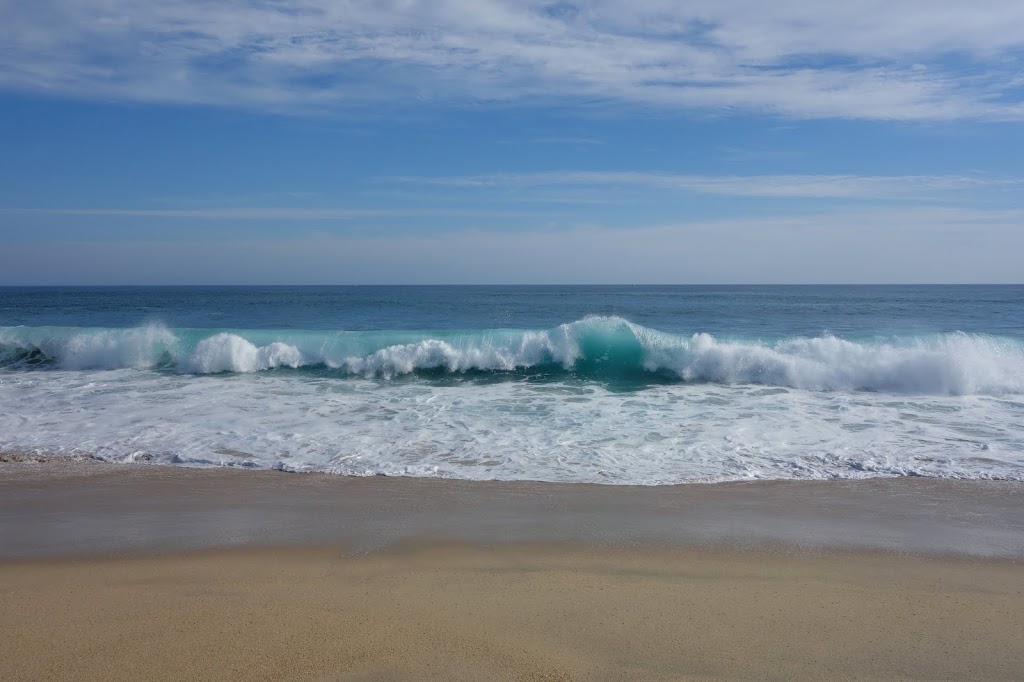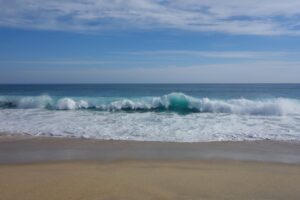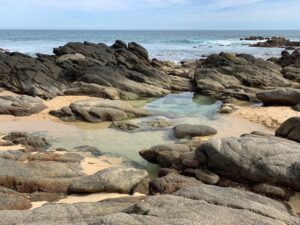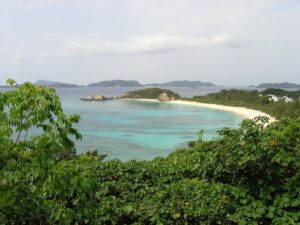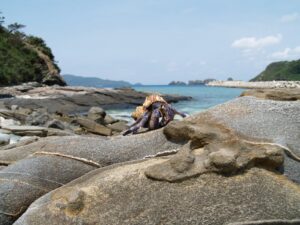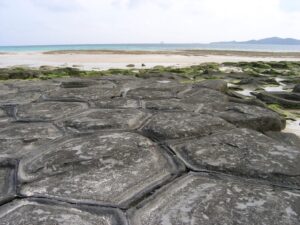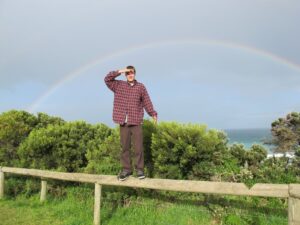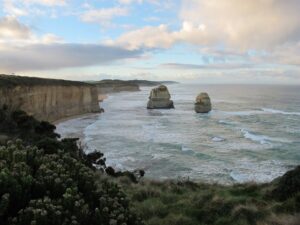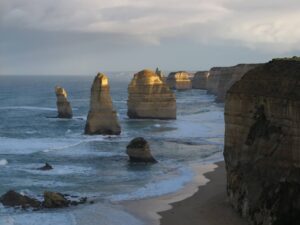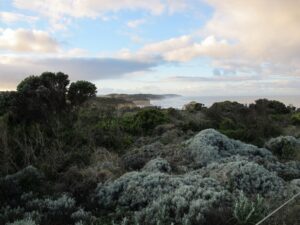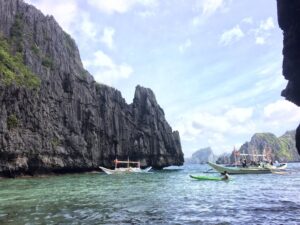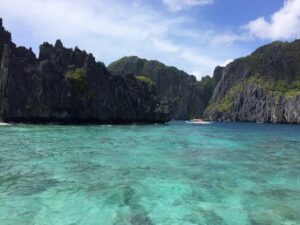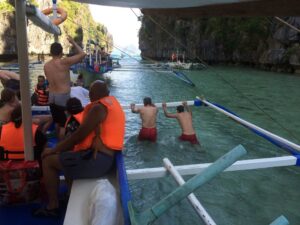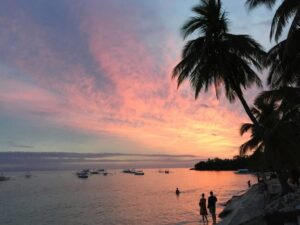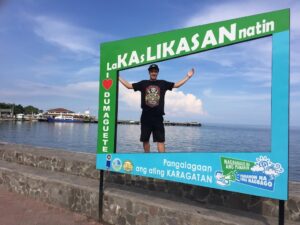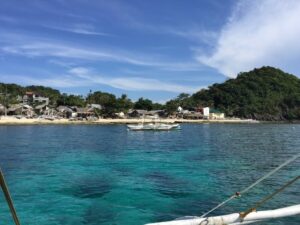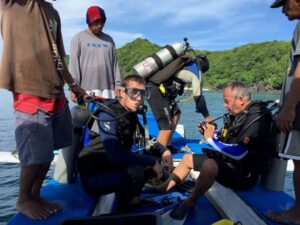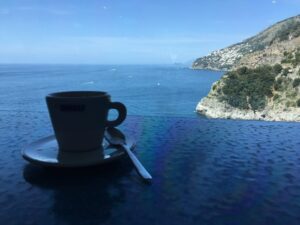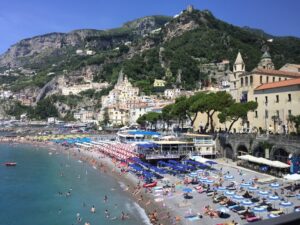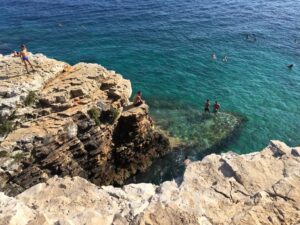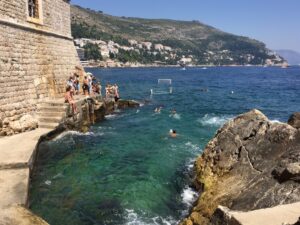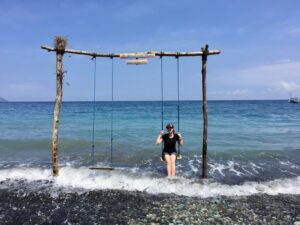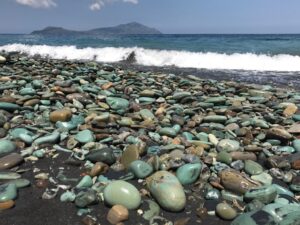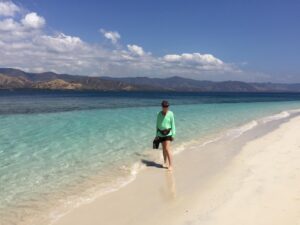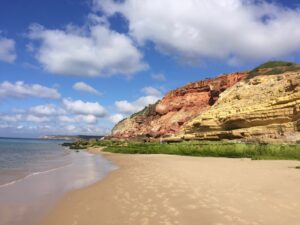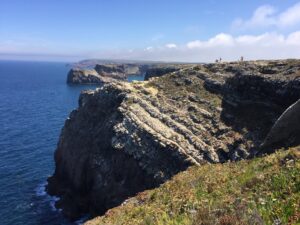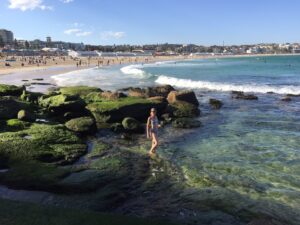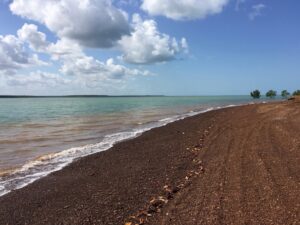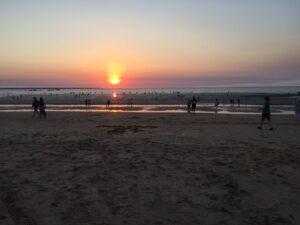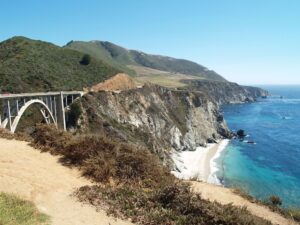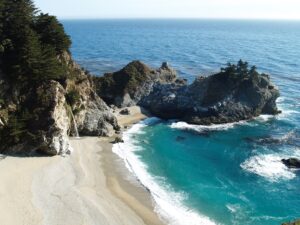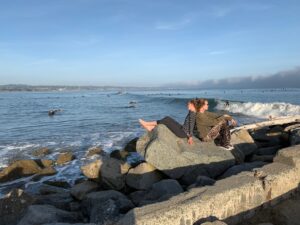Tuesday, May 15th – Zacatitos to Queretario
We abandon our safe and familiar ship in Zacatitos. Herb picks us up promptly at Cactus Corner and drives us to the domestic terminal at the San Jose del Cabo airport. We love this quirky man who has made his life as a desert rat living off the grid in Zacatitos. About 65, long grey hair with a rubber band tying his scruffy beard beneath his weathered face. We pass him our remaining groceries and I slip into the back seat of his rattly car. 30 minutes later, at Art’s request we stop at the Subway on the way to the airport toll road. Herb and I wait in the car and an elderly American saunters up to ask us directions. In the 5 minutes we are waiting for Art, we learn this man’s story. We take the toll road to the airport and Herb deposits us curb side and we roll our luggage into the terminal. Domestic check in is a breeze, we pass through security in a snap and spend an hour waiting for our flight at the gate. Easy Peasy.
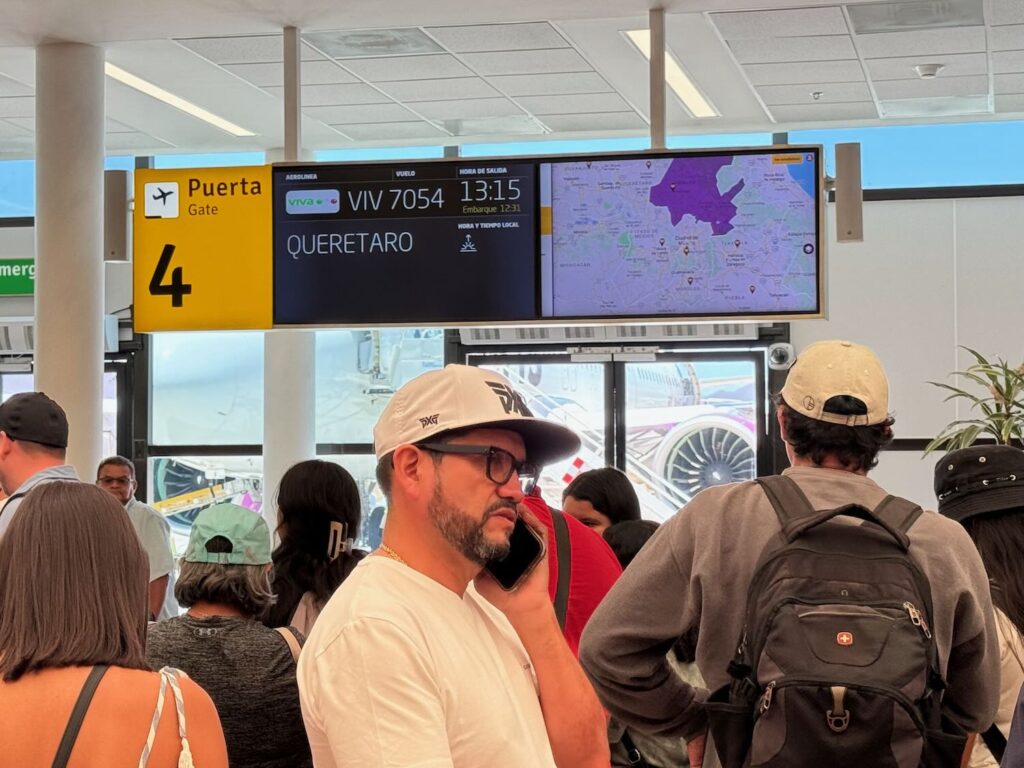
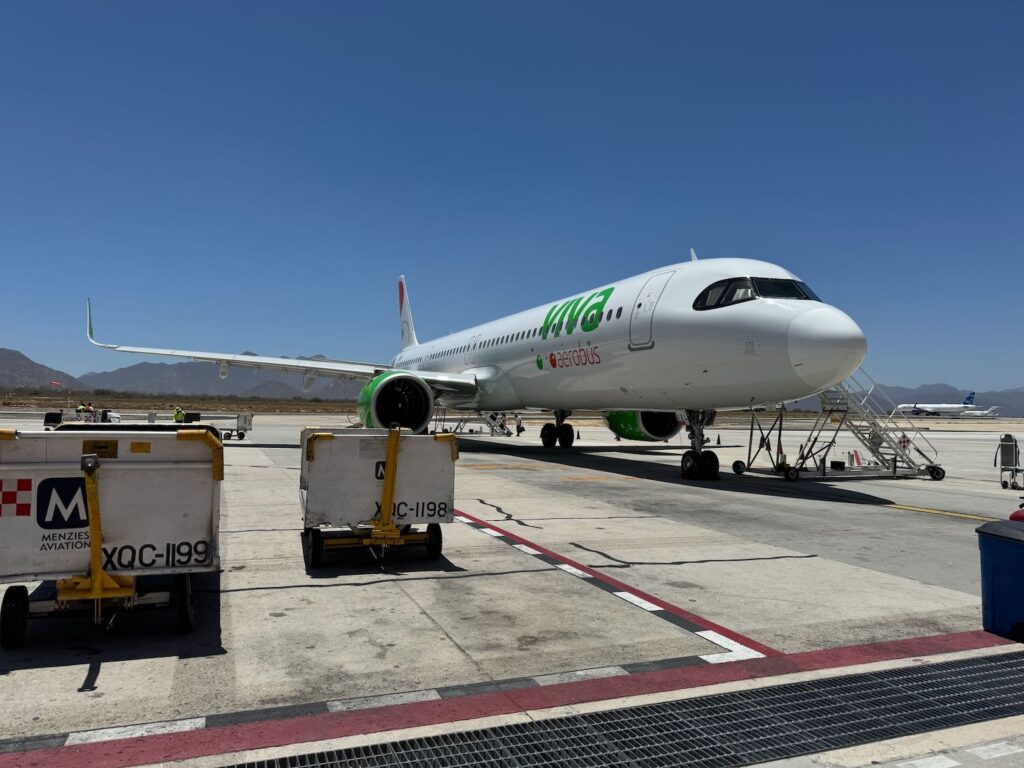
The flight to Queretaro is about 2 hours. Our flight path immediately takes off over the Sea of Cortez to the mainland and for 45 minutes I stare down at endless ocean. The mainland appears and the mainland is hazy with air pollution. I see curls of smoke twirling upward from fires. Are these dump fires or controlled burns? We fly over an expansive city grid. Guadalajara? Art opens the messy and unappetizing Subway sandwich but I am grateful for a few bites since our breakfast was minimal and our stomachs grumble. There are no snacks or free drinks on Viva Aerobus. We buy an original Coca Cola to share.
We land at the Queretaro airport, claim our luggage and wait in a taxi line to buy a ticket into the town. The ticket is $450 pesos ($30) and the drive takes 45 minutes. Art and our driver converse in Spanish and I occasionally ask for translations. We pass through sprawling outskirts of Queretario. Clover leaf freeway overpasses, Industrial complexes, indistinctive shopping streets, the colors washed away by years of heat and dust and pollution. It is hot and our taxi is without air conditioning but nevertheless, I am fascinated by all that we pass both ugly and beautiful. I soon see the cathedral domes old town Queretaro and our taxi drops down into the heart of the old city, depositing us in front of our Boutique Hotel, Casa del Atrio across from a cathedral.
We pry open immense wooden doors and enter a dark foyer. A woman sits at an ornate desk in the dim light. Our eyes adjust, we hand over passports and she soon guides us over uneven paving stones and through several courtyards to our spacious room on the first floor all the time telling us that she has upgraded us to a suite and that we are going to love our room. We see no other guests and the ancient building with interconnected courtyards feels otherworldly, almost haunted. She unlocks our door with genuine brass keys and we step into our room with 12 foot ceilings, two double beds and two weird but genuine abstract paintings. The furniture is an eclectic mix of creaking antiques and faded oriental rugs. I stand on tiptoe to creak open the double french windows that open onto the street and are layered with smudged panes of solid glass and iron grill bars beyond. I know that in the morning, I will not wake up wondering where I am, a feeling I dislike in most American hotel chains. This room is distinctive and I am not in Kansas anymore.
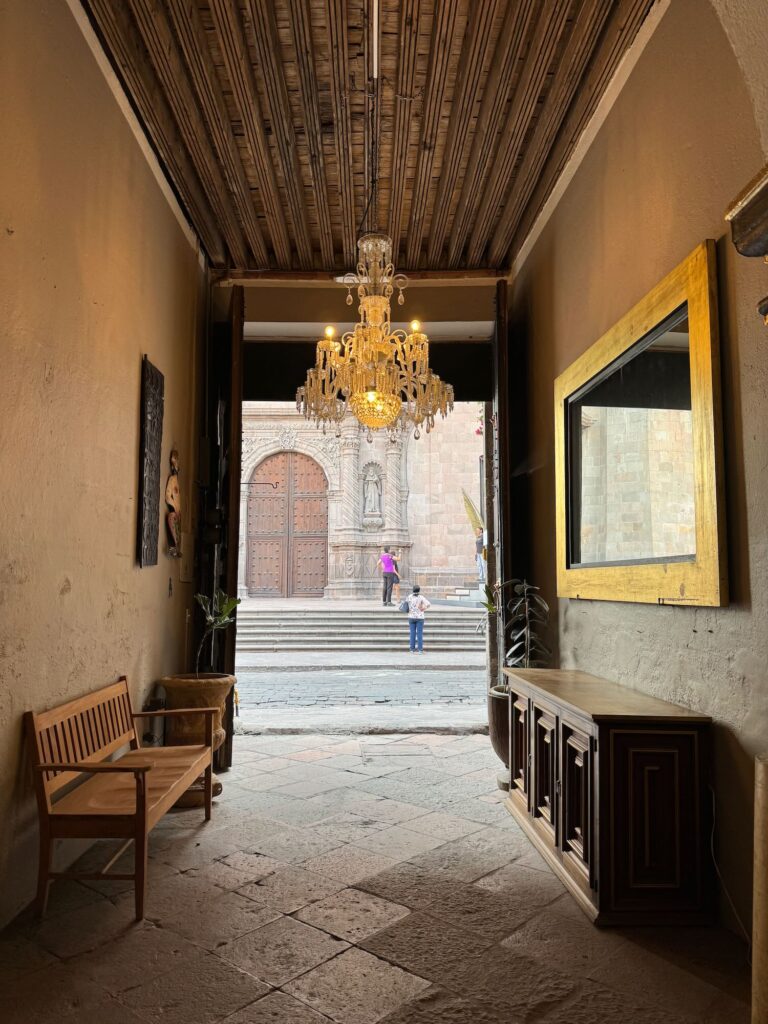
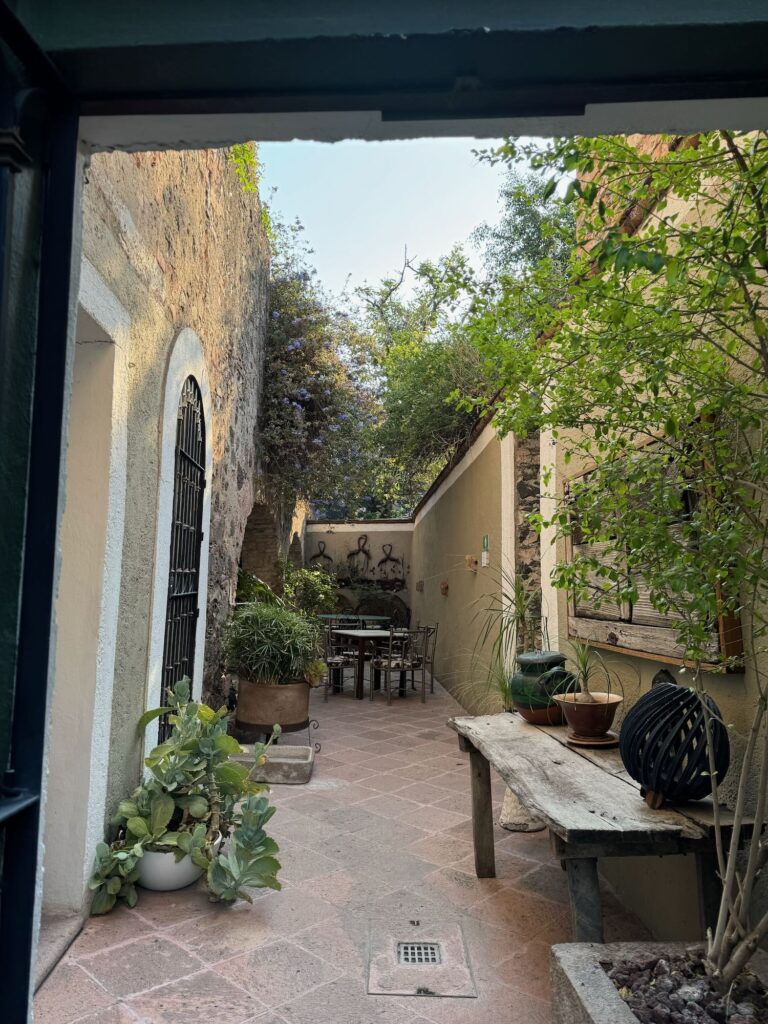
There is a large flat screen T.V. tucked into an alcove about a carved Spanish buffet. The woman shows us how to operate it and both Art and wish she would hurry up with her instructions because it is doubtful that we will use it. We do however pay attention to the air conditioning instructions.
Within minutes Art and I exit the labyrinth of our courtyard hotel onto the blinding street outside. It is 5:30 P.M. There is a recommended restaurant two doors down from our hotel. Although it serves other local dishes, its specialty is insects. I step into the foyer and I ask to look at the menu. Long and polished wood tables extend the length of their patio courtyard with a colorful mural along one wall. It is upscale and expensive and between the insects and the price, this is not going to work for Art. He slides back to the sidewalk impatiently waiting for me. I take photos of the menu and the various grasshopper, maguey worm tacos and tarantula appetizers available. Page two lists steak options, the prices far surpassing a maguey taco. I have boarded my pet bearded dragon and I text the Veterinarian the insect menu. The staff are both fascinated and disgusted and reply that ‘Princess’ would like a plate of grasshoppers in all sizes. If only Princess were with me. I looked into bringing her on this trip but reptiles are not allowed to travel internationally and this inequitable rule troubles me. Princess is adorable, docile, only 12” long, has all reptile required medical documents and cannot reproduce. As a result I find myself resentful of those who can travel freely with their dogs and cats.
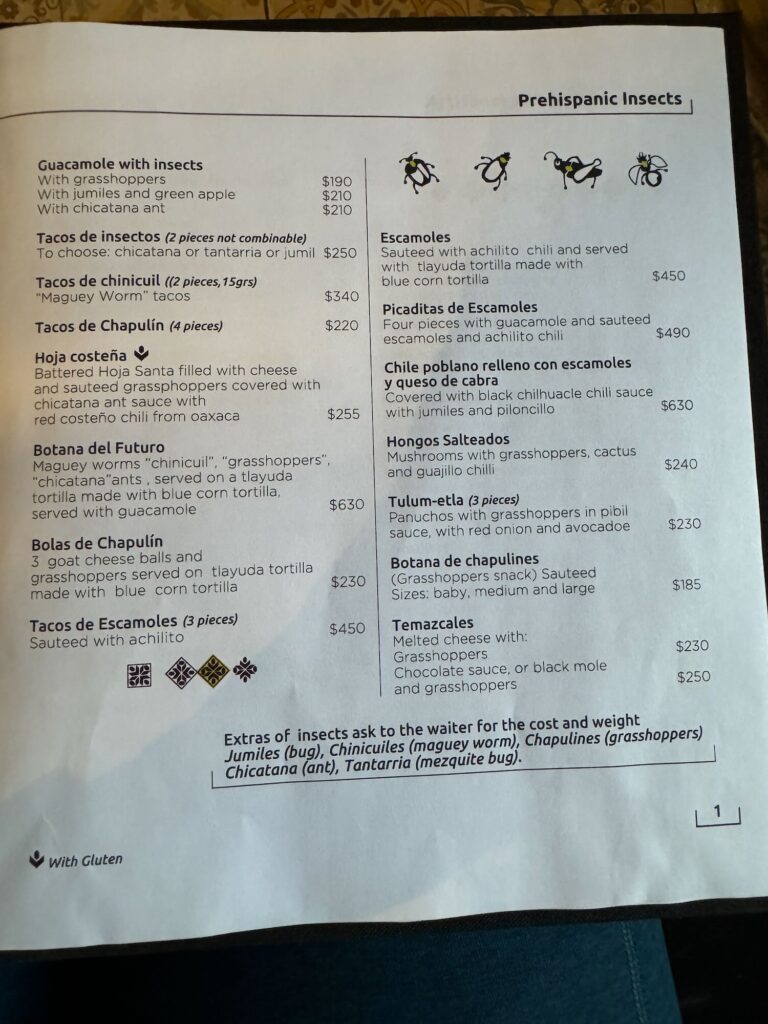
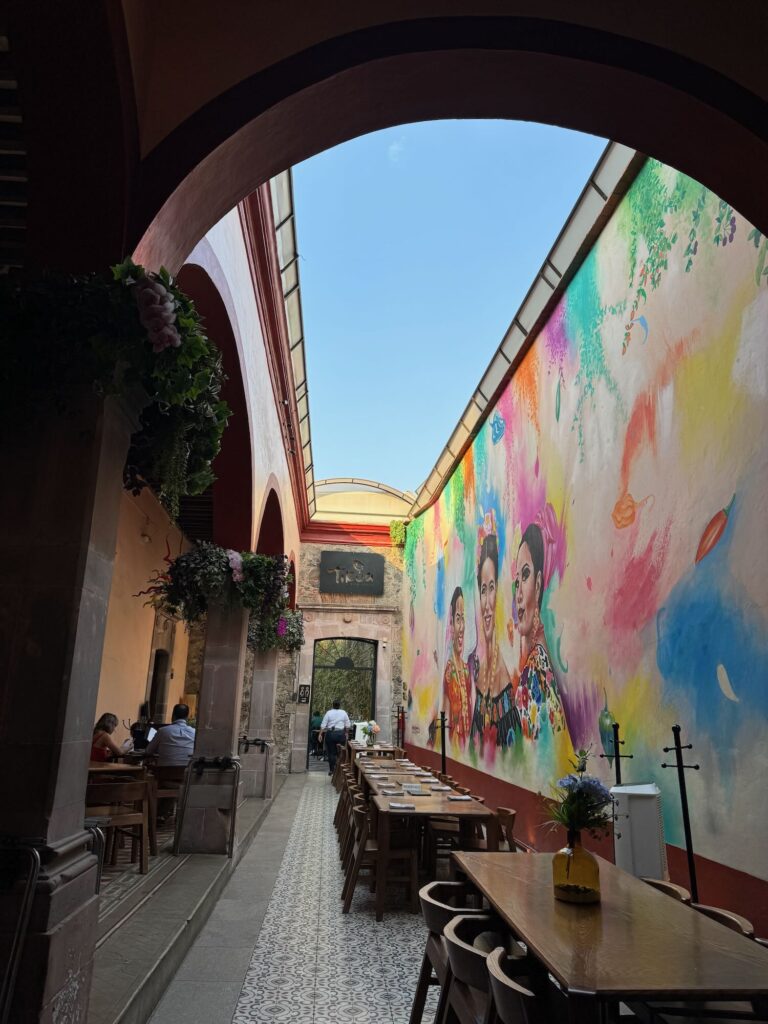
Queretaro is a beautiful colonial city studded with Cathedrals, ambient parks and museums. We wander a block down to a major pedestrian promenade and turn left. Ahead is a park shaded by ancient trees, the crowns of the trees intertwining to cover a vast city block and they form a thick leaf canopy over 12 feet deep. Wrought iron benches line the shaded perimeter and people lounge lethargically in the shade which seems to be 10 or 15 degrees cooler than on the unprotected sidewalks. A few overly optimist vendors have set out their handicrafts and tiny portable carts sell balloons and cheap wind up toys to the few children brave enough to be out in this heat. By 6:30 a few street musicians have found their way to the promenade and the temperature has dropped slightly. I’m beginning to understand the afternoon siesta and surmise that by 8:00 P.M. the promenade will be busy and sidewalk restaurants will be spilling over with diners starting to come out to enjoy the cool of the evening.
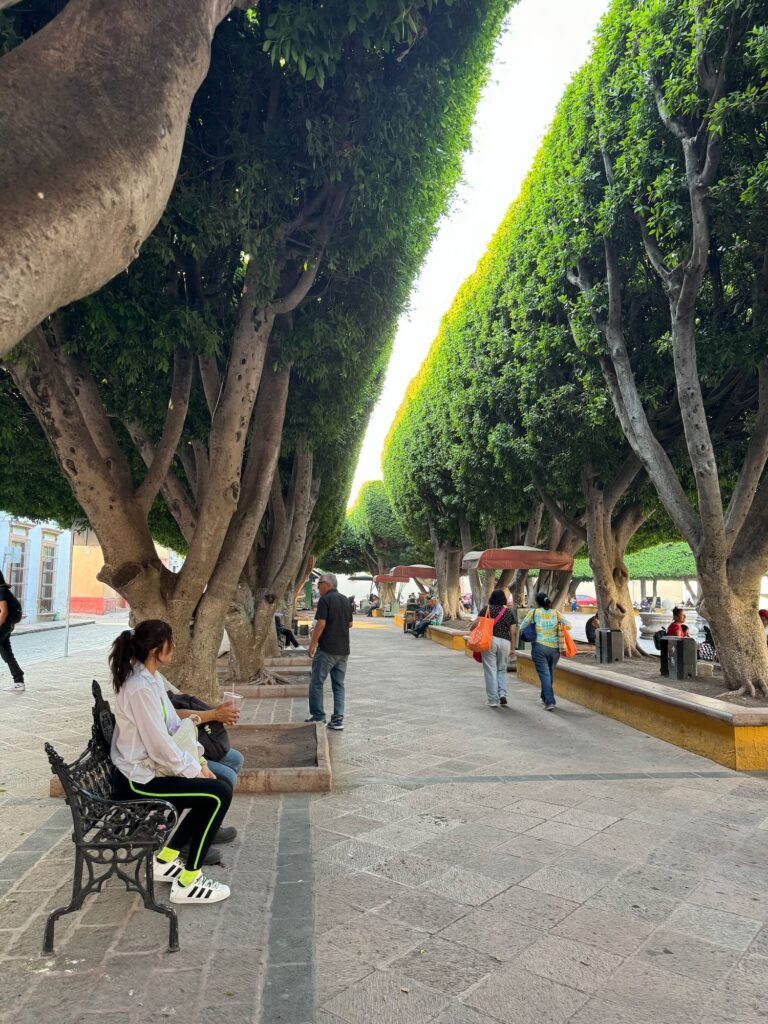
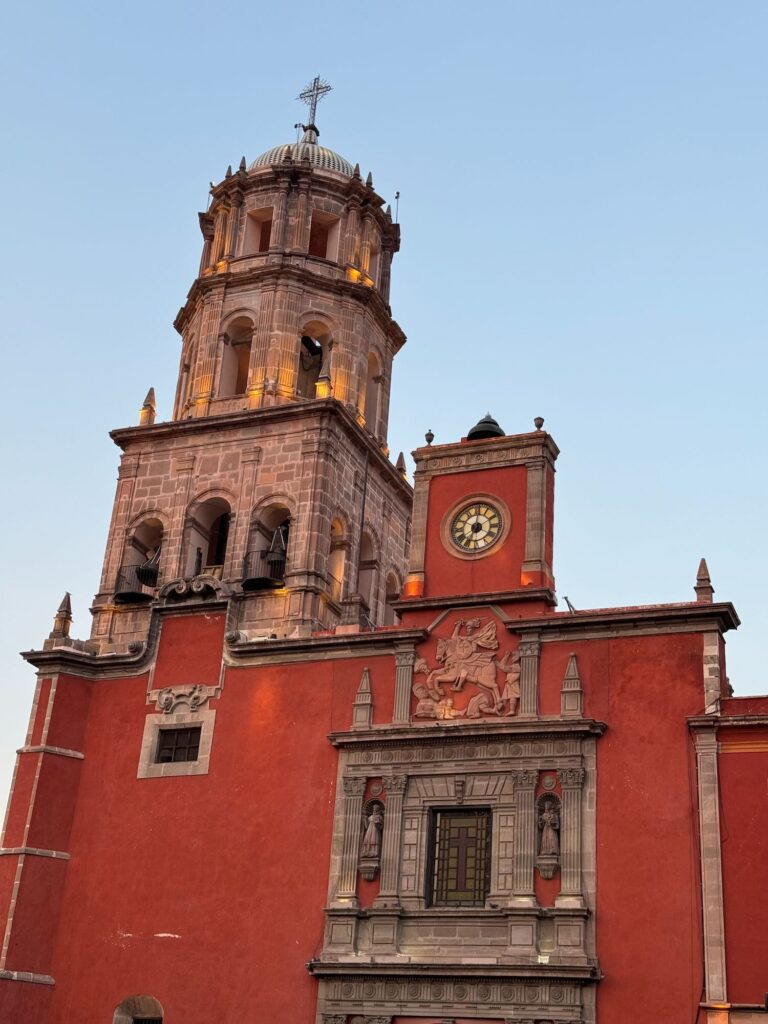
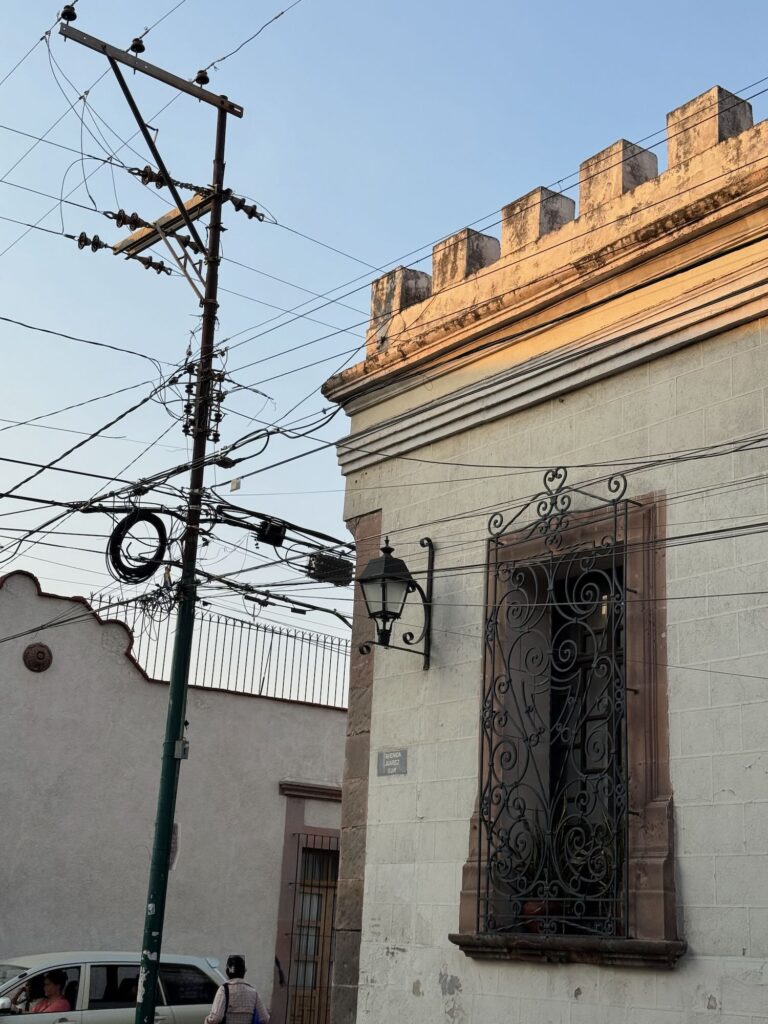
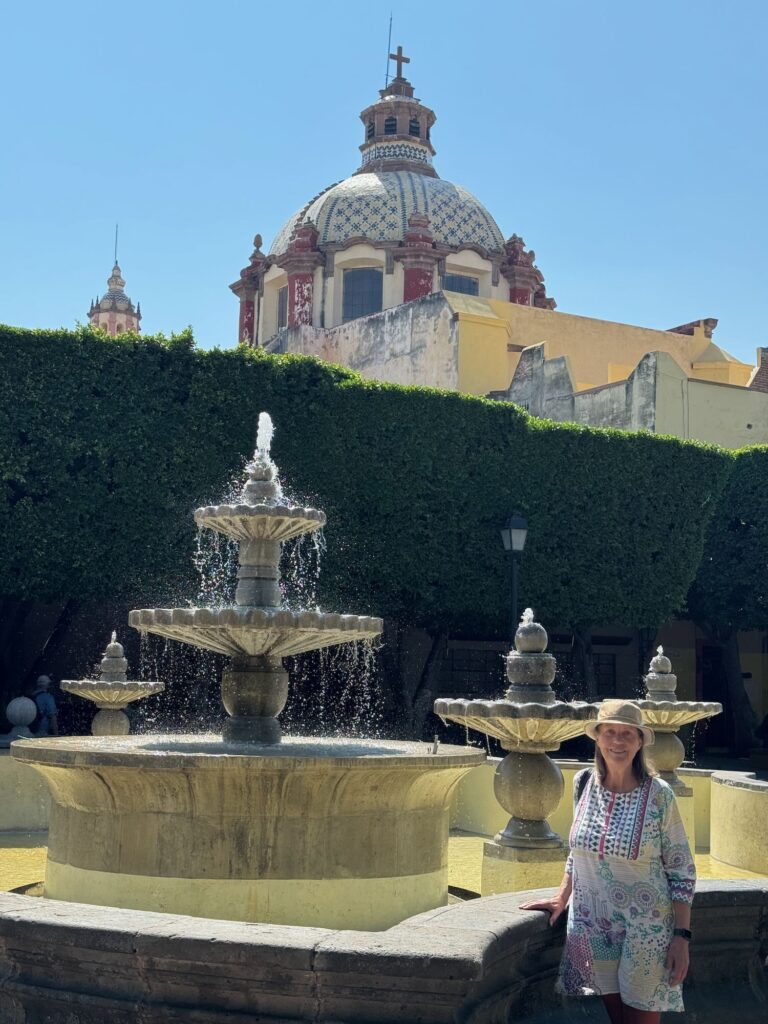
Art and I wander a few blocks and find an inner courtyard cafe where we enjoy two for one mojitos. We leave and walk nearby streets looking at restaurant menus trying to choose where we might have dinner? For those of you who don’t know us, we are extremely dysfunctional when it comes to deciding on a restaurant. We try to laugh at ourselves and change our habits but they are deeply ingrained. Although, Art has never farmed rice, he was raised frugally in Okinawa Japan and low prices and large portions are what he looks for in a restaurant. I too was raised frugally but I was a privileged only child of academic parents with a small appetite and my wish is for ambience and a unique taste experiences. After 30 minutes of wandering uneven cobblestone streets and finding nothing that meets both of our expectations, our tempers grow short. We return to the same courtyard cafe where we drank mojitos. I am not at all surprised when the inexpensive chicken breast a la mushroom sauce that we order to share is shoe leather quality with a semblance of mushroom soup poured over it. I order the only white wine available and it comes in a screw top airline size wine bottle and is sickeningly sweet. Art apologies but no apologies are necessary. This is what we do and how it often goes. Perhaps tomorrow night will be better. We are forever optimistic and still married after 33 years of restaurant bickering.
We enjoy a leisurely morning and reasonably good breakfast in our hotel courtyard. Weak coffee, fresh squeezed orange juice, a lovely fruit platter and I choose mushroom tacos instead of eggs. Art has bacon and eggs. We time our morning so we will be at the Art Museum across the street when it opens at 10:00 A.M. The architecture throughout the city is Colonial, worn and beautiful.
Wednesday, May 16th Queretaro
The Museo de Arte, across from our hotel is in a a stunning Colonial building and has a surprisingly good collection. Several galleries are dedicated to an upcoming realist artist, Raoul Campos. At first look, his large canvases feel as if they were painted in the Renaissance period so competent is he with his brush and the imagery is fanciful and surrealistic. After a few rooms of Raoul Campos’s work, his imagery of fish and bowls on heads becomes tiresome but his handling of paint is remarkable. Other galleries unfold with abstract works by Ixrael Montes, my favorite being a large bronze sculpture of a lobster. The entire museum is a delight and two gallery of black and white photography capture our interest. An attendant lets us into the photographic galleries, turns on the light and then turns them off when we leave. We are the only visitors to these galleries and we surmise the light turning on and off is to protect the sensitive images. Remarkably poignant images from years past.
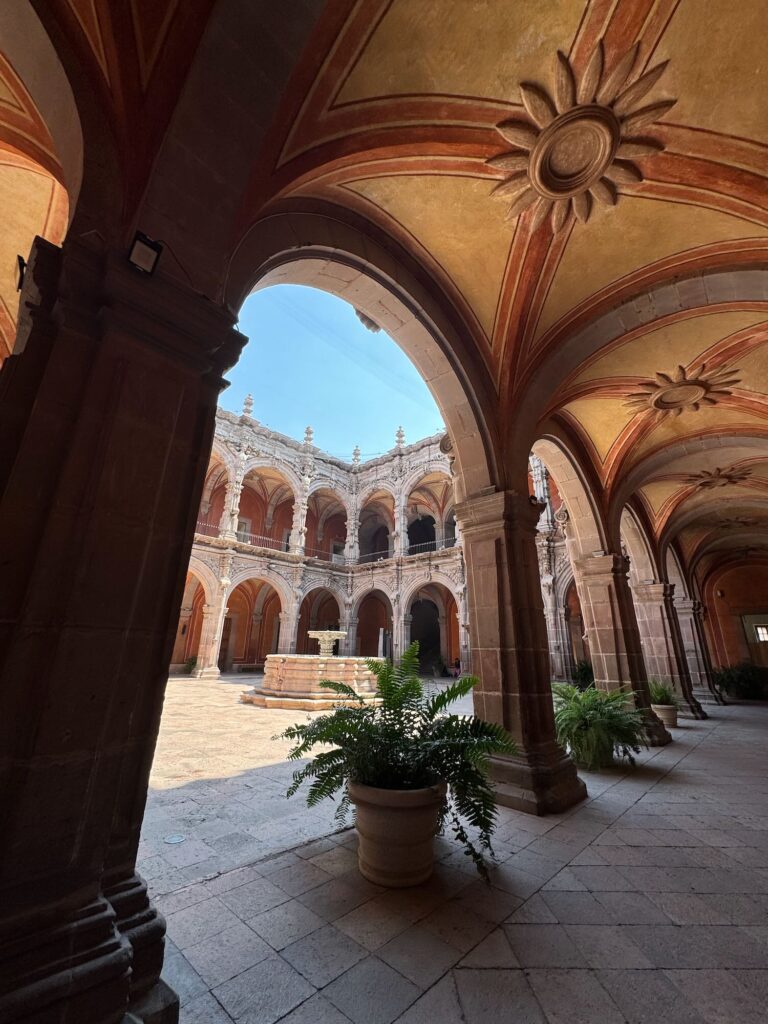
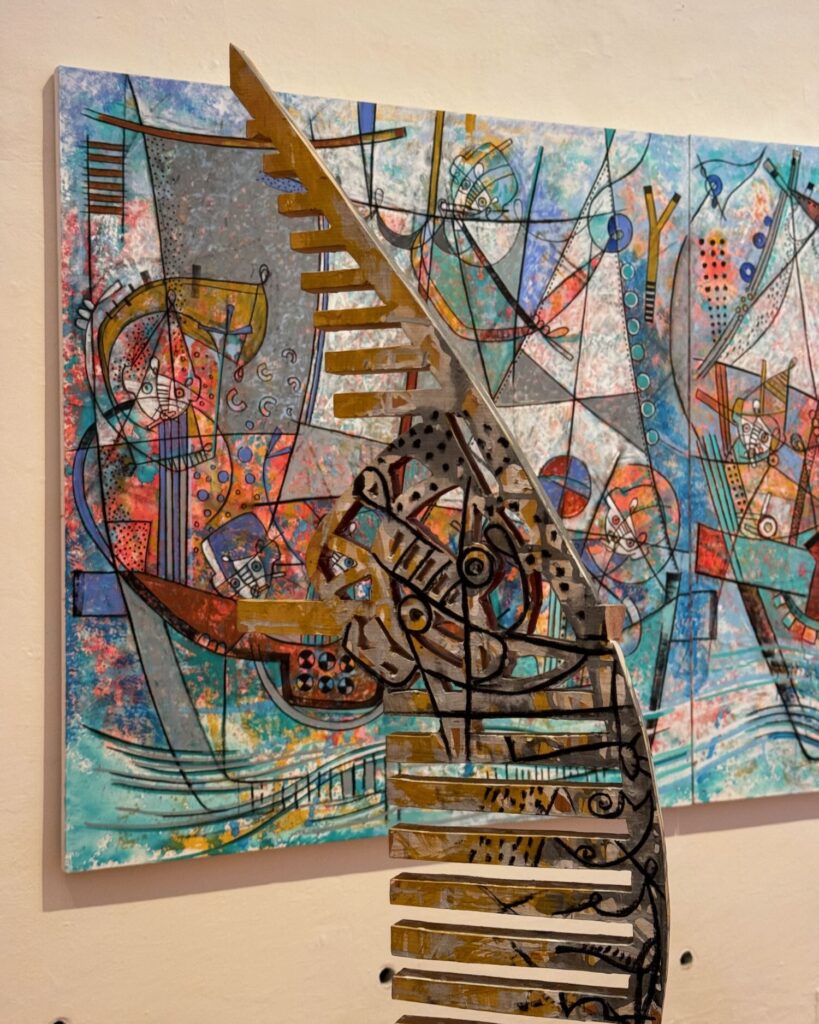
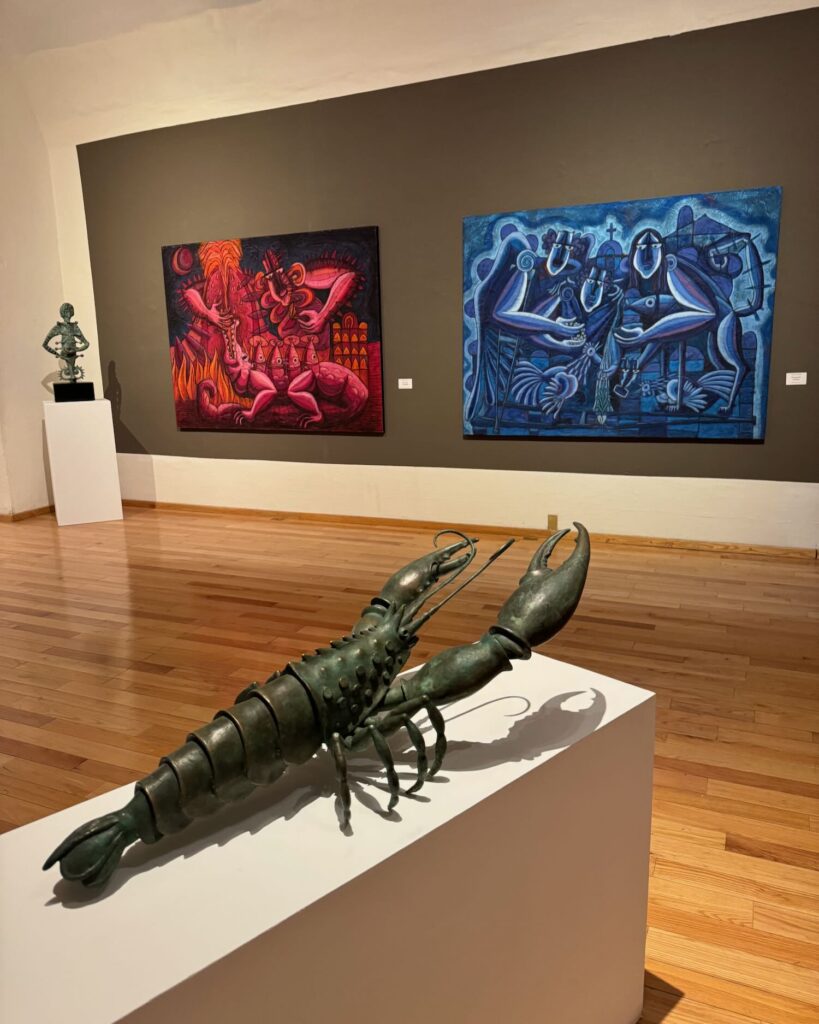
Queretaro has many museums and they are all free but we must sign a tedious ledger each time with our names and marking the time of our entry and where we are from. Our next museum has a quirky array of exhibits. One gallery features, Mexican street fighting posters, another gallery a collection of soap containers. The collections are carefully curated and we take our time trying to absorb and remember the vintage graphics of the various collections. There are galleries that leave us speechless and shaking our heads because we feel the art work is terrible but there are others that are a delight. Our hotel Casa del Artio is so conveniently located that we return twice to use the bathroom and to rest.
After an unmemorable late lunch in a restaurant off a shaded plaza, we venture to another quirky and fascinating museum featuring street art work. Art needs to explain the significance and the coherence of the show but I soon grasp it and delight in the array of taco and hand painted signage art that we often overlook. I can relate to the graffiti art and the hand painted skateboard and surfboard art of Santa Cruz. I think of the many one off and creative signs at Renaissance Festivals that I have participated in over the years. The museum is a treasure of archival signs.
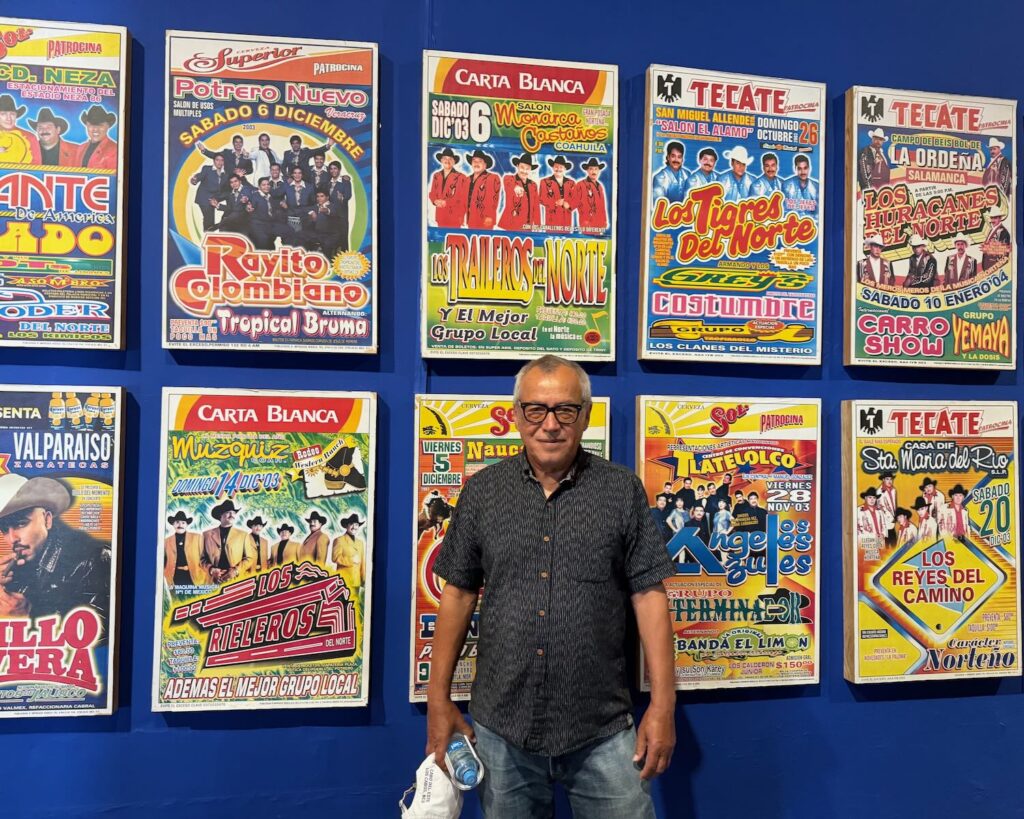
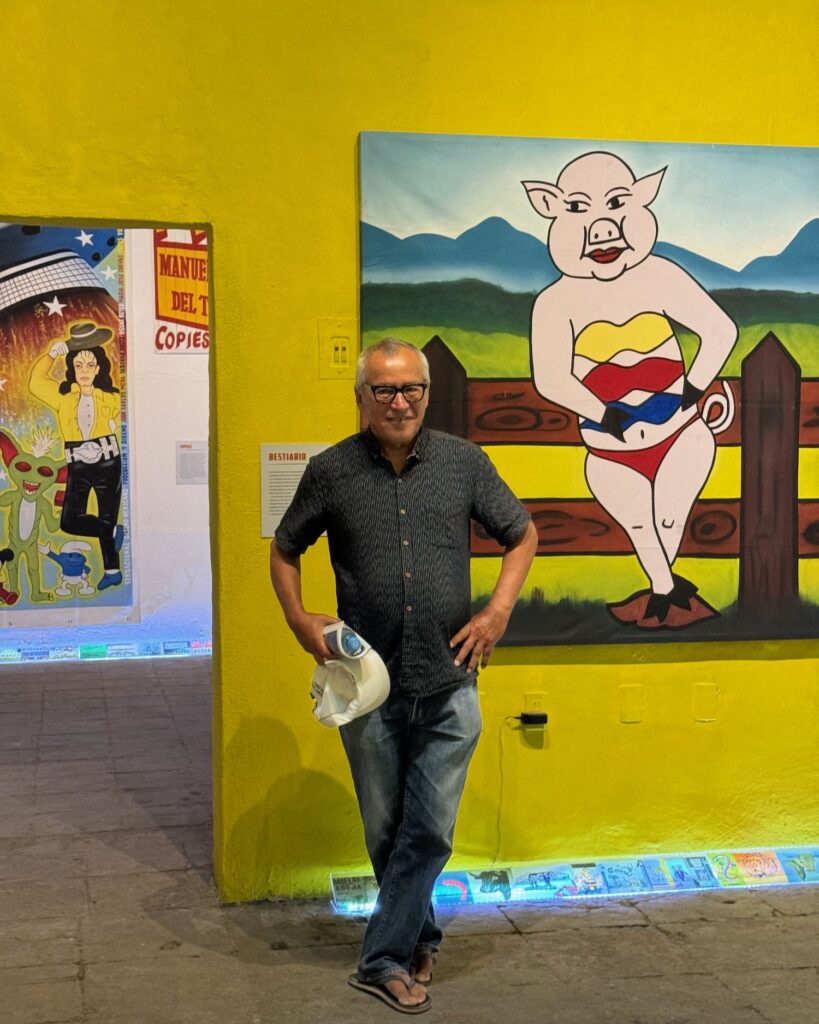
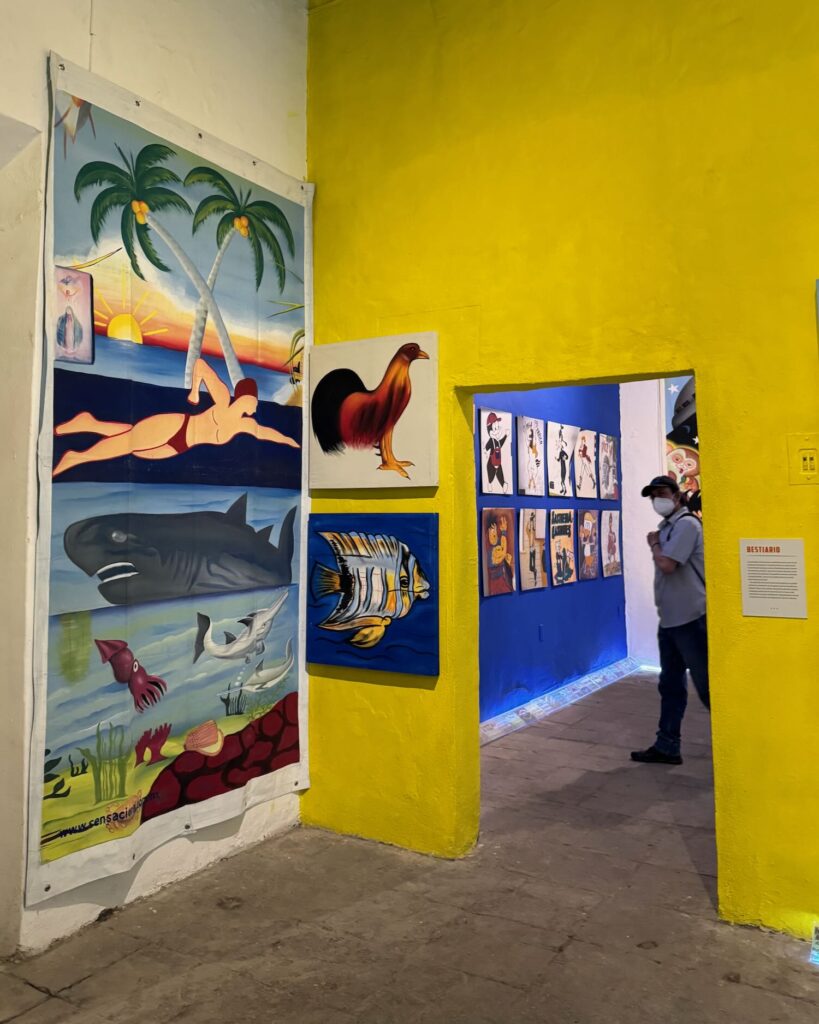
A calendar museum is starred in our guide book and we wonder what its draw might be? We have to pay to enter this museum but it is well worth it and easy to figure out since the many hundreds of calendars are clearly dated. The museum grounds are lush and there are many visitors in the gardens. I surmise that locals pay the modest price for a yearly membership to enjoy the gardens anytime and dine at the cafe. Much of the calendar art work is superb and we soon grasp who the calendar artist rock stars were during their days. We wish to see the original paintings of our favorite, Jesus Helguera but the originals are elsewhere. There are pin up calendars and calendars reflecting the politics and cultures of each era. Framing the edges of most calendars are ad’s for cigarettes, alcohol, perfume and soap. The museum is great fun and a nostalgic flash back to past generations and the norms and cultures of those bygone eras.
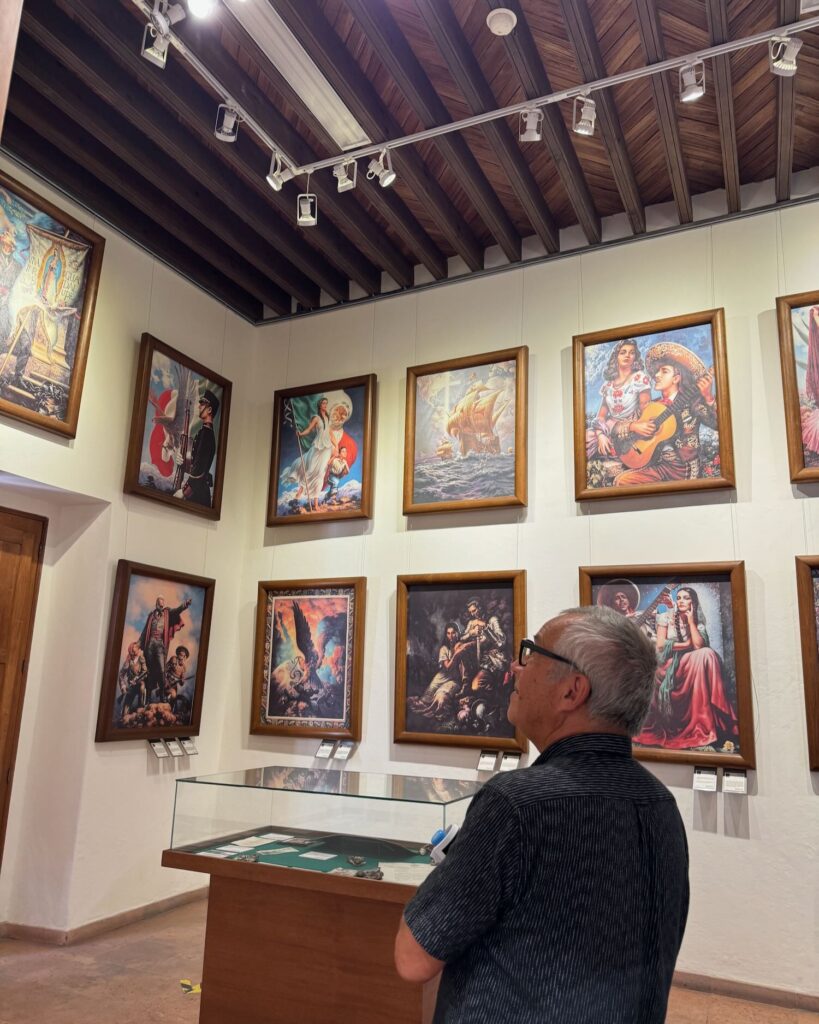
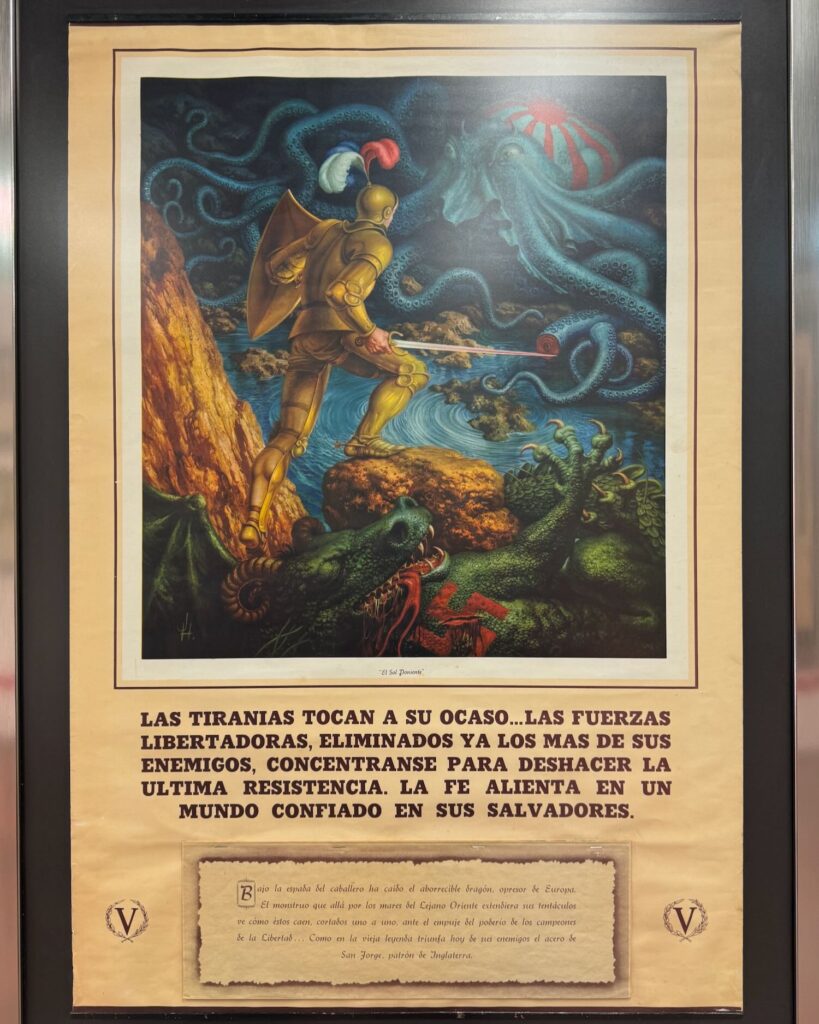
I feel that we must view Queretaro’s aqueduct and we take a taxi to the viewpoint overlooking the sprawling city below. It is brutally hot but we take the obligatory photos and following the map we walk a quarter mile downhill to a contemporary Art Museum. This museum leaves much to be desired and it is after 4:00 P.M. when we exit in search of a taxi to take us to the Academy of Art’s Institute where Art hopes to meet the director and inquire about taking a painting workshop. Art is in much better physical shape and the heat has sapped me and I long for a taxi. I watch several taxis pass by but Art wants to find one headed in the perfect and most economical direction. I finally snap and refuse to walk a step further. I shelter in the minimal shade of a signpost before Art hails a taxi and we are rescued. None of the museums or taxis have air conditioning but in some ways, I appreciate that the city and museums rely on thick walls, inner courtyards and canopies of trees. Also, sensible people take afternoon siestas and don’t venture outside during the heat of the day. Tourists do not have the luxury of time nor are we sensible.
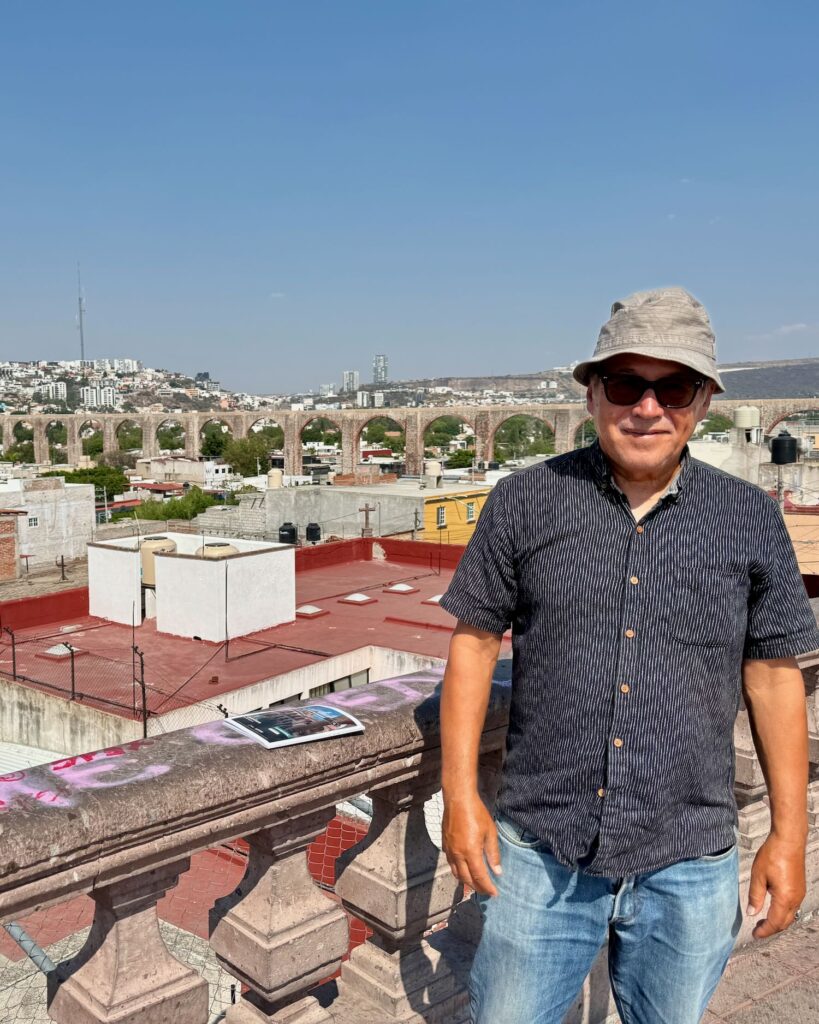
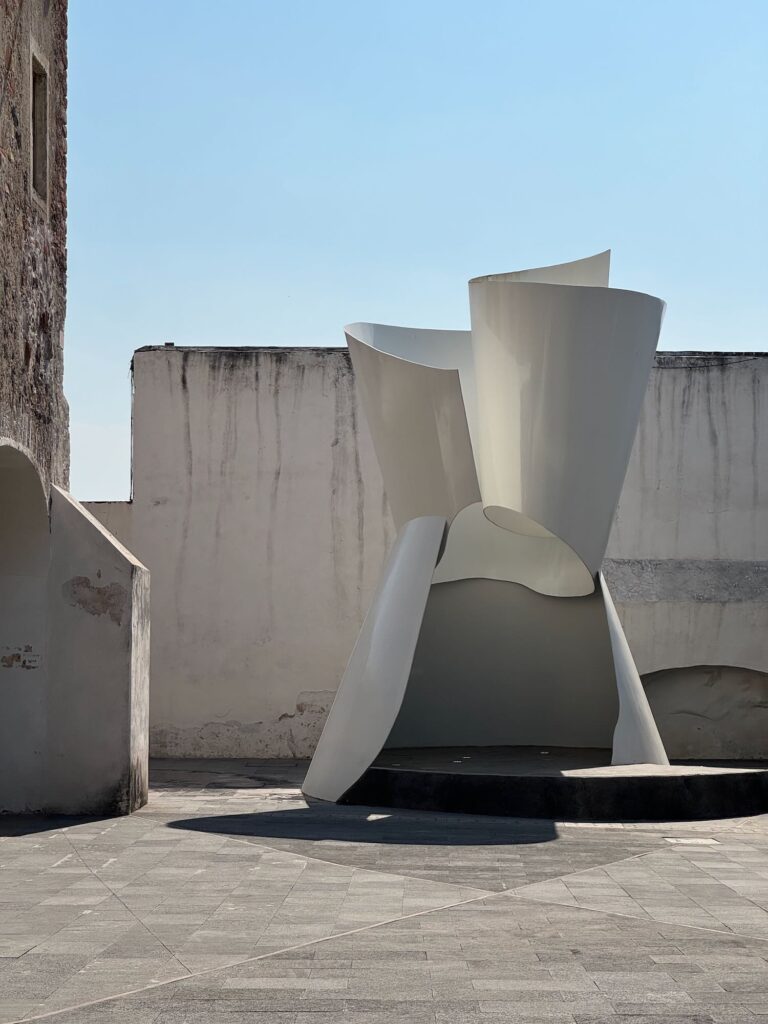
Our taxi drops us off at the Academy of Art and Art rings the bell and and the intercom crackles and a willowy young woman soon comes to the iron gates and ushers us into a sunny courtyard where we wait while she finished talking with a student. Five minutes later she ushers us through a dim hallway and into her office. I see plaster casts and busts propped on dusty shelves and easels in the hallway and a beyond. One student stands at her easel drawing the planes of a nose. The director gestures to two chairs. Art asks about the study program and she tells us it is a three year program and requires beginning at the bottom with figure drawing and working the way up completing a series of class blocks. This is not what he is looking for and they eventually come to occasional week long workshops taught by qualified visiting artists who have studied in Italy. From what we gather, these week long workshops cost between $1200 – $1500. This is what Art is interested in and she tells us that the next one will be in the fall but the dates are not yet set. She shows us two of the classrooms. There is a figure drawing class in progress but we cannot enter because there is a nude model. Art will need to keep checking the institutes Instagram page for dates. They do not have a web site or a dedicated e-mail list.
The day is still blistering hot and we walk many blocks to the terrace of a 5 star hotel where we hoist ourselves onto high stools and sip cosmopolitans and share a cob salad. The liquid relaxes and the salad is just what we need to bring us back to life. The weather cools slightly and wander cobblestone backstreets. The late afternoon light sheds a magic over it all and I forget how tired and swollen as my feet are. For dinner, I hope for a salad and a glass of crisp white wine. Art makes an effort for this unfold but there seems to be no white wine available at any of the restaurants. Mixed drinks, shots of tequila and red wine are abundant. Eventually we are directed to a busy side street and find not only a wine bar but several Italian restaurants. We enter an upscale restaurant and I feel momentarily embarrassed when I see the maitre dees eyes scan our wilted cloths his eyes landing at our feet. Both Art and I are wearing sandals. Nevertheless, he graciously seats us and I order a single glass of excellent sauvignon blanc. The glass is elegant and the temperature of the wine perfect. It costs about $11 which by California wine prices is nothing but translated into pesos, it feels expensive. Art drinks an icy Topo-Chico and we share an arugula and prosciutto pizza. Returning to our hotel, I stop at Tikua restaurant again to examine their menu. The insect appetizer options still fascinate me.
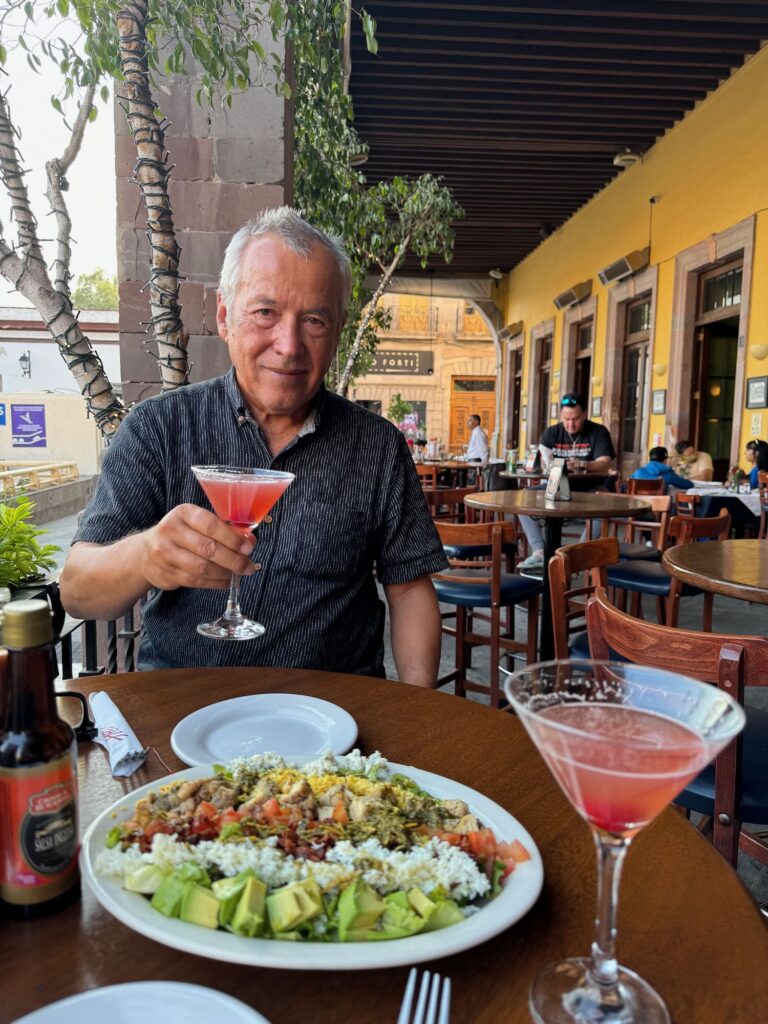
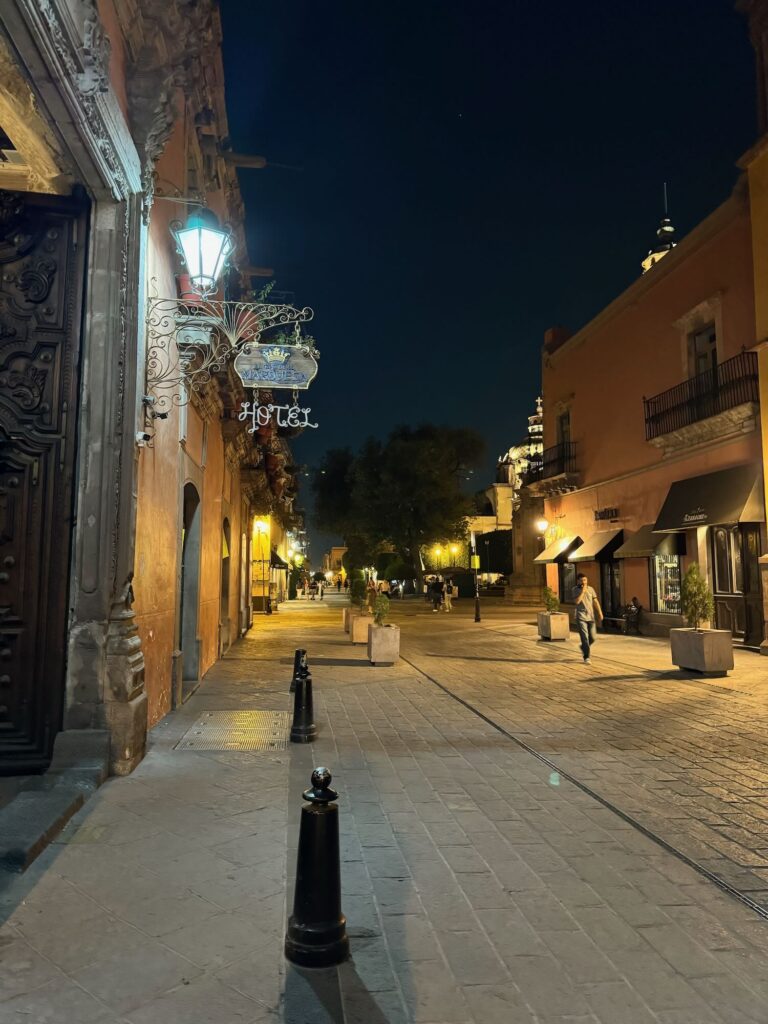
Thursday, May 17th. Queretario to San Miguel de Allende.
At 8:00 A.M. Art and I stroll out in search of breakfast. We relish the relative cool of the morning knowing that it will be short lived. We choose a courtyard cafe a few blocks away and we drink marvelous cappuccinos. Art orders eggs and bacon and I choose an open faced toast with arugula and prosciutto. We stroll back to our hotel. Shops are beginning to open. We pop into a few leather and hat shops and I consider a belt for John. Art fingers a tightly woven Panama hat. One street is lined with Quinceanera dress shops and we watch a plump young girl twirl in a green dress while her friends and her mother gush approvingly. Art imagines how beautiful Molly would look in the green dress with her red hair cascading down. I am interested in the hoop petticoats required as undergarments and the cinched waist ties necessary to transform bodies into hour glass shapes. The tradition looks like it is a Cinderella fantasy and almost as painful as lacing a Renaissance Faire corset.
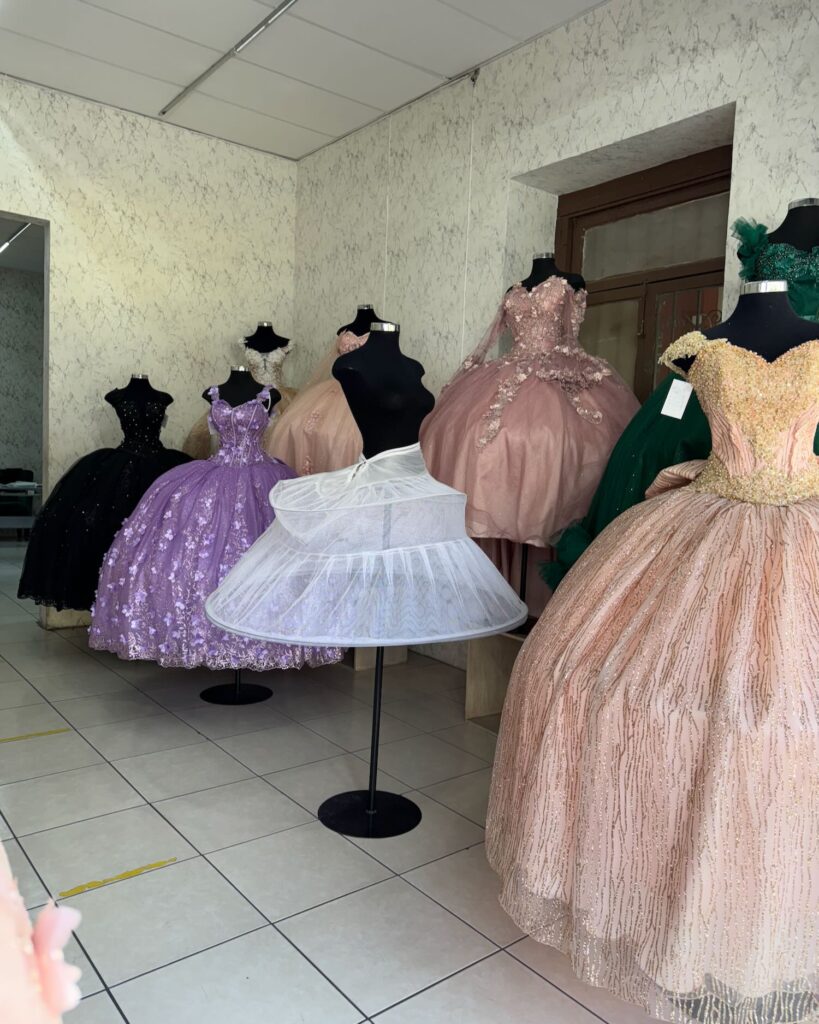
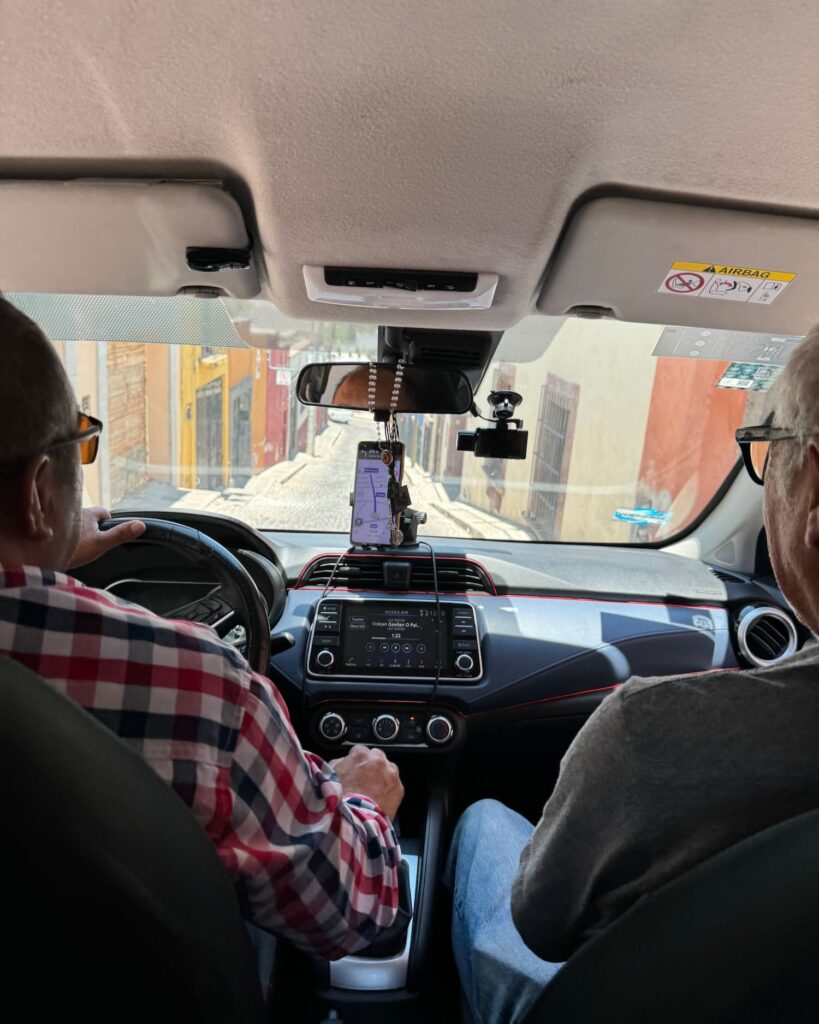
Back at the hotel, we pack quickly and our 11:00 A.M. taxi to San Miguel de Allende is waiting. The set price for the hour drive is 900 pesos or about $60. The driver is pleasant and chats to Art in Spanish telling him about the booming industries, aero space, manufacturing and car factories. Many are American owned as a hedge against China. The freeway is good but we pass a seemingly tragic auto accident and this clouds my mind and heart as I imagine the likely fatalities and see the half dozen paramedics repeatedly in my mind.
The drive takes 1-1/4 hours and we are soon bumping along the narrow cobblestone streets of San Miguel de Allende with the pink wedding cake cathedral perched on the hill. It’s 12:30 when our taxi drops us off in front of a closed wooden door with a small flowered tile sign above the doorway. The taxi is gone in a flash and our suitcases sit forlornly in front of the locked door. Art buzzes and an intercom crackles with a recorded message. He instructs me to stand in the narrow slice of shade on the opposite side of the street and keep watch. Art goes on a reconnaissance mission to see where we might sit while we wait for a human to open the door. An older American man strolls past me and asks if I need help? I briefly tell him our situation and he assures me that there is a cafe two blocks up and nods approvingly at the closed door saying it is a nice place. Rolling our suitcases along the treacherous cobblestones seems daunting but before we must make our decision, a young man hurries up to the door, unlocks it and ushers us along an extremely narrow interior path sandwiched between the buildings. We appraise the non assuming downstairs sitting room and he shows us a large modern shared kitchen. Breakfast service begins at 8:30 A.M. The hotel is a narrow 4 stories with only 6 or 7 rooms. He shows us three rooms that we can choose from and I pick the only room on the 3rd floor.

The rooftop terrace is very inviting so in spite of 3 flights, I opt for the 3rd floor room which after two nights will prove to be a good choice.
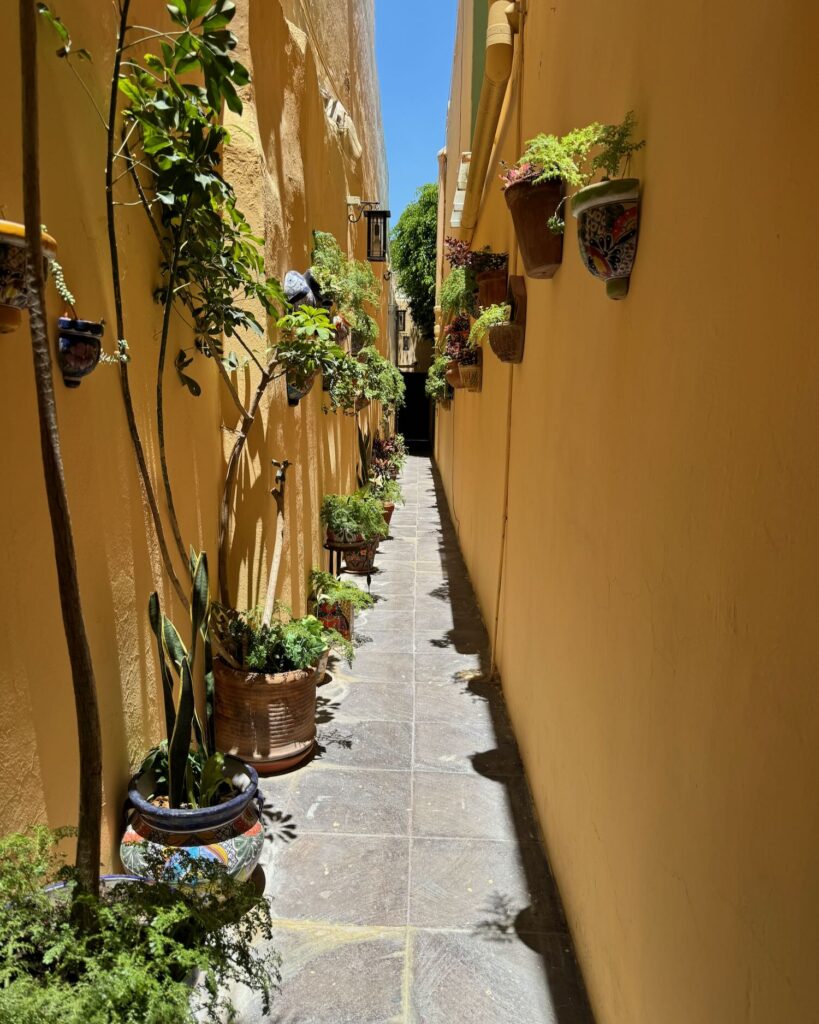
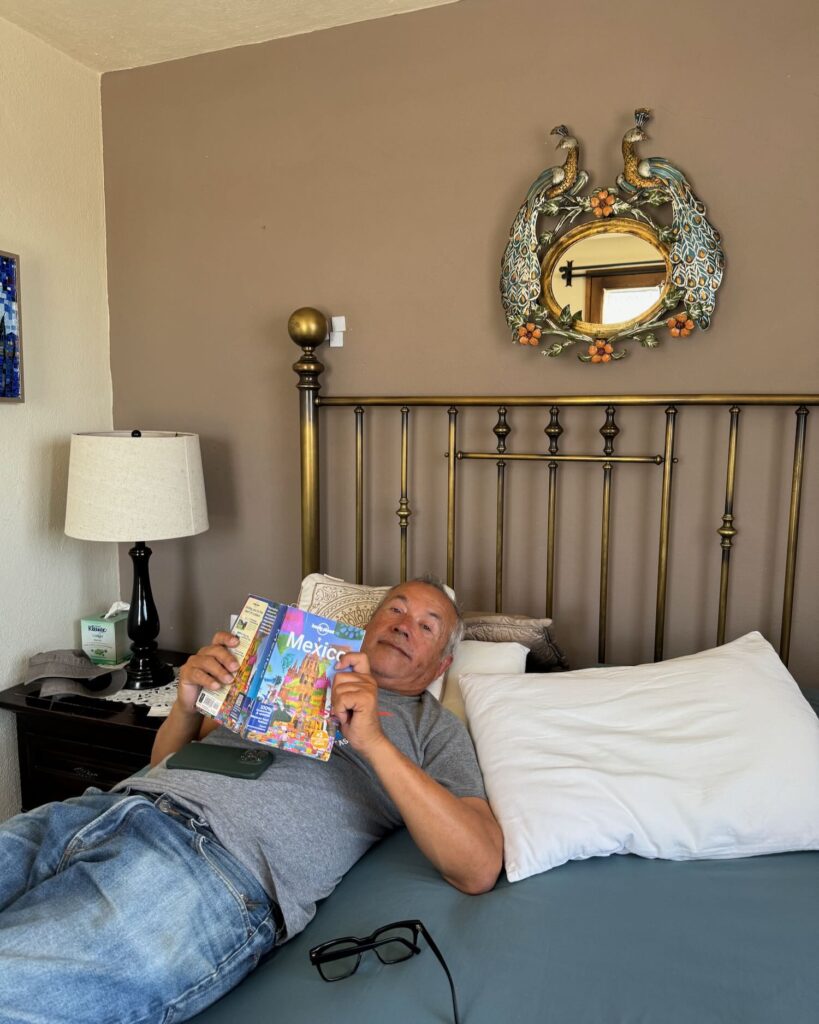
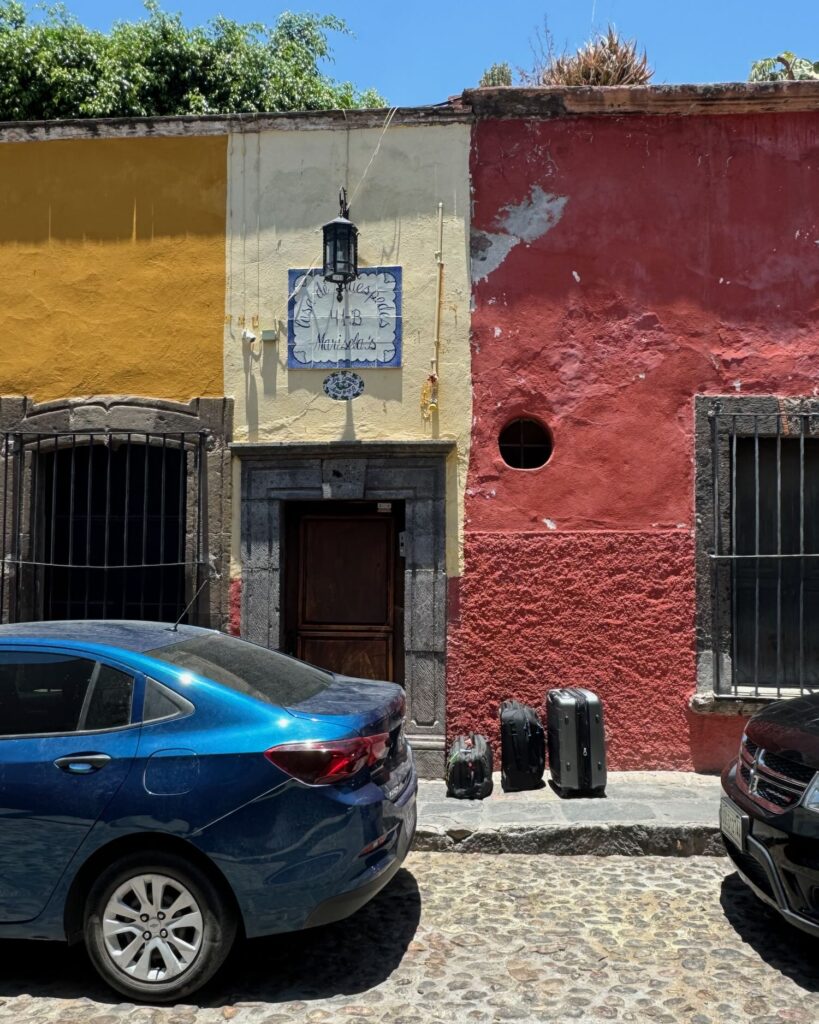
Art and I settle into our small but inviting room and are soon out on the cobblestones, orienting ourselves to the city layout and walking uphill towards the cathedral square in search of lunch. Did I mention that we are not good at choosing restaurants? (Smile)
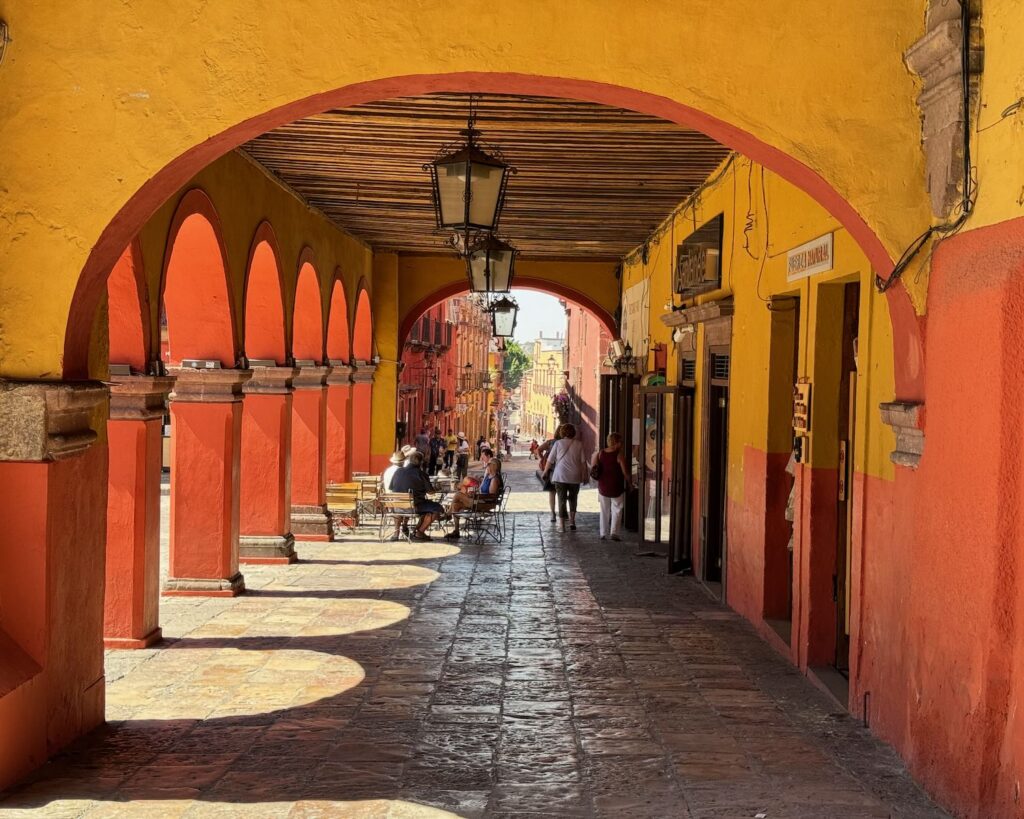
The temperature is soaring and I am sure it is 100+ in the shade and considerably more in the open spaces. We slink along the shady side of the cobble stone street looking at menus and choose a nondescript courtyard cafe off a side street. Art orders fish tacos and I choose a sashimi tostado. We share a large icy coca cola. After lunch we visit La Parroquia, the parish church of San Miguel. It’s Neogothic and built of pink sandstone and the thick stone walls cool the interior from the blistering heat. The Cathedrals strange pinnacles give it its wedding cake reputation. The vaulted ceilings are brick and light beams from the clearstory glass windows.
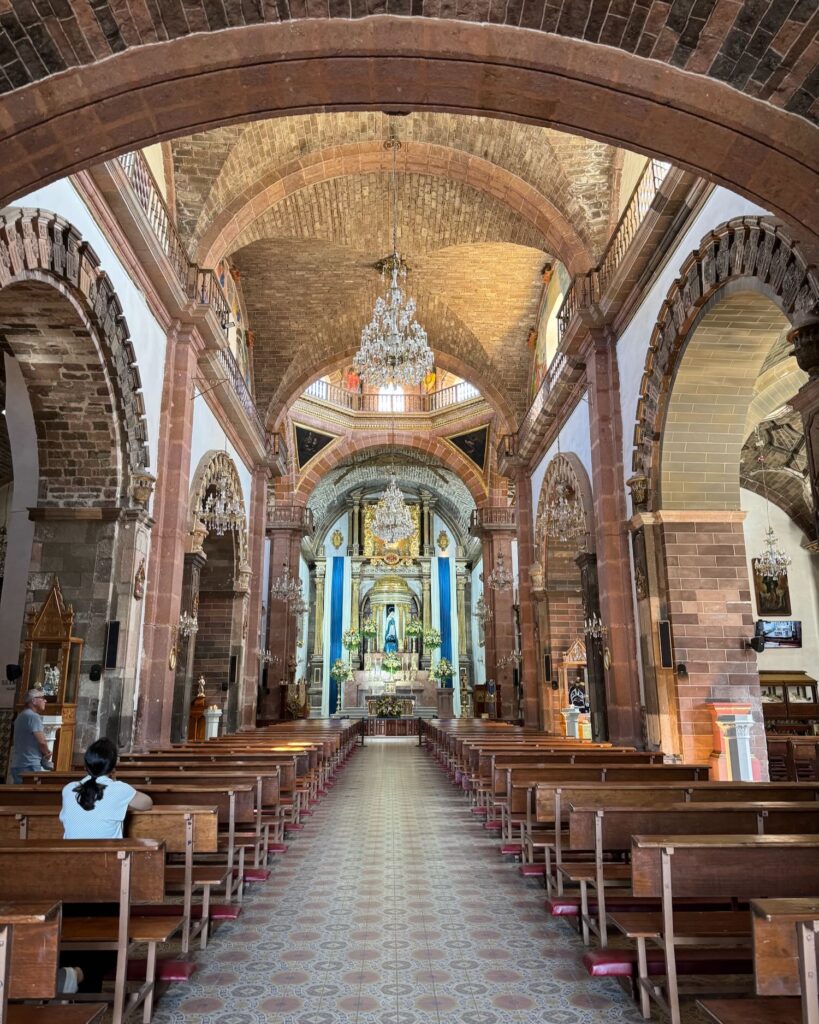
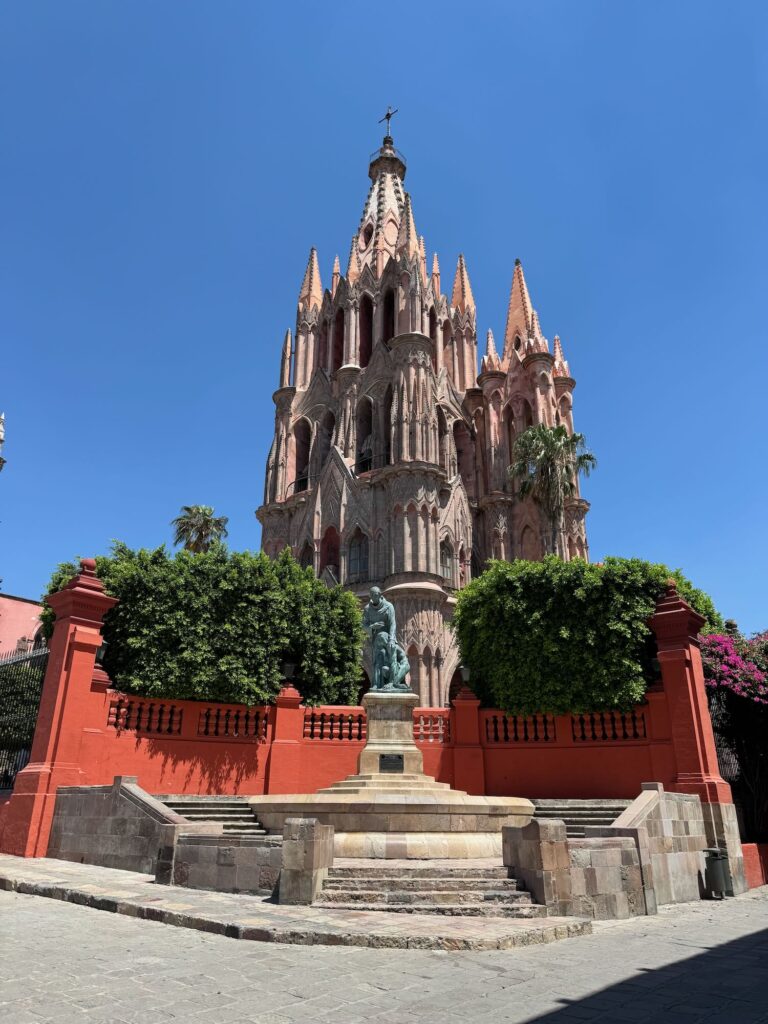
The historical museum is off a corner from the main square and we spend an hour there, reading about the history of Mexico’s independence and the city’s hero, Ignacio Allende.
Tonight we miss our restaurant mark again and choose a Paella restaurant at the end of our street. Passing several times during the day, we become prey to the woman standing outside, hawking her establishment. It is steps from our hotel, advertises, 2 for one happy hour, has a a rooftop bar and a seemingly lovely paella menu. We confidently enter and the host begins to take us upstairs to the roof top which might have been a fine choice but on the way, Art says we came for the 2 for one Mojitos. The waiter halts and says that the 2 for 1 drinks do not apply on the roof top. We’re taken aback slightly but the interior of the restaurant is cool with white table cloths and candle lighting so we choose a table by the front window. We order a seafood Paella that will take 45 minutes to prepare and two margaritas but the waiter halts us and says we may not share them but need to order 2 each and at the same time. It is likely that we would have ordered 2 rounds but we don’t want 4 drinks at once. Then I notice that the happy hour option includes white wine which I prefer so we change our order. The waiter is confused. We are confused. A young woman who speaks some English steps forward and Art tries to be funny replying that perhaps that we need a lawyer to help decipher their special? Two Mojitos now sit in front of Art and by some miracle a waitress pours me a glass of crisp and cold white wine. A beautiful seafood Paella arrives shortly but it is all smoke and mirrors and the delight for us is short lived when the squid tentacles are rubber and that there is no fish what so ever in the overly salty and greasy dish. I push a little around on my plate and can only nibble a few bites. When the bill comes, they have charged us 80 pesos more than the menu price and Art asks if we should point this out? I shake my head, Art pushes his credit card into the hungry machine, adds a small tip and we leave.
Picturesque San Miguel is a maze of cobblestone streets, expensive boutiques and hundreds of courtyard and rooftop bars and restaurants. We walk up to the main plaza which is thronging with people. Unlike Queretaro there are lots of tourists and ex-pats sitting in the shaded and park. A cacophony of competing mariachi groups lurk and play outside of every cafe. Disneyesque 12 foot puppets teeter on the cobblestones and it seems that everyone is taking a selfie or wanting their photo taken with these grotesque puppets. I can almost feel their sweat trickling down inside their sweltering costumes and their frozen faces unnerve me. Both Art and I want to leave but we first buy a large bottle of water and on the way to the register we see bottles of tequila for sale behind a locked display. Why not since we have a quiet roof top garden and three nights at our charming hotel? Back at our hotel, we collect ice from the kitchen, climb the 4 flights up to the terrace and sit blissfuly alone overlooking the city with the lighted Cathedral as a backdrop.
Friday, May 18th, San Miguel de Allende. Art has found a Pickle ball group on the outskirts of the city. It starts at 8:30 so he foregoes breakfast and takes a taxi to the courts. I enjoy the hotel’s breakfast alone. Strong coffee, a pretty fruit plate and freshly squeezed orange juice. The pastries are terrible but have a cooked to order omelet and am quite satisfied. Returning upstairs to my room, I grab my computer and climb the spiral glass stairway to the roof terrace. The morning is blissfully cool, the view is idyllic and I thoroughly enjoy two hours alone writing this blog.
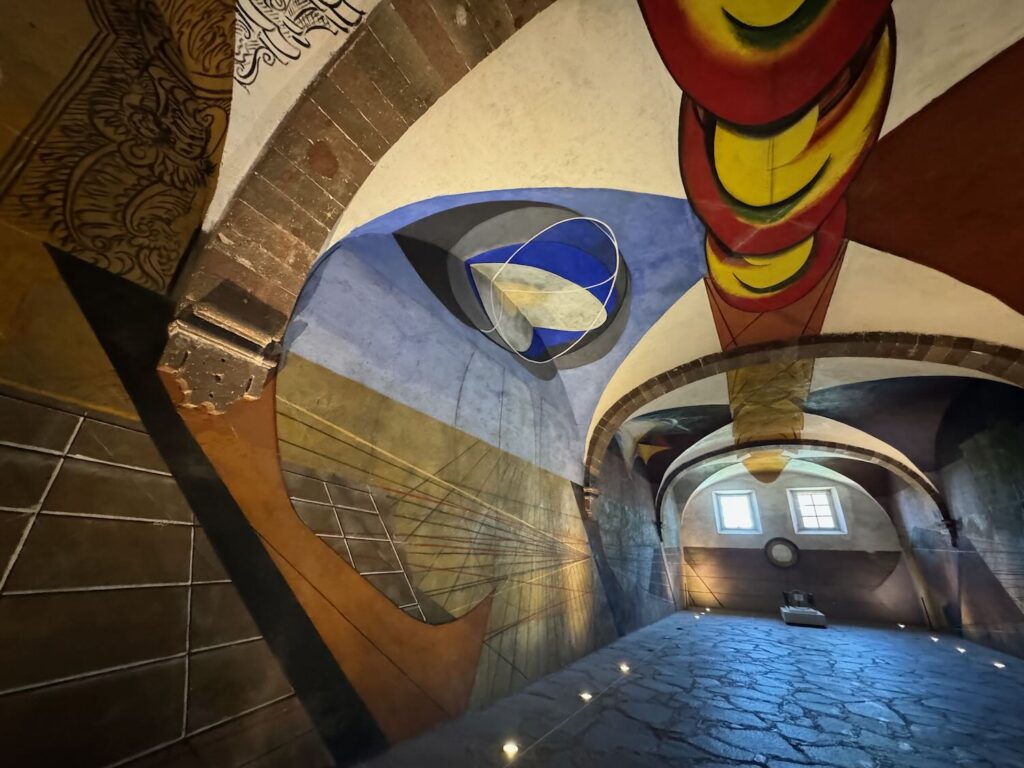
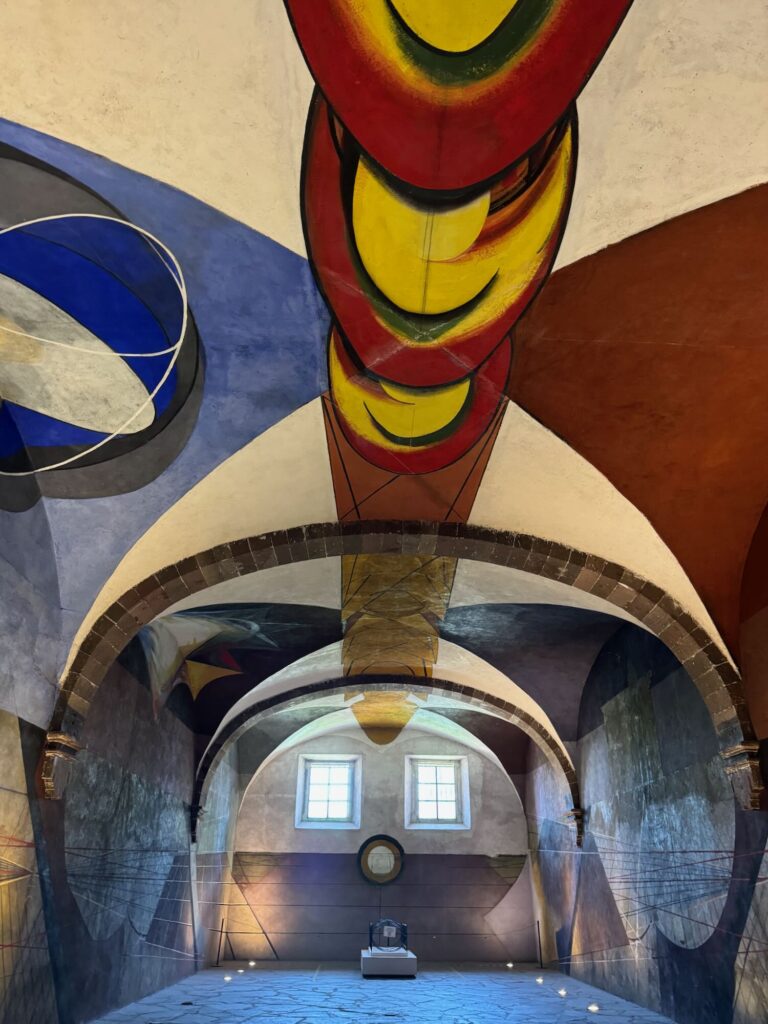

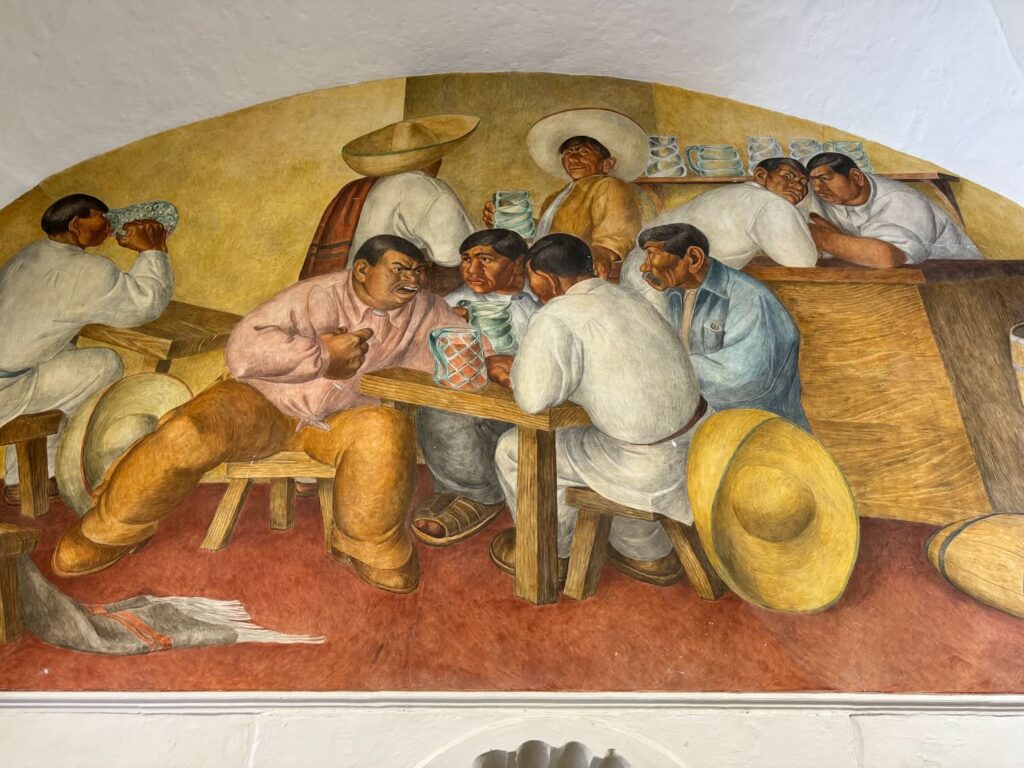
Art rests a bit when he returns and we venture out into the stifling heat and walk to the Escuela de Bellas Artes. The highlight for me is an immense room dedicated to an exceptional unfinished Siqueiros mural. The cosmic mural covers the walls and ceiling with shooting angular lines, optical circles and a projectile red and yellow flaming missile design. Stunning and other worldly. We rehydrate with icy drinks in the shady courtyard of the museum. His new Pickle Ball friends have told him of an art gallery cooperative, La Aurora Fabrica and we take a taxi to the maze of artist studios and showrooms. It’s great to have so many galleries clustered together one flowing into the other. Some good art, mostly mediocre but because of the fluid space, we are seldom cornered by sales persons and can wander on our own. Showrooms flows into courtyards into more galleries. Some spaces are bearable heat wise but crossing unshaded patios in the heat saps me.
Finding a courtyard cafe, we refuel and hydrate. A decent guacamole for me and a club sandwich for Art. With renewed strength we finish the gallery tour and take a taxi back to our hotel to rest. Our room is on the top floor and heat rises and there is no air conditioning. Our room is slightly cooler than the outside temperature and we open both door and window and watch our overhead fan whirl and move the hot air around. We shower and literally lie naked on our bed. I eventually dress and walk up to the roof top and sit in the small patch of hot shade and write. I’m acclimating to the temperature and at least it is dry heat. Several other guests come and go and we all share the one shaded table.
One man who Art played pickle ball with this morning mentioned a good restaurant that we might want to try but after the experience, I question this man’s standards? More likely he mentioned a cheap and passable restaurant. Hecho en Mexico. The courtyard is pretty enough and the service is prompt and amiable but my spinach salad leave everything to be desired. I should have known not to order a salad but because of the heat, I have little appetite. Art’s chicken mole is O.K. and he shares a few bites with me. Although, I believe that I am speaking quietly, I tell Art that my salad is disappointing. I immediately regret this when Art tells me that I have the aptitude of speaking poorly of something at the exact moment that a waiter or sales person walks by. We leave the restaurant grumbling at each other and walk the cobble stone streets back in silence. Collecting ice from our hotel kitchen we climb the 4 flights up to the roof terrace which in the cool of the evening has transformed into a blissful setting. There are 3 large seating areas but we are the only ones on the roof. We forget about our bickering and sip chilled tequila and enjoy the view of the illuminated cathedral and watch the activities on nearby roof top terraces.
Saturday, May 19th, San Miguel de Allende
We eat the hotel breakfast together and Art hurries off to pickle ball. With a cup of coffee in hand, I head to the cool of the rooftop to write. Even though the weather is delightful, the sun is such that there is only one shaded table and a French mother and daughter sit with me. They are planning their day and I give them as much privacy as possible considering the limited shade real estate.
Art returns from pickle ball and we head out for our last day in San Miguel, starting with the Museum Casa del Mayorazgo that is right off the main plaza. The museum is curated in yet another beautiful historical building and is a showcases many best artisans and craft examples from regions of Mexico.
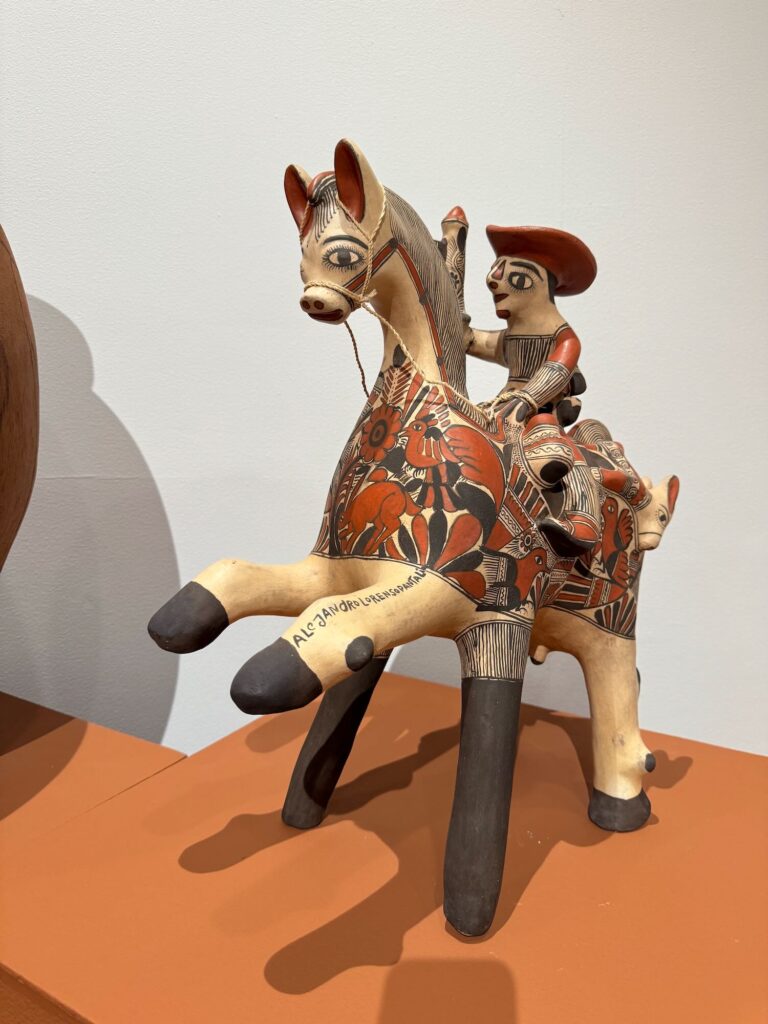
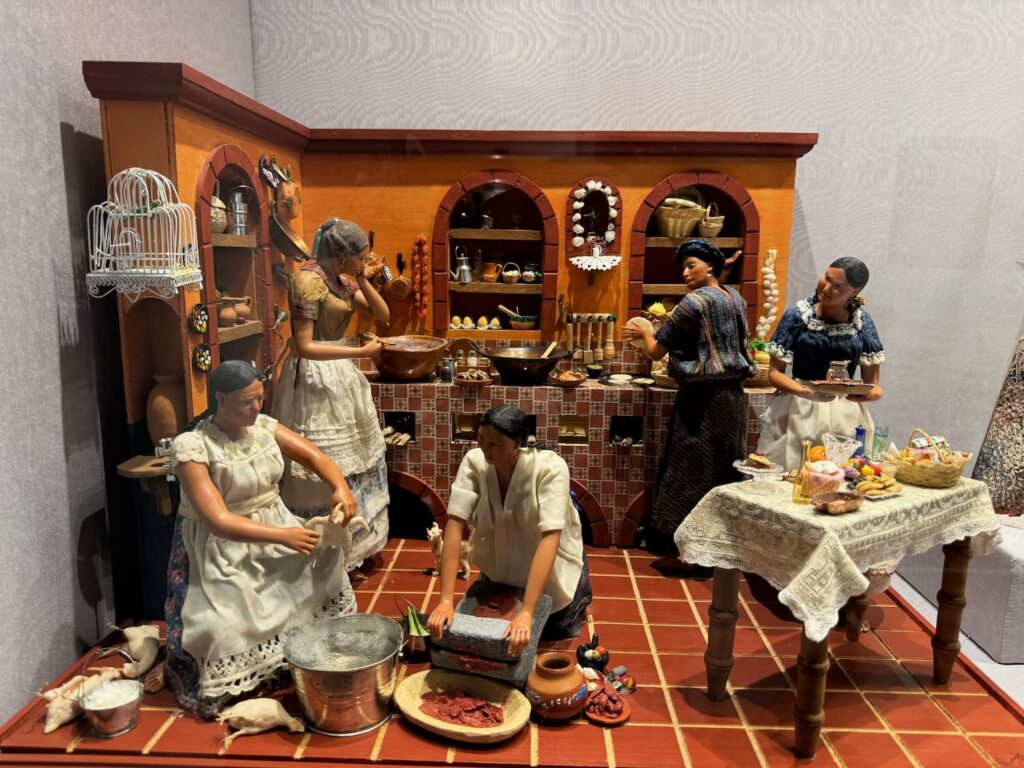
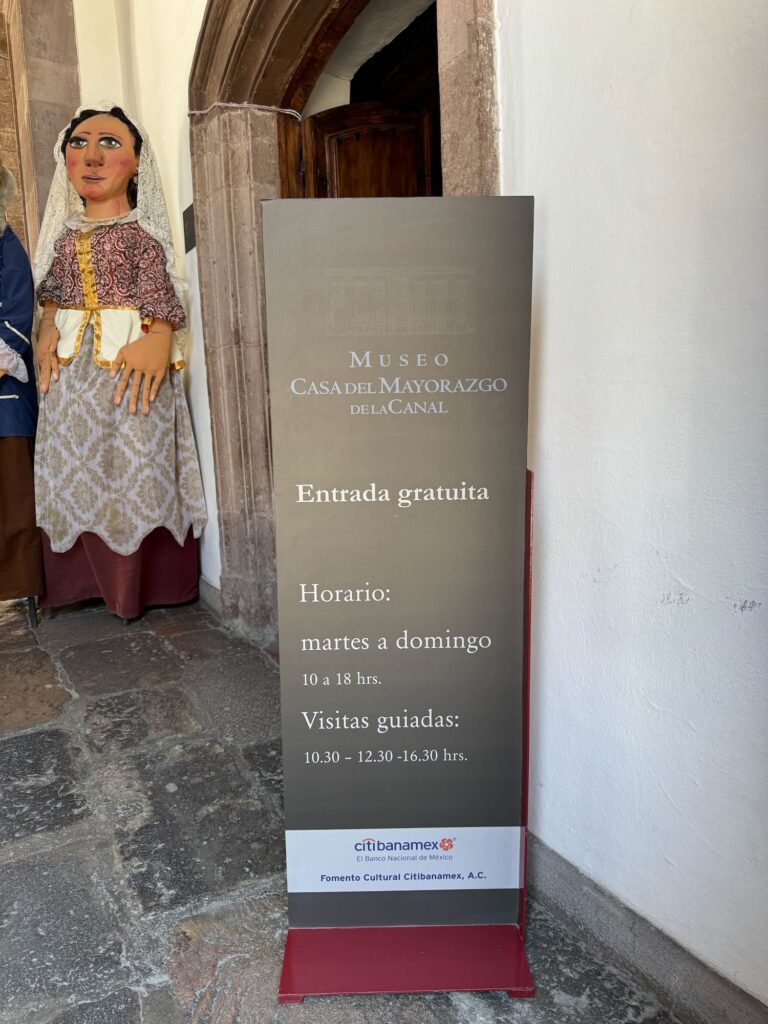
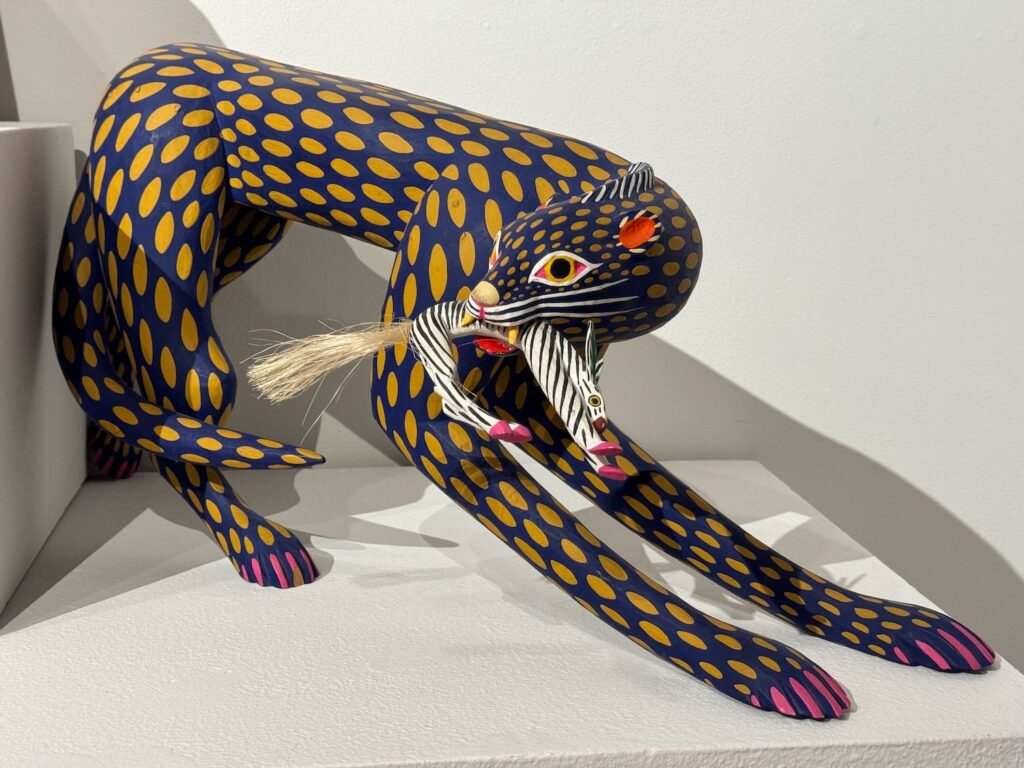
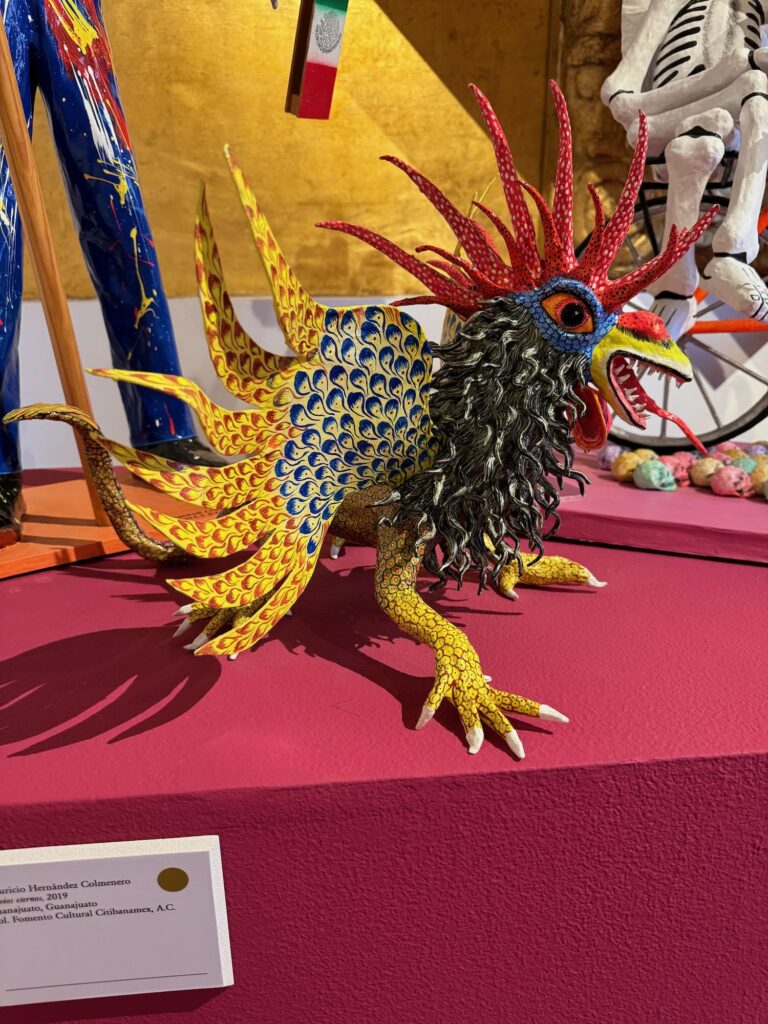
I manage to convince Art that we should hire a taxi to drive us 11 kilometers outside of San Miguel de Allende to the Sanctuario de Atotonilco. The guide book writes that this chapel is this Mexico’s “Sistine Chapel.” When we arrive the small town is void of tourists and Art wisely asks the taxi driver to wait for us since finding transportation back to San Miguel may be difficult. The simple exterior of the chapel complex is walled with cream plaster and we walk the perimeter of the complex before entering.
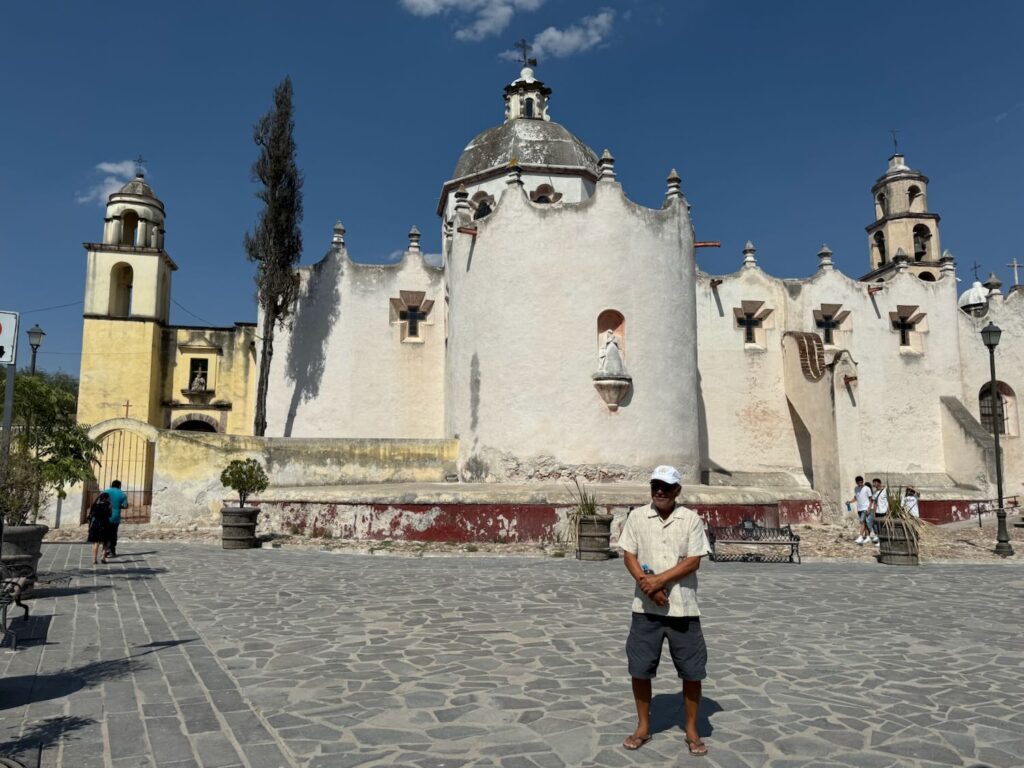
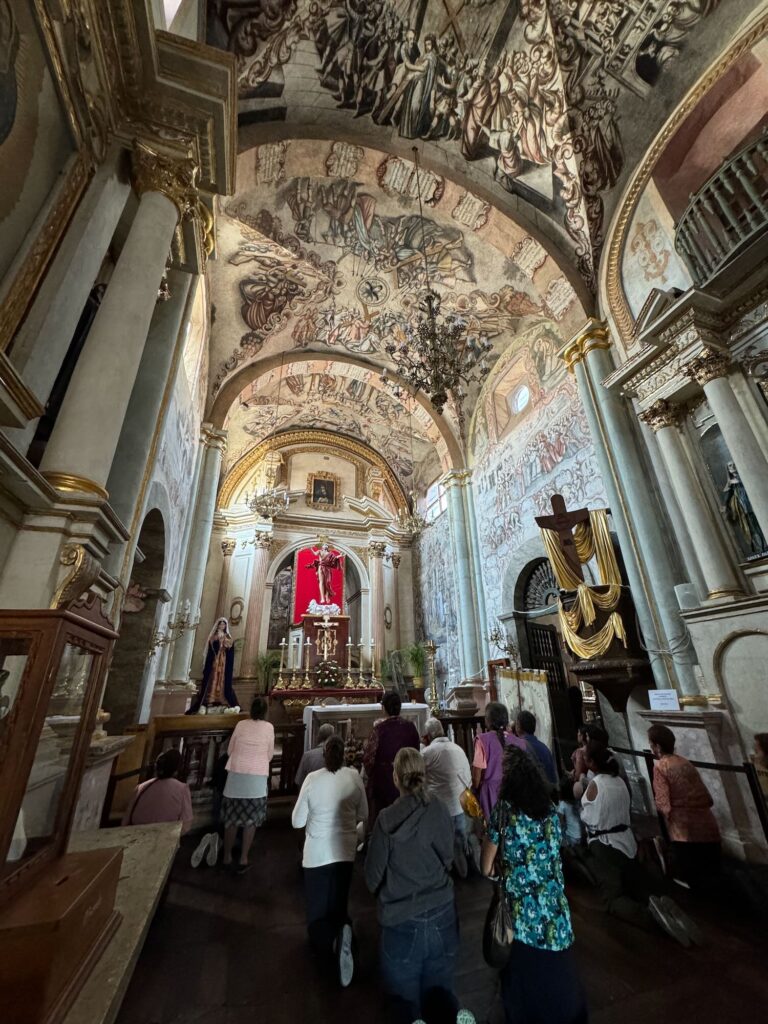
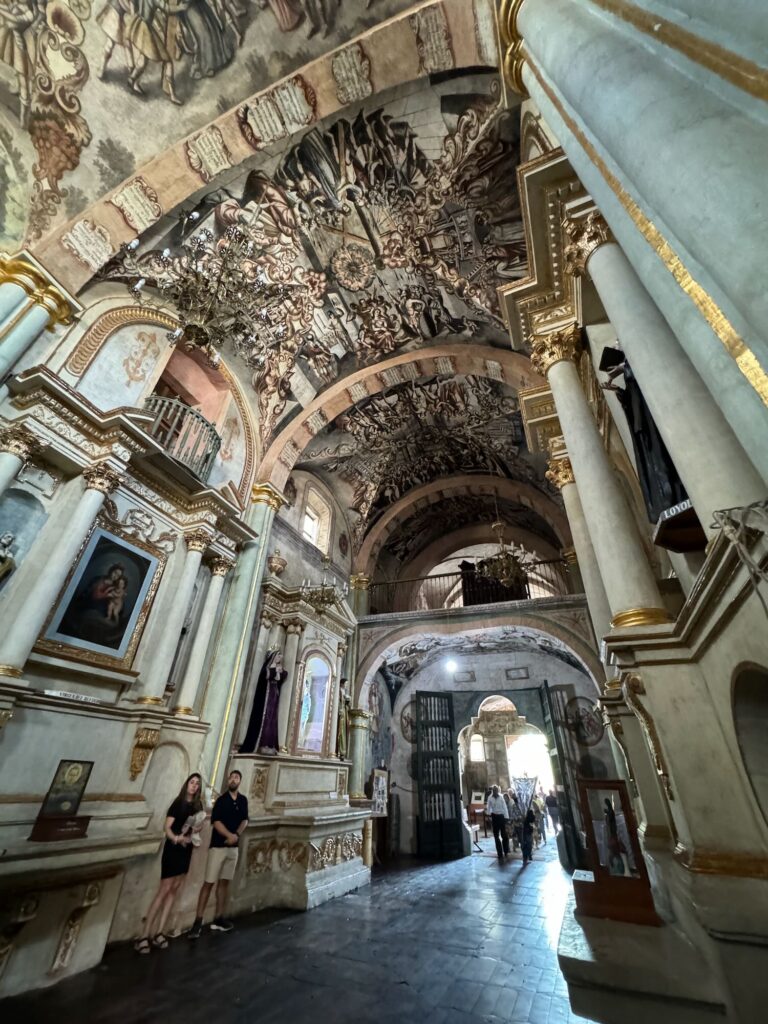
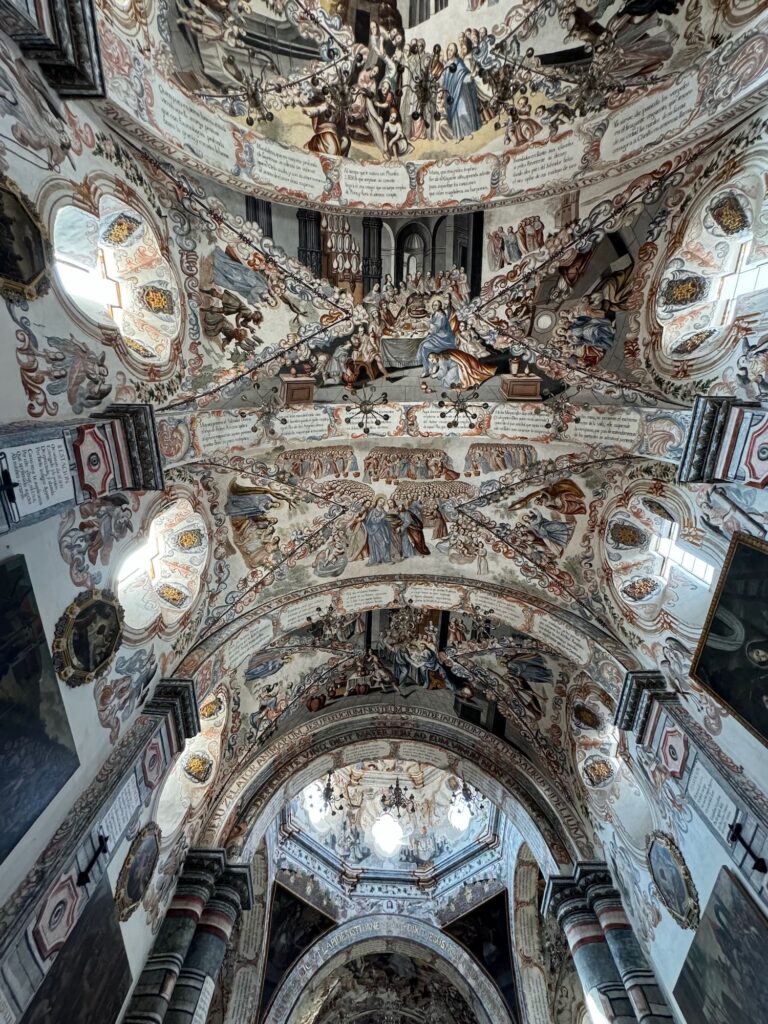
Although the chapel is nothing like the Sistine Chapel, I am not disappointed. There are groups of Pilgrims waiting to enter the chapel each holding a silken and embroidered flag denoting their particular congregation. We stand behind the first group waiting for an earlier baptism ceremony to end. When the chapel empties we remove our hats and enter as discretely as possible. Every wall and alcove in the interior of the church is painted with earth tone frescos. The many columns are topped with gold plated corinthian capitals and the statues are colorfully painted. We stand with the Pilgrims while they kneel, pray and sing together. Their chanting is both beautiful and other worldly. After about ten minutes, they rise in unison and with bowed heads, back out of the chapel.
Art and I walk around the small village that is preparing for a street festival. Tents line the street selling trinkets and good smelling food. An hour passes before we return to our taxi for the drive back to San Miguel de Allende.
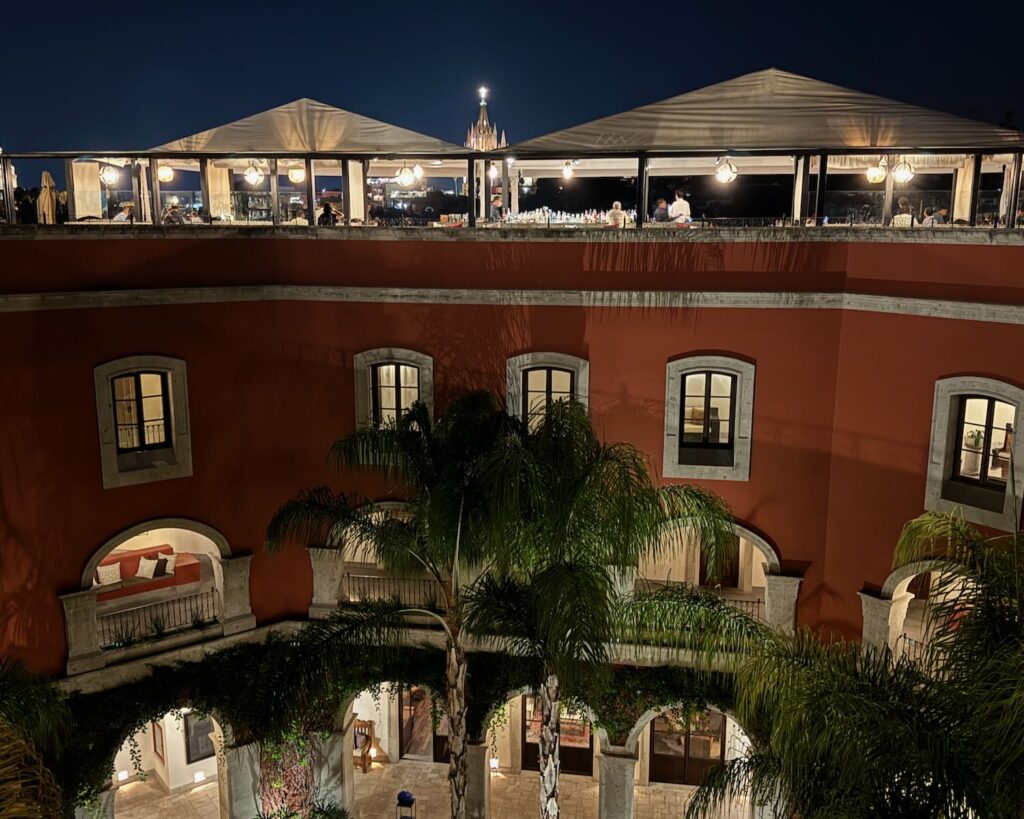
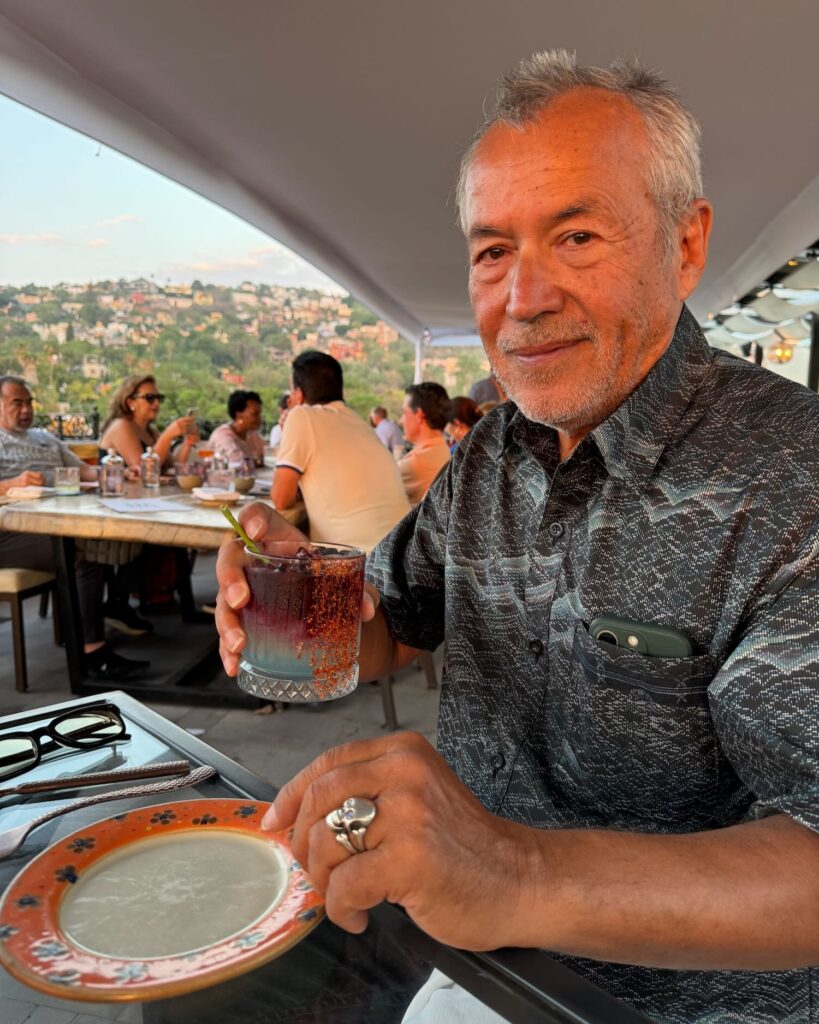
Art is trying to make up for last night’s restaurant choice and tonight we go to the Rosewood hotel and restaurant for drinks. Neither Art nor I are very comfortable in exclusive hotels and restaurants but we allow ourselves to be escorted to a rooftop table with views of the sunset and the domed and spired city beyond. The service is overly attentive but we each enjoy a tasty cocktail and share a wonderful guacamole appetizer. The waiters continually check on us, removing plates and glasses before we have enjoyed the last crumb or sip. I feel they are trying to turn tables quickly and the third time they swoop in, I smile and grab my glass with both hands making it quite obvious that we are not ready to leave. The waiter smiles and leaves us alone. Eventually, we pay the bill we wander the terrace and descend through their manicured courtyard back to the street. Still somewhat hungry, Art direct us to another pickle ball recommended restaurant that proves to be just our style. It has an innovative menu and we order and yummy chicken brochettes with grilled jicama and peppers and another round of drinks. The designer or possibly the owner of the restaurant comes to sit with us and we can feel that an unwanted party is beginning to unfold. Art and I make polite excuses and walk the cobble stone streets back to our hotel.
Sunday May 20th, San Miguel de Allende to Guanajuato
Our taxi to Guanajuato will come at noon so Art has another morning to play pickleball and I can spend another morning on the rooftop writing. It is Sunday morning and guitarist is playing for brunch guests on a nearby rooftop so I am serenaded as I write and blissfully alone. The 1-1/2 hour taxi ride costs 1000 pesos or about $65.00. I don’t know it yet, but Guanajuato will be my favorite of the three cities we visit on this trip. Guanajuato is in the colonial heartland and is one of Mexico’s most beautiful silver cities. It is built in a rugged ravine and the colorful houses climb up along the hillsides. The twisted streets are home to beautiful churches, shaded plazas, ornate Colonial architecture and the fabulous Jaurez Theater.
Many of the streets are one way or unaccessible to traffic so our taxi driver lets us off a street below our hotel. It’s a bit of a challenge to maneuver our luggage up the alley way stairs but we manage and I stand watch over the luggage as Art walks half a block down and checks into the La Casa de Don Lucas Hotel. The hotel is in the heart of town which is a top priority for me. I want to be able to walk to cafes, museums and watch humanity stroll by. I requested a 1st or 2nd floor room and they accommodate us with a huge, odd and very dimly lit suite. We have a separate bedroom with two queen beds and an interior window looking over the hotels patio cafe. I rather like this. The sitting room is furnished with spindly but a nice antique couch, chairs and tables. A wet bar, refrigerator and microwave are in the far corner and beyond that is a small but well appointed bathroom. Once our eyes adjust to the dim lighting and we are able to figure out how to turn bedside lights and how to plug in our electronics I am quite happy with this room. Within 10 minutes we have regrouped and head out onto the street in search of a late lunch.
Apparently the city is preparing for a festival and there are food booths lining the street. It is now past 2:00 P.M. and finding lunch is our top priority. We walk a block down reading cafe menus. Nothing stands out since they all serve traditional Mexican dishes that we are bored with. I quickly acquiesce when Art suggests one of the street food stalls. The grill sizzles and there are many Mexican families sharing long plastic covered tables and the food looks fresh and ample. We order chicken taquitos to share and do not ask the price. Minutes later our ample plate arrives and we dig in. The food is mediocre but we eat heartily and Art is shocked when he asks for the bill. Both of us expected that the prices would be considerably less than if we were to order the same thing in one of the adjoining cafes. We pay our 250 pesos and walk towards the central plaza. Art hates to feel taken advantage of and grumbles as we walk toward the central plaza. I urge him to let it go.
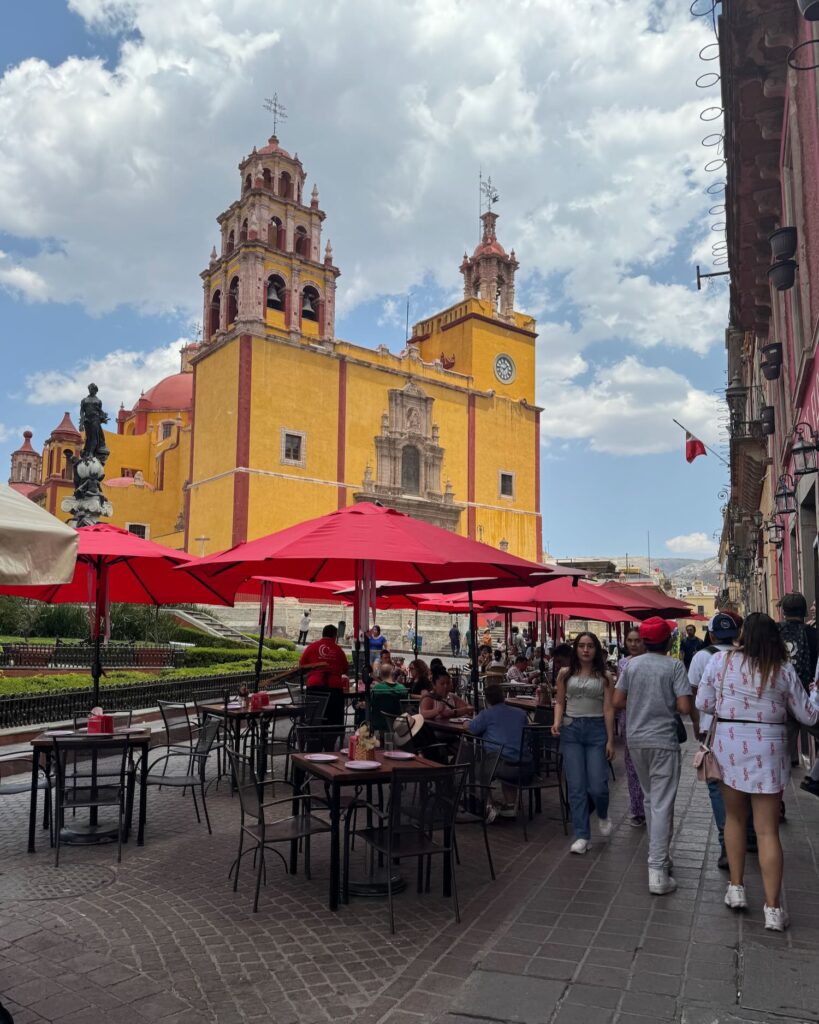
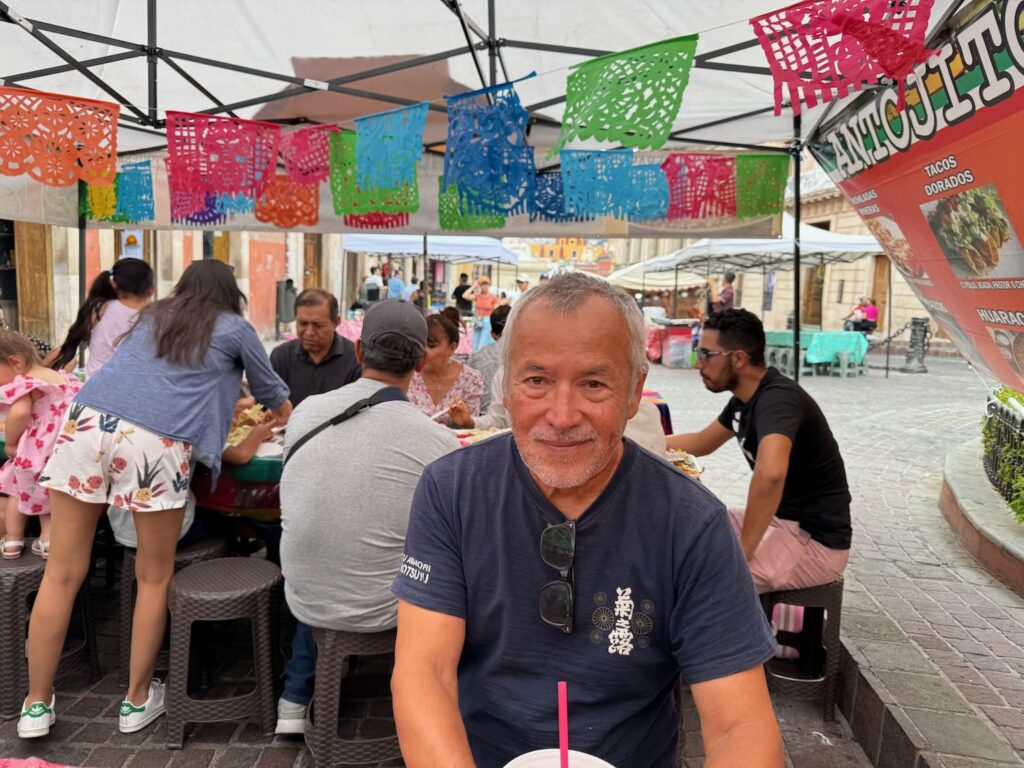
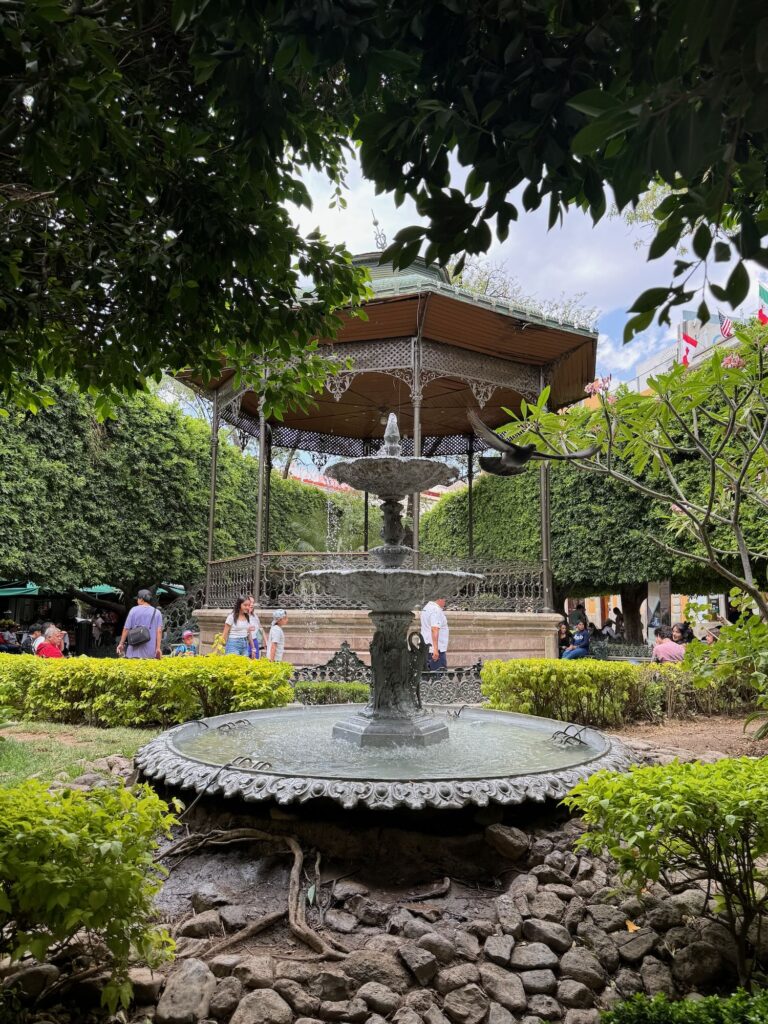
Guanajuato is in the Colonial heartland and is one of Mexico’s most beautiful silver cities. It is built in a rugged ravine and colorful buildings climb up along the hillsides. We wander the twisted cobblestone streets and come to a lovely tree shaded plaza. It is another brutally hot day and these plazas with their wrought iron benches are a welcome rest. The Jaurez Theater adjoins the plaza and we climb the stairway intending to enter but we are informed we need a ticket. Along side the theater is a tiny kiosk and we pay the minimal amount and return to the entrance. It was built in 1903 and is a good example of Mexican Neoclassical architecture. Doric columns support a facade that it crowned with 8 bronze muse sculptures. Two bronze lions flank the entrance. Inside, I feel that I’ve been transported by magic carpet to an Arabian Nights fairy tail. Every surface of the decorative interior is embellished with ‘peacock’ fans of tile, gold leaf, red velvet and crystal chandeliers.
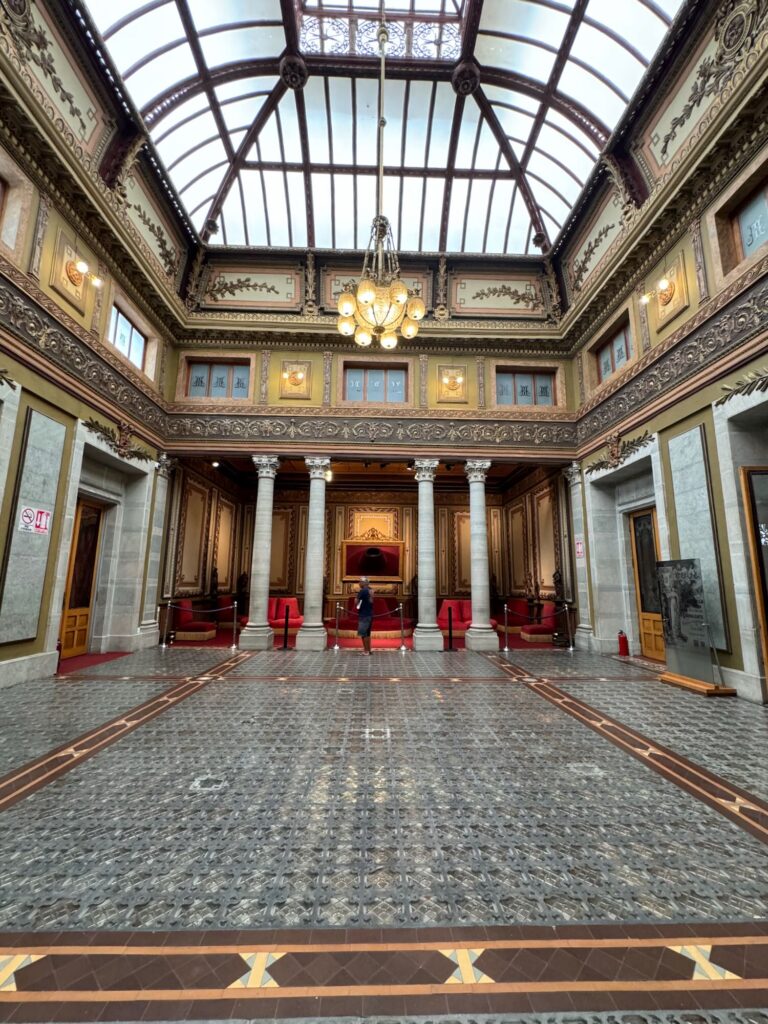
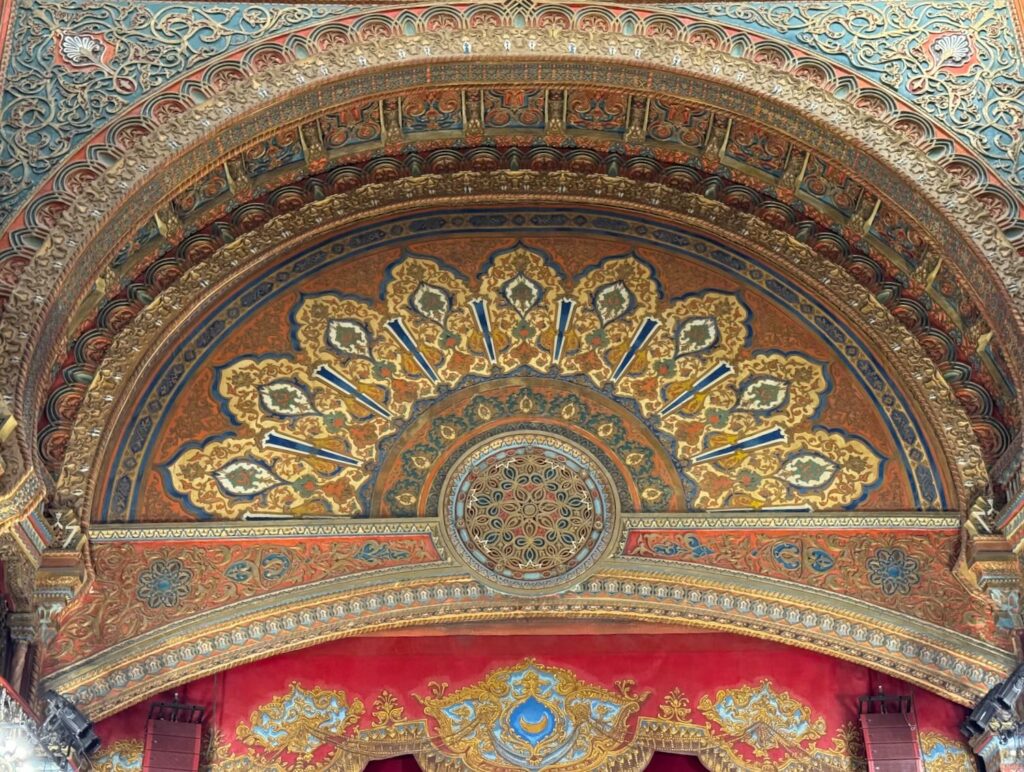
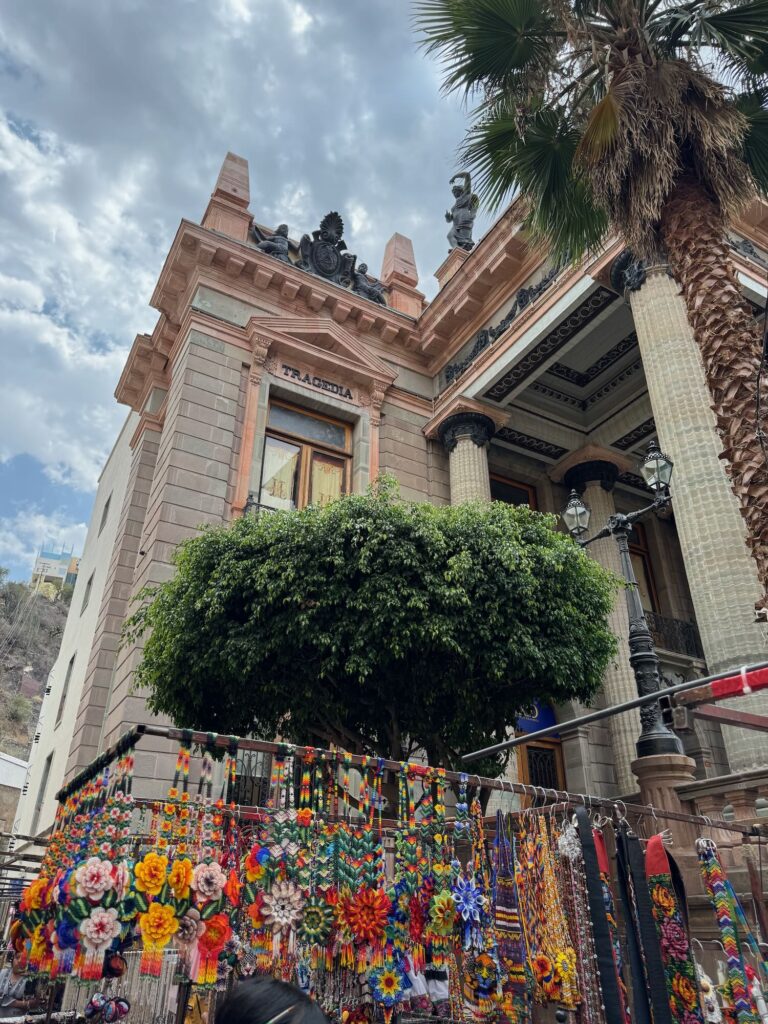
Art and I wander the twisted streets. The alleys are picturesque and the city feels very European.
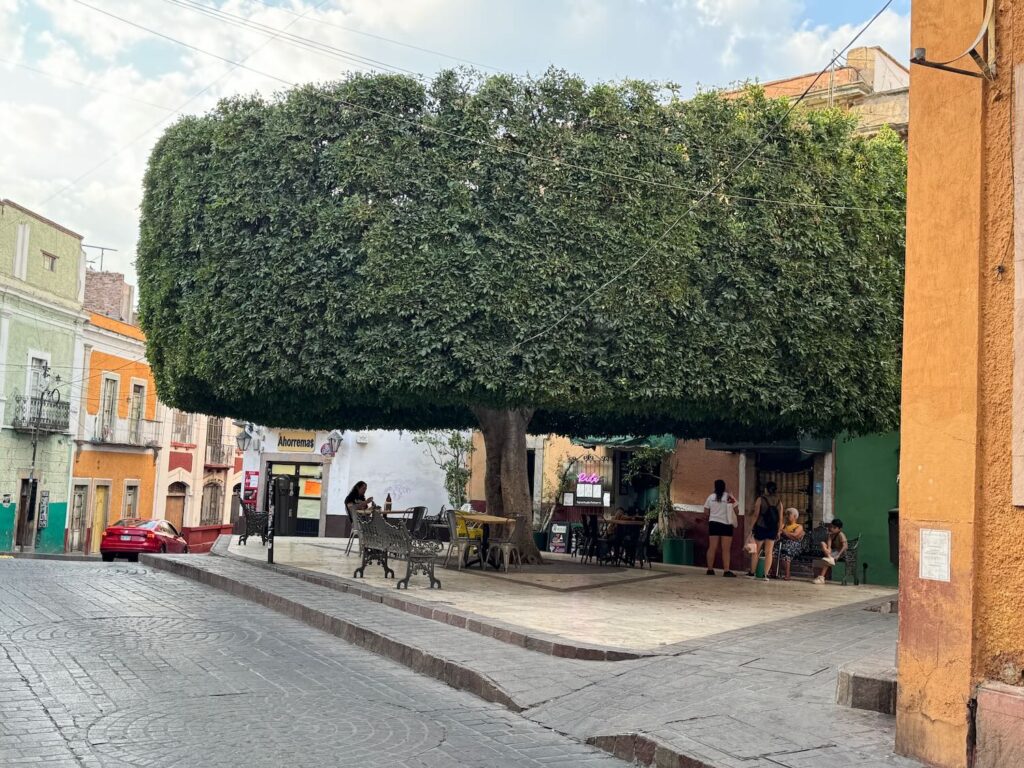
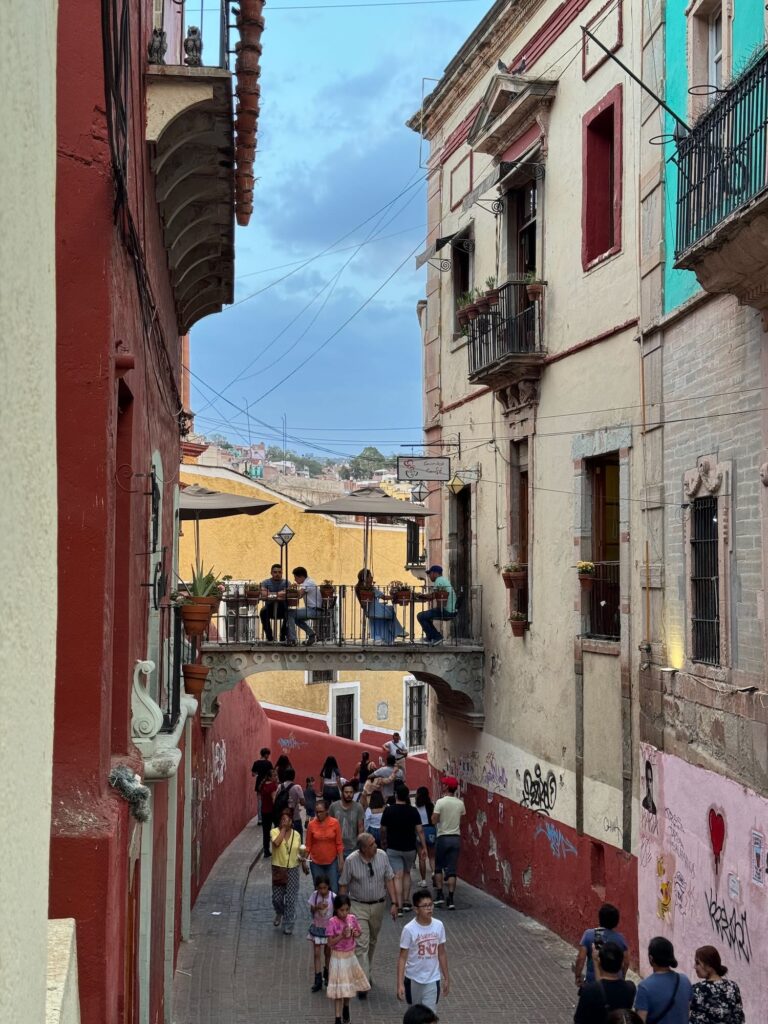
On the curbs sit children selling straw burrows, young girls with bouquets of flowers, a blind mother and son sing beautiful operatic songs and then I see a young man of about 15 sitting against a dirty wall selling fried scorpions, grasshoppers and tiny fried fish. I don’t usually intrude and ask for a photo but I ask this young man and he beams and gives me a thumbs up! Next door is a tiny bar and Art asks if I would like to have a pulque and we step into the small dark room and order 1 pulque and 1 mescal. Pulque is a traditional Mexican fermented alcoholic mead made from the Agave plant. Mescal is distilled but also made from the Agave plant. Art’s pulque drink is large and milky and comes in several flavors. We order a second round (of course only to sample a second flavor.) We consider a third round and Art says he might eat a scorpion if I allow him another round and watching him eat a scorpion is a tempting offer, but I nudge him forward to pay the bill which is about $5 for two rounds of drinks. The overpriced taquitos we ate earlier are now forgotten.
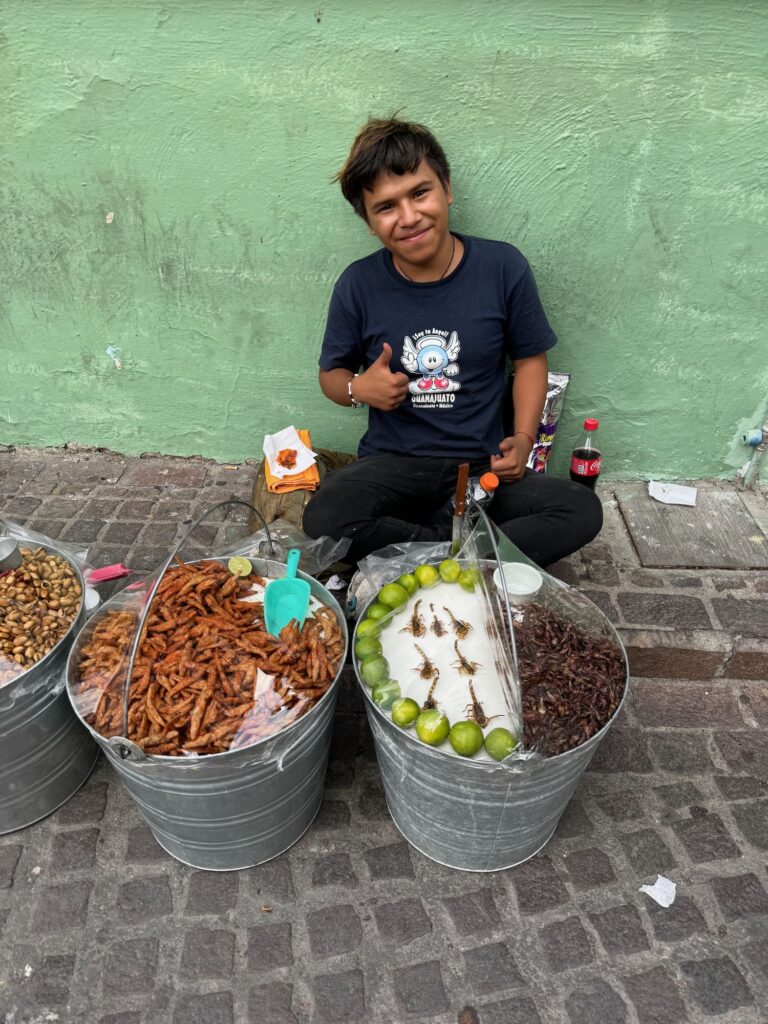
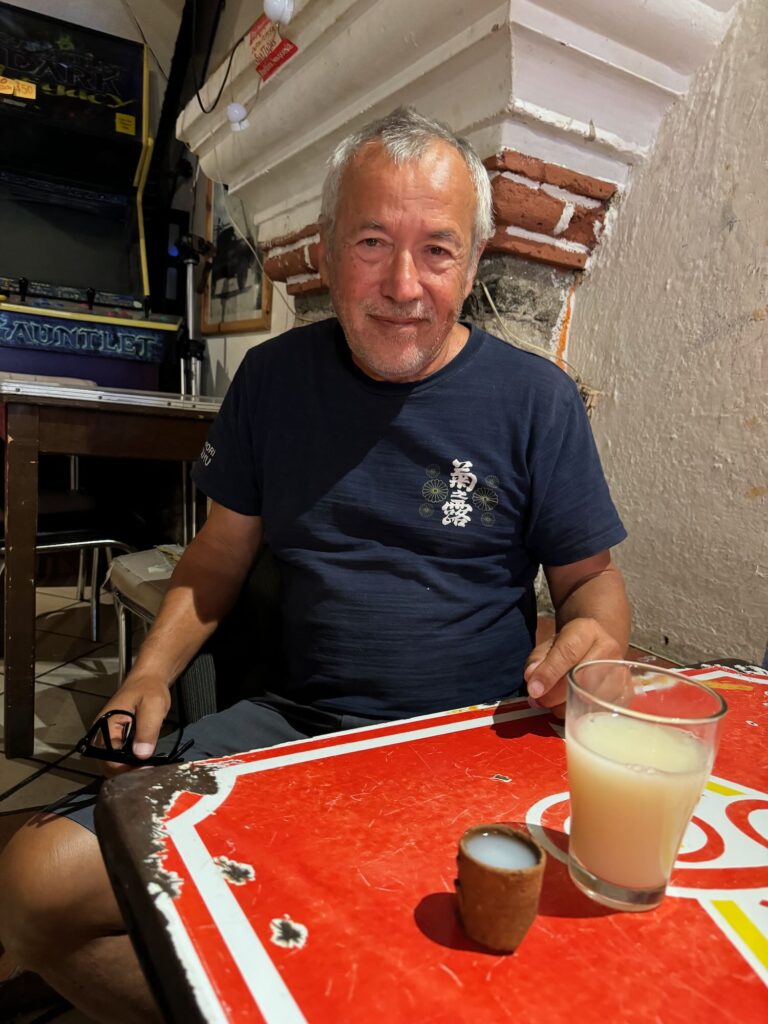
We walk to the Don Quixote museum which is mildly interesting and as I’m sure you can guess, every painting and sculpture features Don Quixote.
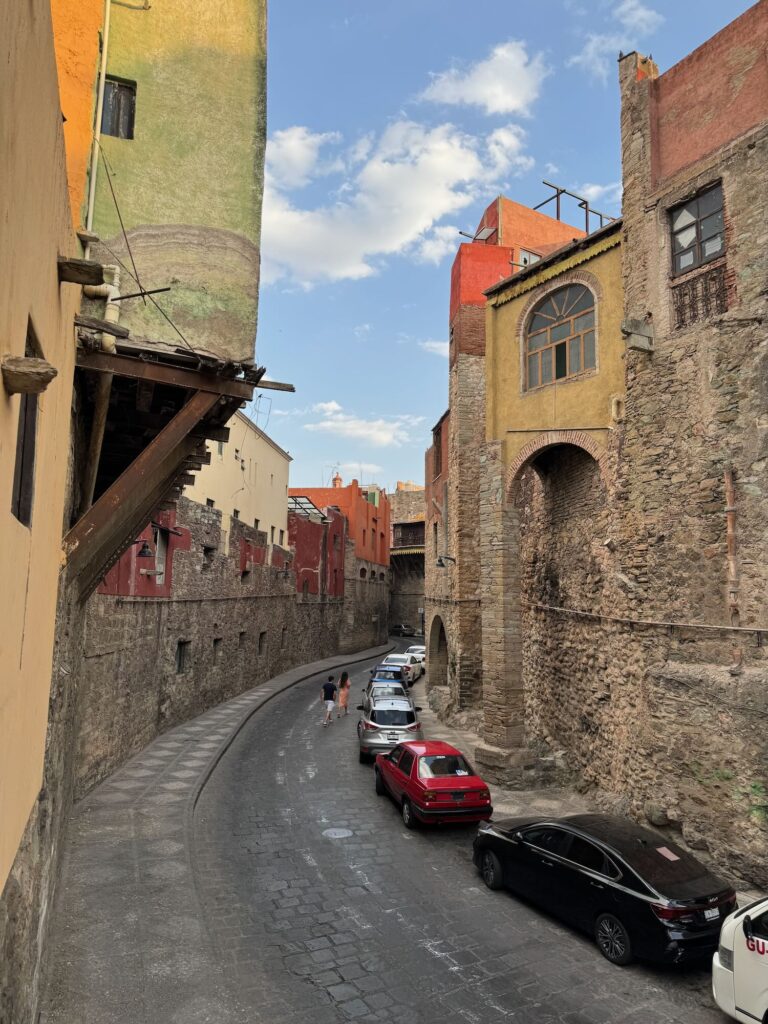
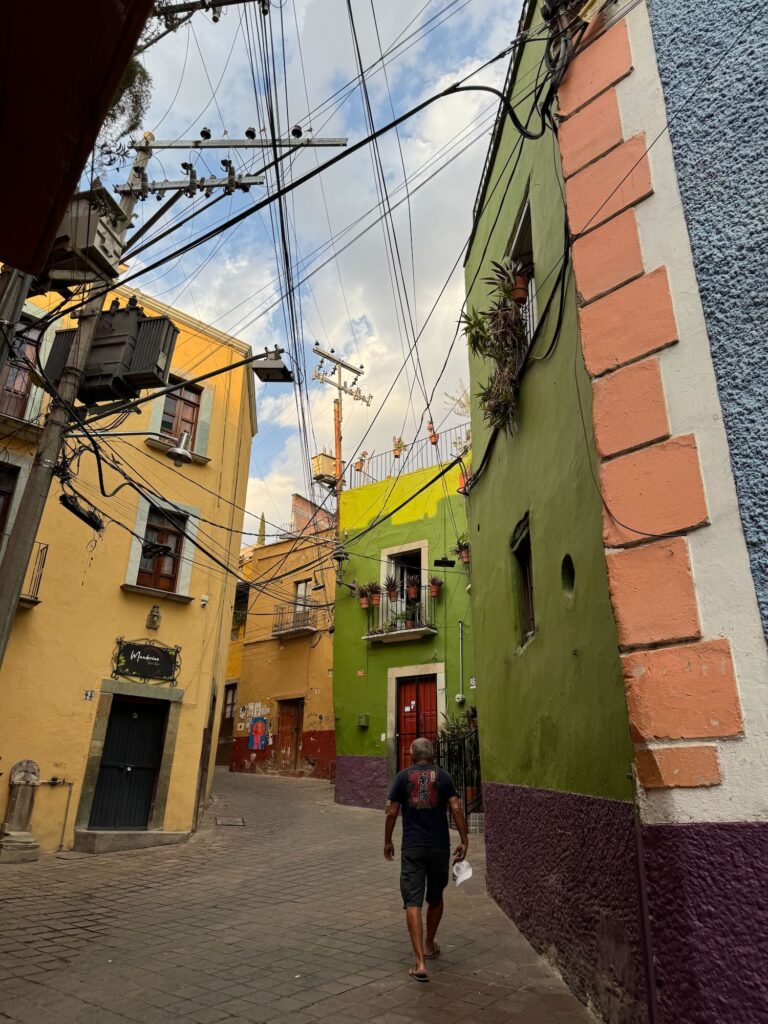
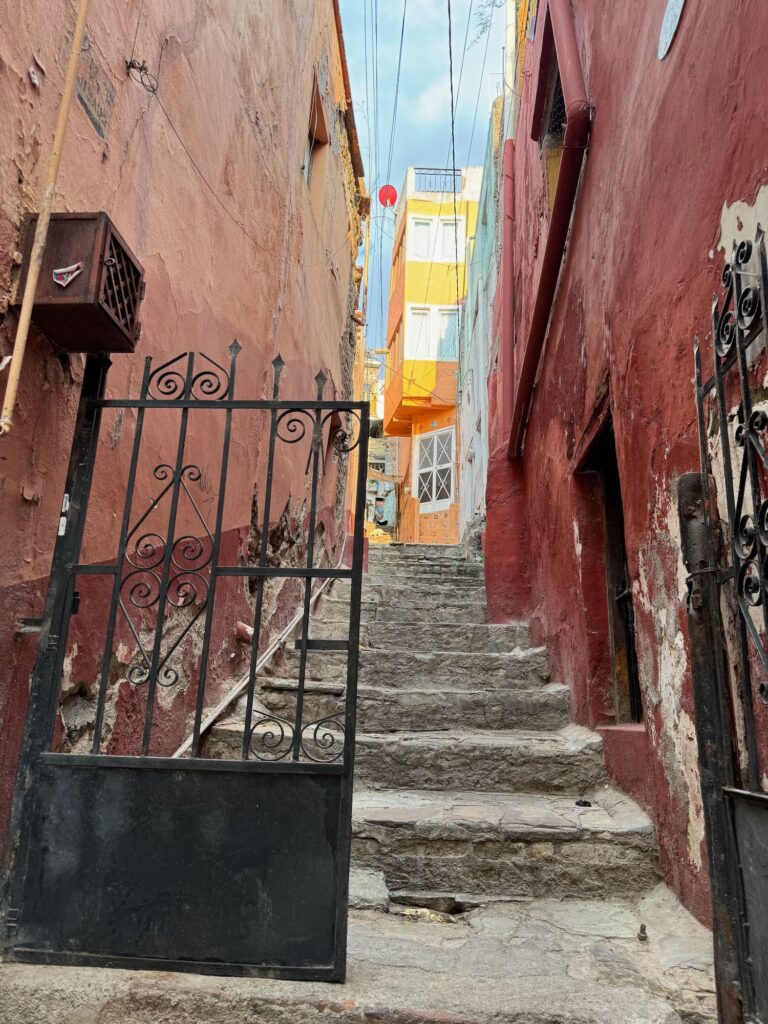
Leaving the museum, we wander other streets and I soon have the central district mapped in my mind. Our stomachs remind us it’s dinner time and the guidebook recommends an unassuming deli that specializes in Japanese food. We find it easily and I order fresh spring rolls and a salmon roll. Art chooses a Bento Box and he points to a selection of cold salads, several mayonnaise based. My meal is reasonably good and a welcome break from Mexican food. Art wolfs his down but his will come back to haunt him over the next several days. I always want to prolong our evenings out and I urge Art to sit at an outdoor cafe off the plaza by the Jaurez Theater. It’s beginning to get dark. Our drinks arrive and I hear the familiar sound of a whip cracking, leave our table and go to the street to see a parade approaching. (Why you may ask, is whip cracking a familiar sound to me? Do enough Renaissance Festivals and whip cracking becomes a pretty common theme at the stage shows.) There are young boys dressed like devils, cracking whips dangerously into the crowd followed by dancers, horn blowers and drummers. I fast walk back to the table and give Art his chance to investigate the parade.
We pay our bill we watch the deafening parade of marchers, elaborately feathered and beaded dancers and a dozen strong men march carrying an alter to the Virgin Mary in the manner one might carry a coffin. My ears still ring when we are back inside our hotel room. I realize that having a hotel directly off the main street during a fiesta may not bode well for a restful sleep.
Monday, May 21st, Guanajuato
This is our only full day in Guanajuato and it seems that all the museums are closed on Monday’s. Going to the Diego Rivera museum was top on our list. Diego Rivera was born in Guanajuato so the museum is both his home and a museum. My only consultation is that I really love this city and that means we will need to return another time. The guide book suggests taking the funicular to the top of the hill so after a mediocre hotel breakfast we set out on foot to the station. I’m not wild about air trams or funiculars but the tracks haul us up a nearly vertical incline and we dutifully take photos from the viewpoint of the colorful city below.
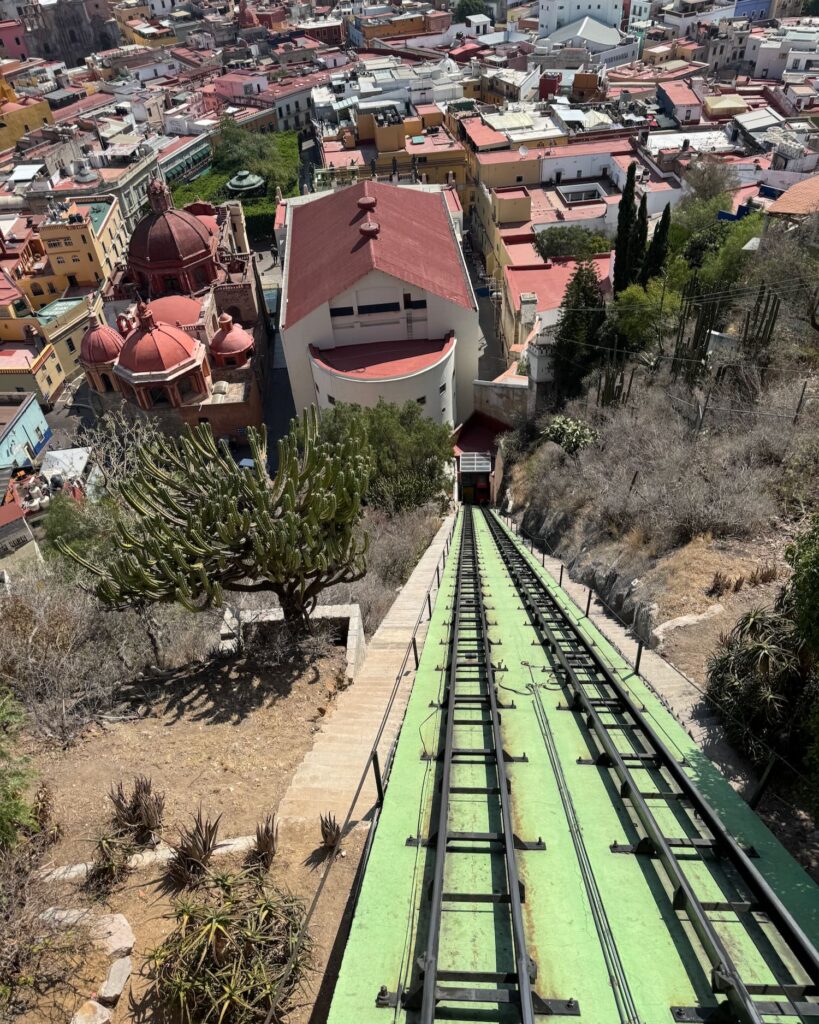
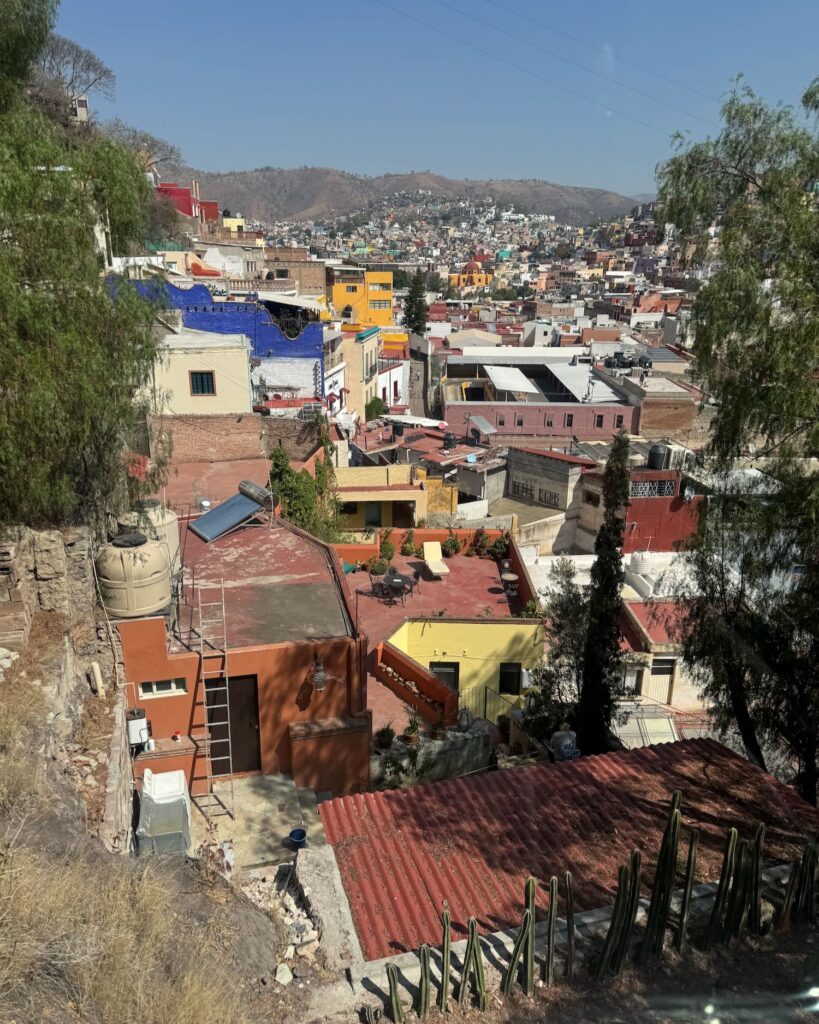
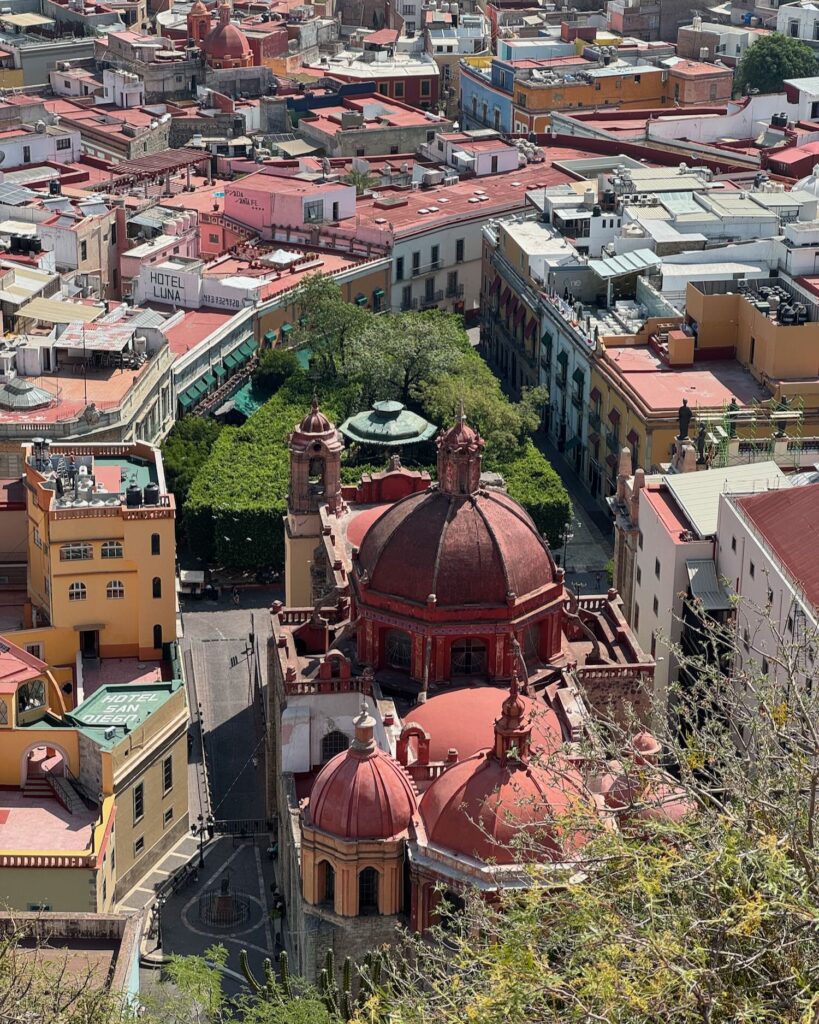
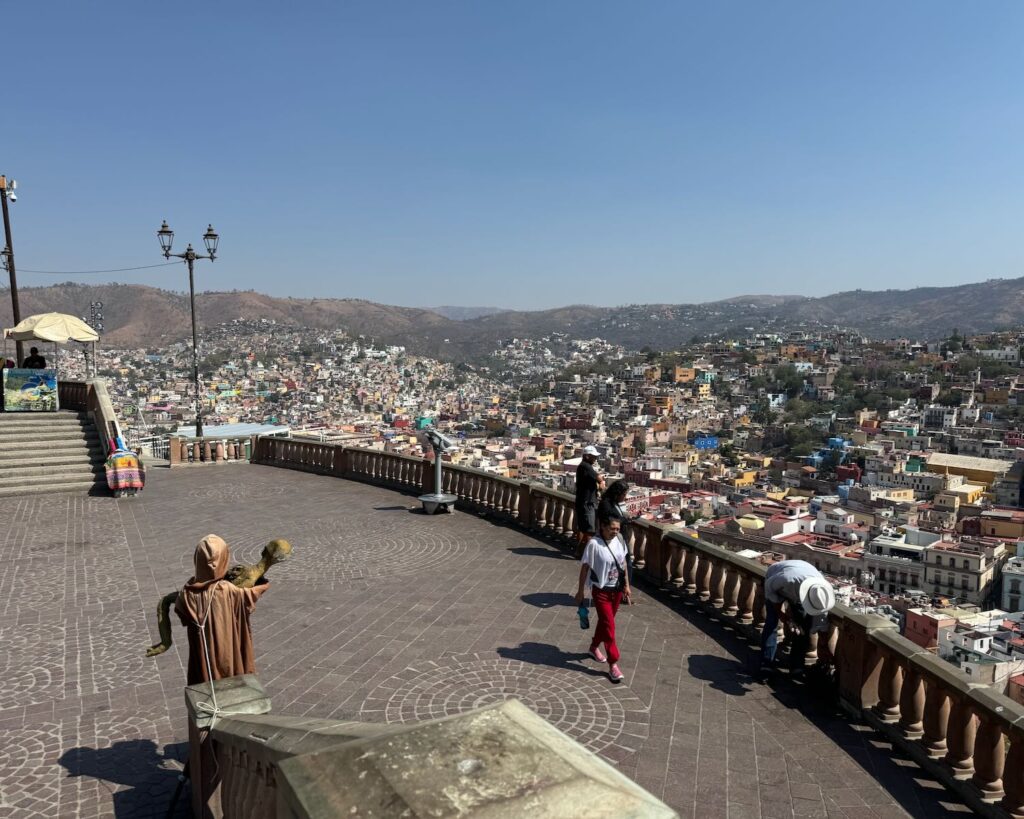
silver mine of Bocamina San Ramon is one of the few things open today and after walking through the covered food market we find a taxi to take us to the mine. The taxi ride takes us up into the hills above Guanajuato to the Valenciana mining district, down a narrow road and deposits us at the entrance to the mine. We pay the modest entrance fee and join a small Spanish speaking tour. The small museum doesn’t need much interpretation. There are dioramas of the mine shaft and examples of the ore and then there is the 60 meter climb down the shaft that is open to the public. The steps are uneven, tall and rock hewn with a cable hand rail on both sides of the tunnel wall. It looks challenging but not impossible and we go down. Down is harder than the upward trek but somewhere along the way, I injure myself or over stress my muscles and by the time I am back above ground, I can barely walk. Unfortunately, we must walk as there are no taxis and I want to visit the Templo La Valenciana, described as a magnificent church with a dazzling interior and golden alters. It’s Monday so of course it is closed.
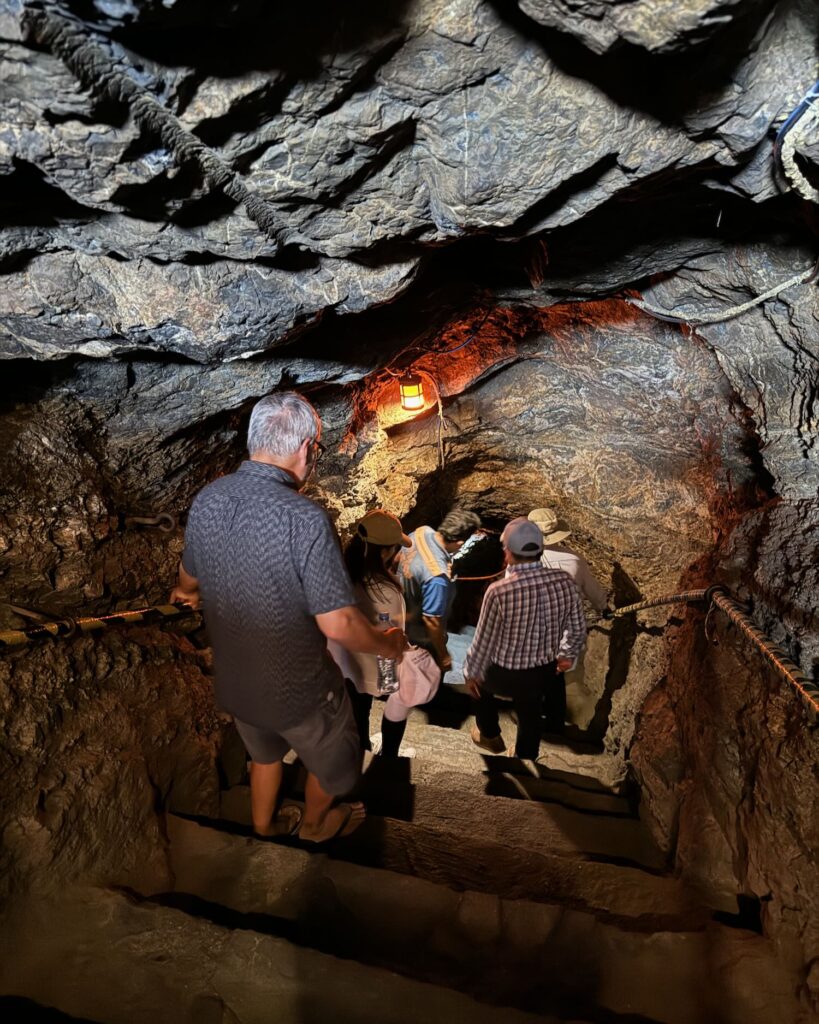
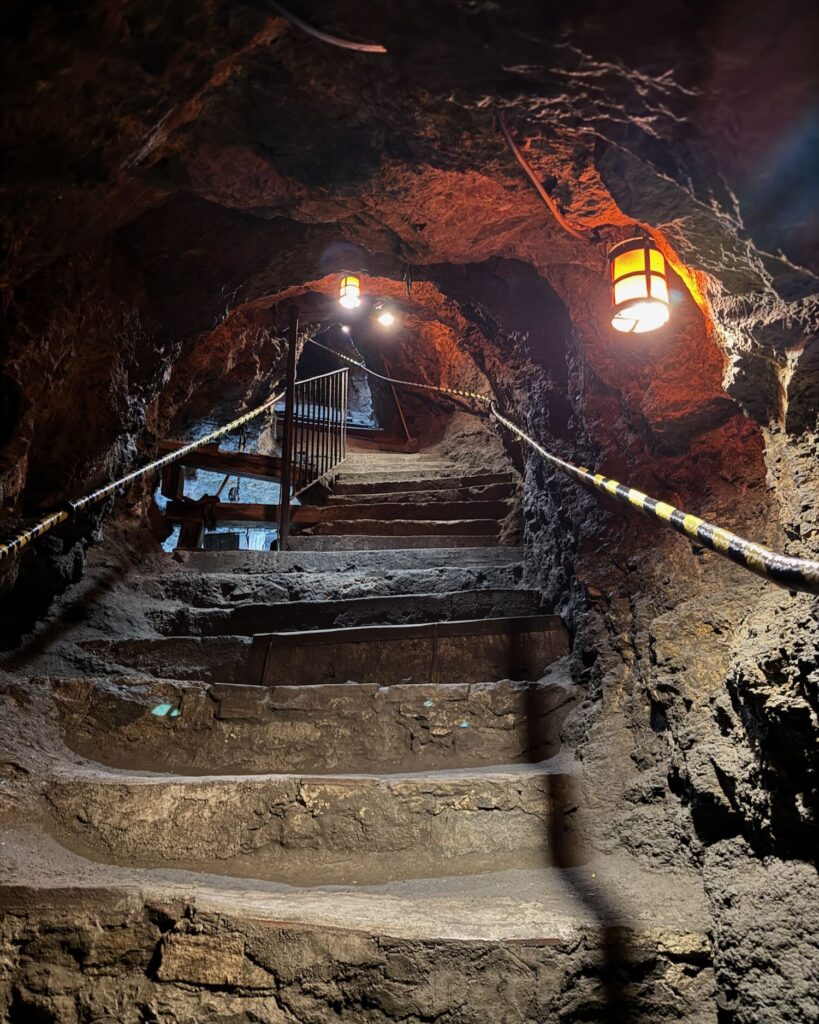
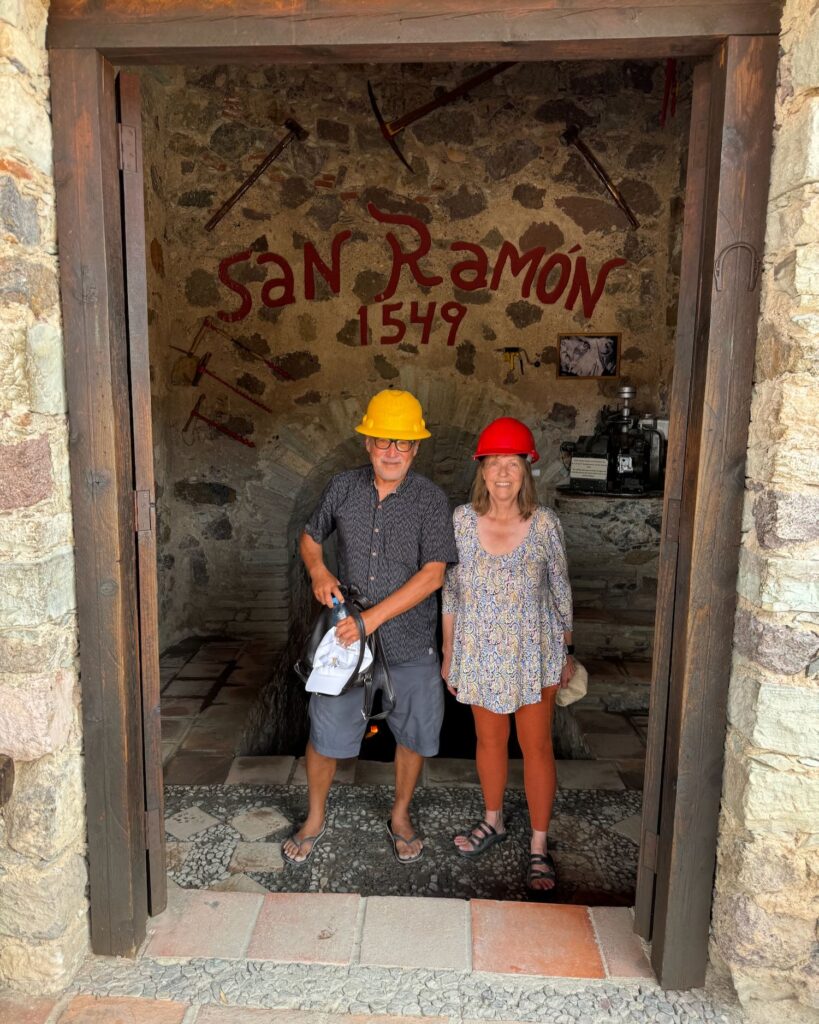
We stand in the hot and dusty hillside square looking vainly for a taxi to take us back into the city below. A city bus fills before we can board. Seemingly, a long time later, another bus arrives and we are able to get on and find a seat. I am blissfully happy to be careening down the road, sandwiched among locals and watching the scenery pass by.
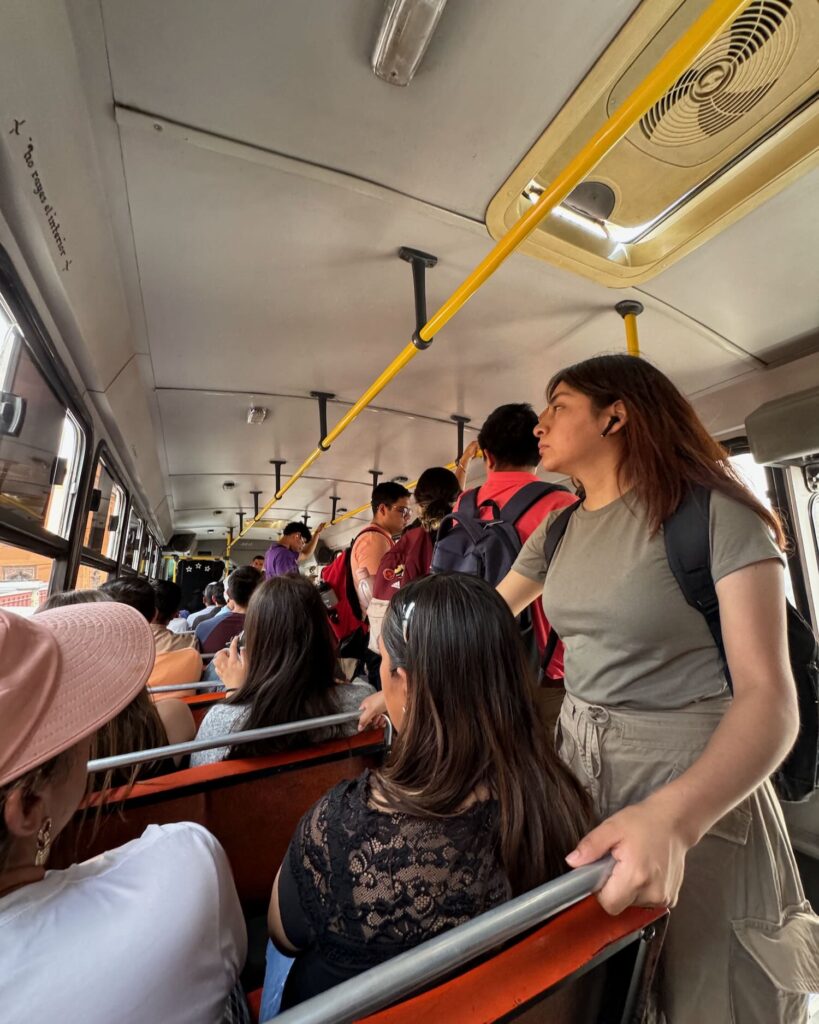
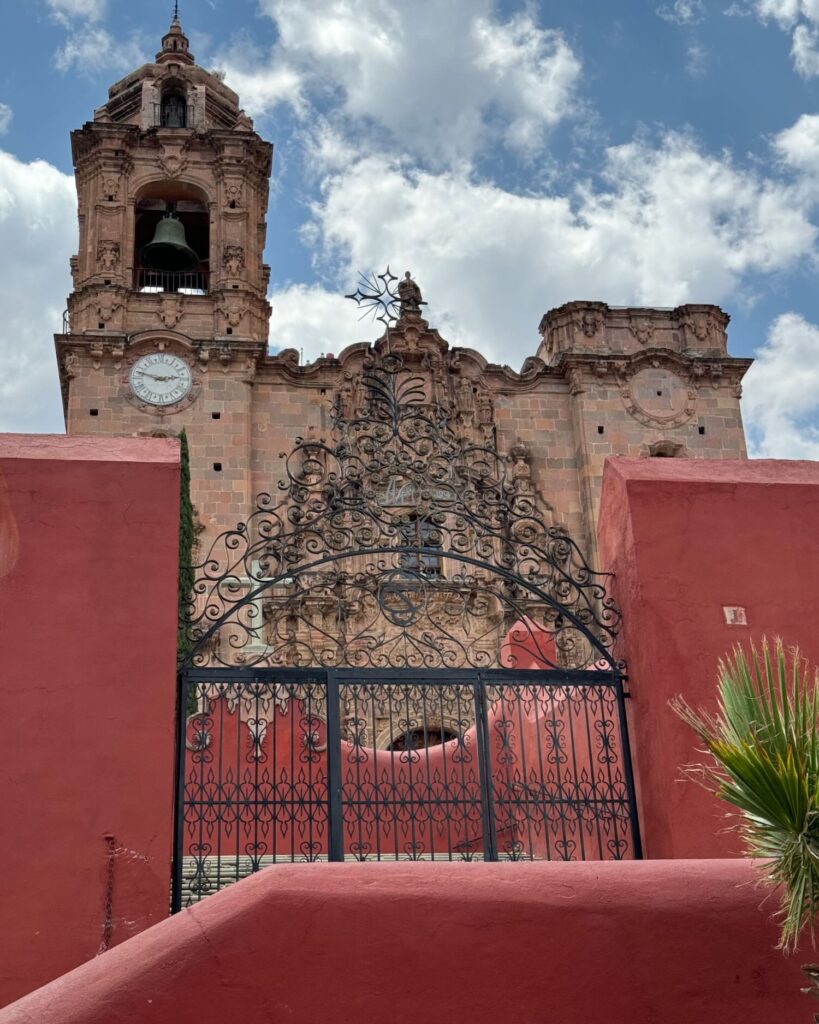
Back in Guanajuato, we feel we have earned a splurge and have a late lunch at an upscale restaurant just off the main square. Surprisingly, it is not much more expensive than the other places we have eaten and the salad is innovative and fresh and the chicken dish, smothered with a fruity sauce is quite good. Our meals are accompanied by bread and tucked among the rolls are two sweet bread pastries that are custard filled and melt in your mouth delicious. We walk back to our hotel to rest.
It’s our last night of the trip and we must wake early and take a taxi to the Leon airport. As dusk settles we walk back to the square, eventually settle on a corner upstairs restaurant and score a balcony table overlooking the bustling square below. The moon is nearly full and hangs low in the sky. This is the perfect end to a whirlwind week in the Colonial highlands of Mexico.
Tuesday, May 22nd, Guanajuato to Leon to San Jose California.
The taxi arrives precisely at 5:00 A.M. The 35 minute ride to the international Leon airport costs only 700 pesos or about $40. Checking in and security is seamless but we are hungry and there are no good airport options. Two cappuccinos, a Croque Monsieur and Eggs Benedict set us back over $50. Unfortunately the food is truly terrible and when we board Volaris Air charges for water and even snacks. We share a bag of jalapeño potato chips and a coca cola. The plane is half empty and Art makes room for me to curl up on two seats and rest my feet on his lap. For me the three hour direct flight is painless enough and we land in San Jose at 10:30 A.M. Our car is in long term parking, the shuttle comes quickly and we and head straight to Japan Town for an early lunch.

